ON THE ROAD AGAIN
HOW DOES THE NEW NORMAL LOOK?
INVESTING IN NEW ENERGIES
FUTURE RULES DISCUSSED
DANGERS OF BATTERY VEHICLES

THE INFORMATION SOURCE FOR THE INTERNATIONAL DANGEROUS GOODS PROFESSIONAL SINCE 1980
MONTHLY SEPTEMBER 2023
IN PARTNERSHIP WITH TSA Tank Sto ge Associa on
CIMC SAFEWAY TECHNOLOGIES CO., LTD.
Globe Sales Contact:
NO.159 Chenggang Road, Nantong, Jiangsu, China 226003
Tel: +86-513-85066022 (Sales)
+86-513-85066888 (Switchboard)
www.cimctank.com
E-mail: tanks@cimc.com
Europe Sales Contact:
Middenweg 6 (Harbour nr.397-399) 4782 PM
Moerdijk , The Netherlands
Tel: +31 880 030 860
www.cimctankcontainers.nl
E-mail: info@cimctankcontainers.nl
AFTER SALES DEPOT SERVICES
CIMC SAFEWAY TANK SERVICE CO., LTD.
MANUFACTURE SERVICE TECHNOLOGY
BURG SERVICE B.V.
Middenweg 6, 4782 PM, Moerdijk, The Netherlands
Tel: +31 88 00 30 800
Fax: +31 88 00 30 882
www.burgservice.nl
E-mail: info@burgservice.nl
CIMC SAFE WAY TANK SERVICE (Jiaxing) CO., LTD.



No. 318 , Washan Road, Port Authorities, Jiaxing, Zhejiang Province, China 314201
Tel: +86 15806290956
E-mail: ning.li@cimc.com
CIMC SAFEWAY TANK SERVICE (Lianyun gang) CO., LTD.
Safety and Environmental Management Center, Xuwei New Chemical Park, Lianyungang, Jiangsu, China 222047
Tel: +86 13814742170
E-mail: lichunfeng@cimc.com
TECHNOLOGY
Telematics
Tankmiles
Tel: +86 15262722292
www.tankmiles.com
E-mail: tankmiles@cimc.com
Cleaning Maintenance Testing Repair Modification Data Collection Global Monitoring IOT Platfrom Digital Display Sensor Temperature Pressure Liquid Level ··· Temperature Control E-heating System
Refrigeration & Heating System Tank Container Manufacture After Sales Depot Services Smart Devices BUSINESS PORTFOLIO
Glycol
EDITOR’S LETTER
“We are normal and we dig Bert Weedon,” sang the Bonzo Dog Band back in the late 1960s. They were not being entirely serious, of course – Bert Weedon was hardly cool by then and is chiefly remembered now for having written the guitar tutor Play In A Day, which promised putative plank-spankers in suburban Britain that they would be rocking out to Frankie & Johnny before bedtime. In fact, the Bonzo Dog Band were never normal, even in those crazy times, and if they dug anything it was Dada.
What has also not been ‘normal’ is the past four years, ever since the Covid-19 virus emerged in China. But this month, talking to many in the chemical logistics arena, we hear talk of ‘normalisation’ – something approaching ‘normal’ business conditions. Or maybe the ‘new normal’ we heard so much about when we were still in the middle of the mayhem.

Pretty much all links in the supply chain, so stressed at times, have benefited at some point or another. The deepsea container lines did extremely well in 2020/21; tank container operators had a good 2021/22, as did many chemical distributors and other logistics providers. Operators in the chemical and gas tanker sectors are very happy right now, though that is more to do with supply-side tightness than any surge in demand.
Now the smoke is beginning to clear: ocean freight costs have returned to the bounds of normality, distributors talk of normalisation (though they are mostly still doing pretty well), and the tank container sector is left to figure out what to do with all the new tanks that arrived over the past few years, now
that they are not needed for holding buffer stocks along the chain.
The events calendar is also getting back to normal, though HCB is surely not alone in having to adjust its schedule to accommodate EPCA’s decision to bring its Annual Meeting forward by a couple of weeks. And while there have always been those who doubt the value of conferences and exhibitions, surely this year is the time for event organisers to really show their worth. Industry has got a lot on its plate – not just the changing marketplace but also the new demands placed on it by the UN, governments, customers and the public in terms of enhanced sustainability.
So this issue of HCB arrives at a time when we are beginning to get back to the idea of travelling more regularly to meet industry and talk these matters through. This month we will be in Spain for the FECC Annual Congress, to talk to chemical distributors; TSA’s Annual Conference takes place as normal in Coventry later in the month; then there is the EPCA Annual Meeting, where there will be plenty of opportunity to discuss the new normal; and the lesser spotted International Industrial Packaging Conference, which takes place only every three years (and missed its last slot), will rumble round to Gent at the end of September.
There will be more events coming in October and November too, and we look forward to meeting up with old friends (assuming they have not retired in the interim) and making some new ones as we start racking up the air miles once more. It’ll be good to get back to normal.
Peter Mackay
UP FRONT 01 WWW.HCBLIVE.COM

Managing Editor Peter Mackay, dgsa
Email: peter.mackay@chemicalwatch.com Tel: +44 (0) 7769 685 085 Advertising sales
Sarah Smith
Email: sarah.smith@chemicalwatch.com Tel: +44 (0) 203 603 2113
Publishing Manager
Sarah Thompson
Email: sarah.thompson@chemicalwatch.com Tel: +44 (0) 20 3603 2103
Assistant Francesca Cotton
Petya Grozeva Chief Operating Officer Stuart Foxon Chief Commercial Officer Richard Butterworth
UP FRONT 03 WWW.HCBLIVE.COM CONTENTS VOLUME 44 • NUMBER 08 TANKER SHIPPING The right fleet Odfjell goes back to sail 53 Pushing forward Digitalising IHM documentation 54 News bulletin – tanker shipping 56 CHEMICAL DISTRIBUTION Paying off Azelis plans for succession 58 Normal conquest Brenntag reports normalisation 60 News bulletin – chemical distribution 62 BACK PAGES Conference diary 65 Incident Log 66 Not otherwise specified 68 NEXT MONTH Drum and IBC manufacturing Tank container depots Digitalisation Global regulations FRONT COVER Sponsored by M&S Logistics UP FRONT Letter from the editor 01 30 Years Ago 04 Learning by Training 05 REGULATIONS One day in June VCA gets together in Birmingham 06 One size fits all COSTHA hears about global changes 12 SAFETY Working at the car deck MCA advises on vehicle safety 16 Hit or miss Learning from near misses 18 Change management OCIMF introduces new SIRE 22 TANKS & LOGISTICS Road to zero Dachser heads for carbon neutrality 24 Navigating the waves Leschaco faces the new normal 26 Paving the way TEC improves bitumen transport 30 New for old Blackmer promotes repairable pumps 32 News bulletin – tanks and logistics 34 NEW ENERGIES The baggy green Vopak to handle renewables in Queensland 36 What goes around Wastefront gets circular with tyres 37 Open the gate Mabanaft accelerates ammonia plans 38 Show and tell Antwerp explains what ports can do 40 Tap turn on the water Stanlow plans CCS with ENI 41 News bulletin – new energies 42 STORAGE TERMINALS Strength in depth Vopak demonstrates resilience 44 Tanks you like Koole adds renewables capacity 46 Combination carrier Exolum invests in HSL 48 News bulletin – storage terminals 49 TSA INSIGHT The magazine of the Tank Storage Association HCB Monthly is published by CW Research Ltd. While the information and articles in HCB are published in good faith and every effort is made to check accuracy, readers should verify facts and statements directly with official sources before acting upon them, as the publisher can accept no responsibility in this respect. ©2023 CW Research Ltd. All rights reserved
Publishing
ISSN 2059-5735 www.hcblive.com CW Research Ltd Talbot House Market Street Shrewsbury SY1 1LG
Designer
30 YEARS AGO A LOOK BACK AT
THE SEPTEMBER 1993 issue of HCB led with the first part of our annual report by ‘HJK’ on the Pira Update Seminar. There are parallels with this issue, which includes a report on the VCA seminar, the same event but under new management. In the 1990s it was common for the chairman to announce in a stentorian manner at the start that, if anyone were in the room who did not already have a good grasp of the transport regulations, then they had better be elsewhere. These days the chairman is rather more forgiving and VCA has worked hard over recent years to make sure that those new to the wacky world of dangerous goods are not only welcomed but even given a friendly shove on the road towards becoming experts in their field.
Still, looking back at what Pira covered in 1993, those coming fresh to the business might be relieved that they were not around thirty years ago, so complex were the rules at the time. There was, though, some light on the horizon, with the promise that the modal regulations would be more closely aligned as from 1995. On the way, RID and ADR had added a new Division 1.6 and aligned its flash point cut-off values for Class 3 material with those in the IMDG Code and ICAO Technical Instructions. Class 6.2 would no longer take account of “unpleasant odours” and “abhorrence” as classification criteria.
One interesting point that today’s dangerous goods expert may not be aware of is that in the 1990s, before the widespread use of the worldwide web and emails, many delegates to the June 1993 Pira seminar were unaware of what the UN experts had decided at their
SEPTEMBER 1993
December 1992 session and would have to wait until the physical publication of the revised Orange Book to find out – unless, of course, they were HCB readers, as the magazine had a much more important role in that regard in the pre-internet era.
And, in a passing mention in HJK’s report, it was noted that the Rio Earth Summit the previous year had “given an impetus to encouraging the harmonisation of transport hazard criteria with those used for health, environmental and consumer protection purposes”, an impetus that fairly rapidly translated into GHS, which leaned heavily on the work already done by the committee of transport experts.
Elsewhere, the September 1993 issue carried our regular survey of tank container manufacturing, coming at a time of some change in the business, with a number of new entrants (Atlantic Tank in Ireland, NDA in New Zealand, Dorbyl and Forgeweld in South Africa and Cryenco in the US) alongside weak demand for new tanks, although the major producers - Welfit Oddy, UBH, Van Hool and BSLT – were all expecting to increase output.
There were to be casualties in the years after, especially as the South African manufacturers were cost-advantaged in terms of the production of standard units. Manufacturing had not really taken off in the US, except for special units, and signs were beginning to emerge that engineering firms in the Far East and south-east Asia had aspirations to enter the market, though we could not predict that Chinese companies would storm into the sector and completely overturn the business.

HCB MONTHLY | APRIL 2022 04
SEPTEMBER 2023
LEARNING BY TRAINING
by Arend van Campen BUILDING A BEHAVIOUR-BASED SAFETY CULTURE
IN EARLIER COLUMNS I have explained that information is a physical substance that warrants the functionality of all living systems. Through communication and the use of feedback, processes can sustain themselves. When this knowledge is applied to HSEQ policies in marine chemical storage terminals, safety performance will be maximised.

During a training in Abu Dhabi where I was invited to train a new team of lead operators and loading masters, it became clear that this message was well understood. It is not about the number of checklists, not about safety rules or regulations, not about being forced into compliance, but about the collection and use of all available and relevant information before any action is started.
Based on the acronym S.T.O.P. - which stands for ‘Stop – Think –Observe- Plan’ - HSEQ behaviour is improved drastically. The question is not: Are you safe, put your helmet and safety glasses on; but: Have you collected sufficient information to do work?’
BBS, Behaviour Based Safety is a method designed by us to raise awareness about why people sometimes do stupid things. Having research psychological biases such as cognitive dissonance, the bandwagon effect or confirmation bias, the students learn that every person has so-called cognitive failures. Some examples: I often drop things, I forgot where I left my keys, I put the milk in the cupboard and the cookies in the refrigerator. Another insight is that our brain consists of three brains: the reptilian brain, mammalian brain and neo cortex. When an operator does not have the awareness, the knowledge or the skill to perform his tasks, he will be afraid, perhaps too careful because he or she will be stressed. Physical stress is related
to narrowmindedness which could lead to mistakes and incidents, because only the reptilian brain decides.
If you believe that your contractors don’t know about such psychological risks, you’d have the responsibility to educate them too. Understanding the psyche a bit better helps to mitigate and prevent HSEQ risks.
During the training at ACT in Abu Dhabi we discussed the requirements for total safety and launched so-called Behaviour Observation Teams. Every employee, including managers, office staff, operators or contractors, takes part in rotating observation teams of four to six people. They ‘observe’ the day-to-day operations for a period of two weeks. They list risky behaviours and convene to talk about this with management. By using the findings, an HSEQ culture can be built and sustained, because it will be an ongoing process. Every two weeks the team is replaced by a new team and so on.
It should start with housekeeping. Everyone who works at the terminal must keep the place clean. This means picking up plastics, debris or junk, not later, but right away. Information is key, because when one would have information and ignore it, there will be an information shortage. This is physics. It means there will be an energy shortage to do work. When there is not enough information=energy, the functionality of the terminal is endangered, because disorder (entropy) accelerates.
This is the latest in a monthly series of articles by Arend van Campen, founder of TankTerminalTraining, who can be contacted at arendvc@ tankterminaltraining.com. More information on the company’s activities can be found at www.tankterminaltraining.com.
UP FRONT 05 WWW.HCBLIVE.COM
ONE DAY IN JUNE
facility than they had been used to. They also faced a rather long day, since VCA had condensed proceedings into a single day. Helen North was introduced as moderator; this was her last public appearance in her role within DfT’s Dangerous Goods Unit as she was shortly to take up a new post with the UK Civil Aviation Authority (CAA), a move that will be DfT’s loss and CAA’s gain.
THE ONE OPPORTUNITY the UK dangerous goods community is offered to get up close and personal with its regulators is the annual Dangerous Goods Seminar organised by the Vehicle Certification Agency (VCA) on behalf of the Department for Transport (DfT). This event has taken place annually for close to 40 years now, except for the pandemic lockdown years, initially under the aegis of Pira International before that organisation was taken into private ownership.
The two years off for Covid gave VCA time to sit back and take stock – what is it that delegates and regulators need from the event and was the old two-day format still working? While the 2022 Seminar followed on from pre-pandemic years in its former home in Daventry, VCA also listened to feedback from attendees and this year took the major step of moving to a one-day format and relocated the Seminar to a city centre location in
Birmingham – convenient for those arriving by train but less so for those driving to the event. Furthermore, while delegate numbers held up reasonably well, the new format proved less attractive to those service providers that have regularly supported the Seminar and taken space to promote their wares. The new venue, The Studio, offered much improved catering compared to the Daventry Court Hotel, and a light and airy meeting room, but it was short on space for exhibition stands. Air Sea Containers, a regular at the Seminar, did have a table-top booth and kindly sponsored an evening reception the day before the event, but others stepped back for this year, the only other sponsor being Lithium Battery Recycling Solutions.

GET STUCK IN
When delegates arrived in the meeting room on 20 June, they found a much less formal
Helen put the 2023 VCA Seminar into context: it was taking place in the shadow of war in Ukraine, ongoing supply chain issues and, in the UK at least, a revolving political door, each of which has an impact on the transport of dangerous goods.
Helen handed over to the day’s first presenter, Mario Ranito, dangerous goods policy officer at CAA, who spoke about the issues facing the air transport industry and its regulators. Perhaps surprisingly, the big issue is not lithium batteries (not that they have gone away) but the increasing demand for the use of remotely piloted aircraft systems (RPAS), or ‘drones’ to the non-specialist. CAA is getting an increasing number of requests for approval to use RPAS to carry dangerous goods, Mario reported, including from Royal Mail for the distribution of parcels in the Scottish islands.
CAA is now looking at developing and delivering a national framework for the use of drones in the transport of dangerous goods,
06
CONFERENCE REPORT • VCA HAS SLIMMED DOWN ITS ANNUAL DANGEROUS GOODS SEMINAR BUT IT OFFERED PLENTY OF INTEREST AND IMPORTANT INFORMATION FOR THOSE IN ATTENDANCE
HCB MONTHLY | SEPTEMBER 2023
and Mario is also chairing a panel to look at the topic at the International Civil Aviation Organisation (ICAO). He reported that ICAO is aiming to publish a new Part IV to Annex 6 of the Chicago Convention to cover RPAS operations late in 2024 or early in 2025. There are, though, continuing developments in the air transport of lithium batteries; ICAO’s Dangerous Goods Panel has a working group on electric storage devices that has been tasked in particular with determining whether lithium batteries packed with/contained in equipment (UN 3481) pose an unreasonable risk in air transport. The working group will look to identify and quantify risk mitigation measures that may need to be in place, including a restriction on the state of charge.
JOLLY COPPERS
After a coffee break and the opportunity to speak to the regulators in the room, the Seminar reconvened to hear from two regular speakers, Terry Harvey of the Suffolk Constabulary and Police Sergeant Jason Dearsley of the Commercial Vehicle Unit at Essex Police, representing the Carriage of Dangerous Goods Practitioners Forum (CDGPF), of which Terry is currently chair. The two were instrumental in establishing the Forum in 2000 to promote a more standardised approach to the enforcement of
dangerous goods transport across the UK.








CDGPF also has an important role to play in bringing together other enforcement and regulatory agencies as well as industry bodies to discuss issues surrounding the transport of dangerous goods and, Terry said, provide police forces with a way to close the information loop with dangerous goods safety advisers (DGSAs) regarding enforcement activity and infractions. After all, they stressed, “undeclared dangerous goods is a crime”.
Terry and Jason also gave their regular update on the nature of non-compliance that emerges from roadside inspections, although the figures they gave were little different from those presented at previous Seminars. Rather disappointingly, haulage companies still have trouble keeping their vehicles equipped with properly functioning fire extinguishers and there are the usual problems with documentation. Most bizarrely, enforcement officers still regularly report that the instructions in writing required under ADR are often missing or out of date: this is a simple matter to get right and the fact that so many get it wrong seems to point to a lack of training or understanding.
Other issues are emerging with the increasing use of magnetic orange plates; these are required to remain visible for 15

REGULATIONS 07
WWW.HCBLIVE.COM Who do you contact for the latest DG compliant labels? Tel: +44 (0)870 850 50 51 Email: sales@labeline.com www.labeline.com Free DG Label ID poster with every order appointed
minutes in a fire, but it seems that the magnetic properties are lost at 80°C. The use of electronic documents is also causing problems; police forces report that drivers often do not know how to access transport documents, devices become unserviceable, or they do not produce all the information required by ADR.
The non-compliance reported by Terry and Jason was not only familiar from previous years but was also mirrored by figures presented by Kellie McNamara, principal inspector for the Health and Safety Executive for Northern Ireland (HSENI); indeed, she began her presentation by apologising for the similarity and then provided some startling illustrations of how even big-name transport and fuel supply companies can get things very badly wrong.
Enforcement bodies understand that the dangerous goods regulations are complex but Kellie’s point was this: dutyholders seem to be getting so much of the basics wrong, so how can the authorities expect them to get the complicated bits right?
CALL FOR THE SPECIALISTS
Perhaps there is a solution to Kellie’s conundrum to be found in the role of DGSAs – and, as most of those in the audience at the VCA Seminar (and most of the speakers, too) were DGSAs themselves, they were keen to hear from Liz Heaton, senior national standards and accreditation service manager in the Strategy, Policy and Digital Technology Directorate at the Driver and Vehicle Standards Agency (DVSA), not least since the contract to provide DGSA examination and accreditation services expires in 2024 and it may well be that the Scottish Qualifications Authority (SQA), which has run the DGSA scheme in the UK since its inception, will no longer be involved.
DVSA has recently launched a broadreaching ‘Vision to 2020’, Liz reported, which

includes the aim of raising the profile of DGSAs and informing the public about their role in ensuring safety in the transport of dangerous goods. As part of that, DVSA wants to draw up a list of active DGSAs – something that, rather surprisingly, is not publicly available – and she urged the DGSAs in the room to sign up at dgsalist@dvsa.gov.uk.
In addition, Terry and Jason had already mentioned that the CDGPF has become aware that DGSAs are not being alerted to roadside inspections, whether or not they result in an infraction; this makes it difficult for them to produce accurate annual reports or to know when to undertake a company visit. CDGPF is now asking officers to get the name of the DGSA from the transport manager.
ON THE RIGHT TRACK
Each of the transport modes has its own role to play in moving dangerous goods around the UK and rail is important for transport goods in bulk, particularly fuels, spent nuclear fuel and munitions. Fresh from a refreshing lunch, delegates heard from Rob Staunton, who works at the Rail Safety and Standards Board (RSSB) to bring innovation and research to bear on the sector; he also established the
Freight Research Programme, of which he is joint lead, to solve sector issues and remove barriers to further growth.
Rob remarked that the derailment at Llangennech on 26 August 2020, when 25 tank cars with diesel and gasoil spilled nearly 450,000 litres of fuel, had concentrated the minds of industry. The accident was caused by one tiny component on the rails moving out of place, he added. RSSB’s Annual Health & Safety Report for 2021/22 noted that derailment represents the largest proportion of risk in railfreight transport, twice that of personal injuries to workers. The identified risk profile is helping to inform the priorities for RSSB’s Freight Research Programme, which aims to increase payloads and average freight speeds while increasing safety and reducing carbon impact. It also aims to help motivate change within the industry, by providing business cases and carrying out pilot studies; it is also part of the impetus behind the move to digital automatic couplers (DACs).
Rail is in a strong position to meet the needs of a lower carbon transport network, Rob said. It is not going to be a battle between road and rail but, if the industry is on the right
08 HCB MONTHLY | SEPTEMBER 2023
ENFORCEMENT PERSONNEL REGULARLY COME ACROSS NON-COMPLIANT ORANGE PLATES, WHICH SEEM TO CAUSE CONFUSION
path, will be about rail leading the way on better integration and interoperability, helping it to made the biggest contribution possible on the road to net zero.
An emerging issue across the dangerous goods transport sector is the increasing penetration of electric vehicles (EVs), both in terms of their use in carrying dangerous goods (including as power supplies for freight trains) and as a generator of demand for the transport of large format lithium batteries. Alan Colledge, technical director of Lithium Battery Recycling Solutions, part of the Cawleys Group, is heading a new department concentrating on the safe collection, handling and recycling of lithium batteries.
One major problem is that, while the traditional lead-acid batteries used in internal combustion engine vehicles are relatively easy to recycle, the same cannot be said for lithium batteries, which have a complex design that does not come apart easily. Alan explained the various recycling technologies that are available and the limited capacity to handle battery recycling in the UK, which is something that will need to change if the
country is to meet its decarbonisation targets.
change things, both by investing in recycling facilities and by promoting ‘second life’ battery batteries that no longer offer the efficiency required can be repurposed to provide ad hoc
perspective and this year had managed to get Operators Dangerous Goods Association


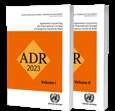











REGULATIONS 09
Experts on the Transport of Dangerous Goods WWW.HCBLIVE.COM 2023 IATA DGR Tel: +44 (0)870 850 50 51 Email: sales@labeline.com www.labeline.com Who do you contact for the latest DG compliant labels? Tel: +44 (0)870 850 50 51 Email: sales@labeline.com www.labeline.com Free DG Label ID poster with every order For a local, professional consultant DGSA, contact Labeline The ‘Biennial’ returns! THE multimodal regulatory update webinar 18th October 2022 Do you consign Dangerous Goods? All UK consignors must have an appointed DGSA by 1st January 2023 Free worldwide shipping from IATA’s leading international distributor
international regulatory bodies, providing them with technical input to ensure that new regulations are relevant and workable. COSTHA can also raise issues directly with the regulators, whether they relate to problems its members are having in applying current rules or when technical developments raise a need for new regulation. An example of the latter is fire suppressant dispersant devices, which use a similar technology to that in airbags; these devices had been introduced to the market but were being regulated differently around the world. Industry took the problem to the UN Sub-committee of Experts on the Transport of Dangerous Goods, which has now come up with a definitive solution in the UN Model Regulations, levelling the playing field.
Tom’s presentation also offered a primer on the US Hazardous Materials Regulations and the regulatory process for those not familiar with them, as well as some of the main peculiarities they contain, such as combustible liquids, materials of trade exceptions, medium
battery exceptions, hazardous substances and reportable quantities.
COUNTING CRASHES
The afternoon coffee break gave another chance to talk to the regulators, something that Bethan Davies has been doing for several years. Beth manages the Chemsafe scheme at the National Chemical Emergency Centre (NCEC), in which role she has to deal with the emergency services and other government agencies, though her focus now is on a research project NCEC is carrying out on behalf of DfT, which had come to suspect there is a significant level of under-reporting of ADR-related incidents and non-compliance. NCEC has drawn on its own experience to begin compiling a database of such incidents and, since the start of this year, has been pulling in data from other agencies. This has involved collating information from various sources into a consistent template to help it identify any key trends. There is more data to be included, Beth said, especially from the fire services, but on the basis of what is available so far, it certainly appears that DfT is correct in its suspicions. Once all the data is collated, NCEC will perform a full analysis and prepare a report for DfT – it is to be hoped that this will be available in time for next year’s VCA Seminar.
To help promote the project and to encourage better ADR reporting, DfT is planning to issue four quarterly bulletins over the course of the project, the first of which has already been circulated. This included items on ADR incident reporting requirements, an enforcement perspective on load security, a summary of the changes in the 2023 edition of ADR, an update on the GB Carriage of Dangerous Goods (CDG) Regulations, and changes to the Emergency Action Codes.
BY THE SEASIDE
The day’s final presentation came from Gemma Harvey, hazardous cargoes adviser within the Maritime & Coastguard Agency’s (MCA) UK Technical Services – Ship Standards team. Gemma had given a very informative paper at the 2022 VCA Seminar, which had promised a lot of imminent developments, and it was useful for her to return and make good on those promises, which she certainly did.
For a start, MCA is engaged in a major reorganisation and simplification of the legislation pertinent to the carriage of cargoes by sea, with the intention of slimming down the current plethora of statutory instruments (SIs) to just two: the Carriage of Cargoes Regulations and the Carriage of Dangerous Goods and Harmful Substances Regulations. MCA was close to getting consultation on the process underway and Gemma said she was optimistic that this could all be wrapped up before the end of this year.
The process will not create any new provisions but will bring the existing regulations – some of which are around 25 years old, including the Carriage of Dangerous Goods & Marine Pollutants Regulation 1997 – up to date and consolidate what is a somewhat fragmented legislative picture. MCA will draw up a new marine guidance note (MGN) to explain how dangerous goods are regulated in the marine environment. There will likely be a change to the reporting requirements and it is planned to include an ambulatory reference to international regulations that apply; MCA will review the list of offences and the current level of penalties, and is also planning to review and re-issue existing MGNs in light of the new legislative structure. Some new MGNs may address

10 HCB MONTHLY | SEPTEMBER 2023
RAIL OFFERS THE POTENTIAL TO MOVE A LOT OF DANGEROUS GOODS BUT MORE WORK NEEDS TO BE DONE IF IT IS TO OFFER AN ATTRACTIVE ALTERNATIVE TO ROAD
Who do you contact for the latest DG compliant
You need Labeline.com
Labeline is the leading worldwide “One Stop Dangerous Goods Service” for Air, Sea, Road, and Rail




We serve Freight Forwarders, Shippers, Airlines, DCA’s, Port Authorities, Petrochemical industry and the Pharmaceutical industry.
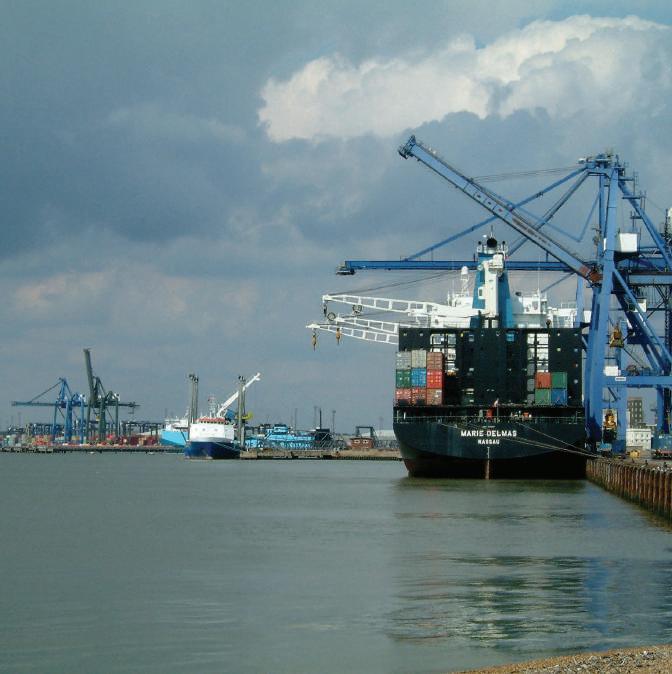
Labeline is one of the world’s leading regulatory services and product provider; we hold comprehensive stocks with a fast worldwide delivery service.
We are one of the very few authorised Multi-mode providers worldwide and described by industry as a pro-active organisation, our name is recommended by many leading authorities and a world class service providers.
When it’s time to order your DG products and services, Labeline will be your “One Stop Service”



Compliant with IATA, ICAO, ADR, IMDG, RID, DoT



electric scooters, high-speed offshore service craft, workboats, jet skis and other powered water craft, fire safety and storage on yachts, and the charging of electric vehicles.
Elsewhere, MCA is looking at autonomous and remotely operated vessels, the use of alternative marine fuels, the problem of plastic pellets in the environment, and ‘grandfather’ rights. It is also supporting innovation with appropriate guidelines.
provisions and packing instructions. Revised text for data loggers has been approved.
Tel: +44 (0)870 850 50 51
Email: sales@labeline.com
www.labeline.com
Gemma also covered recent developments at the International Maritime Organisation (IMO) as it works to bring the latest UN revisions into the International Maritime Dangerous Goods (IMDG) Code for Amendment 42-24. IMO’s Carriage of Cargoes and Containers (CCC) Sub-committee and its Editorial & Technical (E&T) Group have already agreed to two new UN entries for sodium ion batteries and others for batterypowered vehicles and fire suppressant dispersant devices, and related special
Gemma looked ahead to the September sessions, where there were to be discussions on a revision to 2.10.2.7 on environmentally hazardous substances (UN 3077 and 3082) and a new special provision for vehicles as cargo, something that has become more urgent in light of a number of recent shipboard fires. In addition, there will be a continuation of the discussions on the transport of carbon in its various forms, again in response to a worrying number of fires
Delegates were sent home with a head full of new information, representing very good value for the time it took, though at the cost of
Tel: +44 (0)870 850 50 51
GHS
Email: sales@labeline.com
www.labeline.com
networking. It will be interesting to see how VCA takes this forward in 2024, but HCB will certainly be in attendance and will report back
Tel: +44 (0)870 850 50 51 Email: sales@labeline.com
www.labeline.com
REGULATIONS 11 WWW.HCBLIVE.COM
Goods Labels Regulations
Software Training
Dangerous
Documentation Packaging
Chem
Free DG Label ID poster with every order For a local, professional consultant DGSA, contact Labeline The ‘Biennial’ returns! THE multimodal regulatory update webinar 18th October 2022 All UK consignors must have an appointed DGSA by 1st January 2023
Regs
ONE SIZE FITS ALL
THIS YEAR’S ANNUAL Forum of the Council on Safe Transportation of Hazardous Articles (COSTHA), held in Frisco, Texas in the first week of May, encouraged a lot of hazmat professionals to get back to travelling to get together with more than 200 of their peers. The event, which was also partly available online, featured presentations on dangerous goods regulations at home and abroad, with speakers arriving from Asia, Africa and North and South America, along with representatives of the main US federal agencies with responsibility for domestic and international transport of hazardous materials.
For those attendees with a primarily domestic operation, Kevin Leary, international
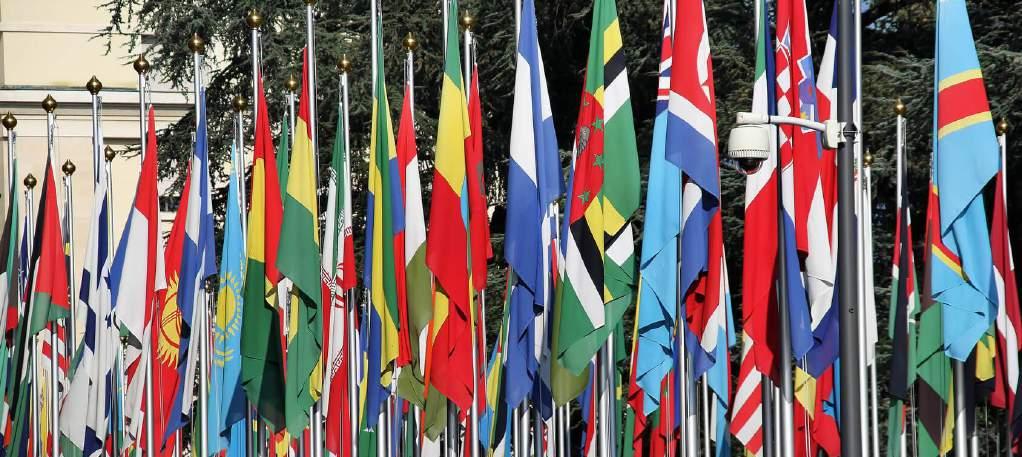
transportation specialist at the US Pipeline and Hazardous Materials Safety Administration (PHMSA), gave an explanation of the US position in respect of the international regulatory framework, and summarised the work of the UN Sub-committee of Experts on the Transport of Dangerous Goods (TDG) in the 2021/22 biennium.
That UN Sub-committee is responsible for updating and managing the UN Recommendations on the Transport of Dangerous Goods, otherwise known as the UN Model Regulations (or just the ‘Orange Book’). That document sits at the core of the international regulatory system, providing the basis for both international transport of dangerous goods by air (through the International Civil Aviation Organization’s (ICAO) Technical Instructions) and packaged dangerous goods by sea (through the International Maritime Dangerous Goods (IMDG) Code). Virtually all countries observe
the IMDG Code and ICAO Technical Instructions for international transport and most apply them also to domestic operations; there is also a long-term trend towards road and rail regulations to harmonise with the UN Model Regulations, though those in effect in North America – the US Hazardous Materials Regulations (HMR) and Canada’s Transportation of Dangerous Goods Regulations (TDGR) – have some way to go to achieve complete alignment.
But, Leary said, the UN system is crucial, with the UN Model Regulations not just setting a safety benchmark for the transport of dangerous goods but also facilitating international trade. The regulations are also multimodal in nature, recognising that goods in international transport are very likely to utilise more than one more of transport. There are currently 30 member countries represented at the TDG Sub-committee; the US delegation is led by PHMSA and at present has the chair of the Sub-committee. The Sub-committee was set up in 1954, publishing the first edition of its Recommendations in 1956; these were reformatted in 1996 (on the basis of the air transport regulations) to allow them to be more easily transposed into modal and national regulations. The US brought its own HMR more into line with the international standards in 1991 through the HM-181 rulemaking and now updates HMR every
12
HCB MONTHLY | SEPTEMBER 2023
THE US HOLDS THE CHAIR OF THE UN SUBCOMMITTEE OF EXPERTS BUT DOES NOT ALWAYS AGREE WITH
IT
INTERNATIONAL • COSTHA’S ANNUAL FORUM GAVE ATTENDEES THE CHANCE TO HEAR WHAT’S COMING ALONG FROM THE UN, DIRECTLY FROM THE PEOPLE INVOLVED
two years in line with the biennial publication of the latest revised edition of the UN Model Regulations.
The global position is, though, far from fully harmonised; to help international shippers and carriers keep up with the latest information, PHMSA publishes a very useful map and list of competent authorities on its website at www.phmsa.dot.gov/internationalprogram/international-list-competentauthorities-andor-contacts-transportdangerous-goods.
THE LATEST EDITION
Leary followed up on this introduction with more detail on what the UN Sub-committee had adopted over the previous two years, noting several proposals that will improve safety, enhance the protection of the environment, facilitate the use of new technologies and support US stakeholders.
For example, partly in response to its mandate as an agency of the UN to observe the UN Sustainability Development Goals but also in response to industry’s desire to improve sustainability performance levels, the Sub-committee amended the definition of ‘recycled plastics material’ to allow a wider use of recycled plastics in packagings for the transport of dangerous goods. Similarly, the TDG Sub-committee adopted new proper shipping names and transport provisions for fire suppressant dispersing devices, with one entry in Division 1.4S and one in Class 9. This will facilitate the distribution of such devices, which are designed to protect lives and reduce the environmental impact of fire extinguishing systems; they may also have a role in addressing the need for effective extinguishers for lithium battery fires.
A small change that will have a big impact for some shippers is an increase in the Limited Quantity threshold for certain non-flammable, non-toxic gases in pressure receptacles, from 120 ml to 1 litres; this change, which was supported by COSTHA, applies to argon, nitrogen, helium and carbon dioxide.
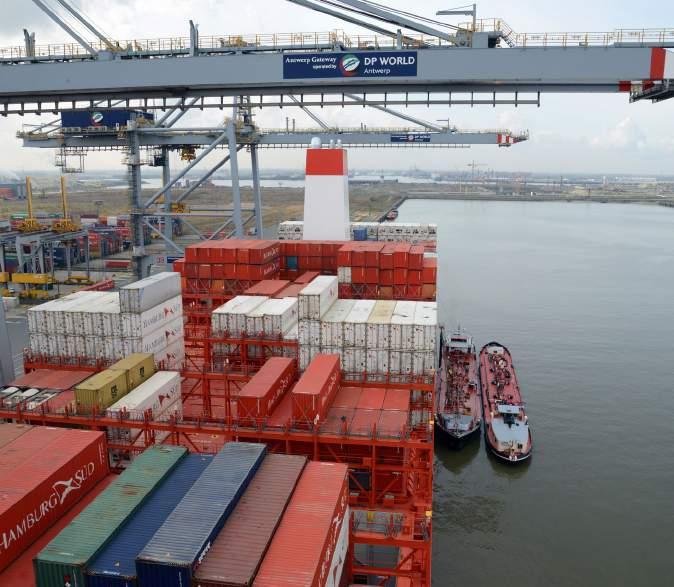
The TDG Sub-committee also adopted provisions that will allow certain alkali metals and alkaline earth metals in dispersions to be carried in UN portable tanks. Some of the products involved are dispersions of lithium
and sodium, which will be in increasing demand to help support growing electrification as part of the energy transition.
The Sub-committee also adopted specific proper shipping names and transport provisions for sodium ion batteries and sodium ion batteries packed with or contained in equipment (UN 3551 and 3552). There are also new proper shipping names for batterypowered vehicles, which will provide clarity to emergency responders and differentiate between specific types of battery.
Leary also noted the addition of a toxic primary or subsidiary hazard for tetramethylammonium hydroxide (TMAH) to the entries in the Dangerous Goods List, which will provide more accurate hazard communication and increase awareness of the hazards in transport and workplace situations.
All these changes will appear in the 23rd revised edition of the UN Model Regulations, which will be published this year; the changes will be picked up by international modal, regional and national regulators for entry into force beginning in 2025.
FLYING WITH POWER
Those modal bodies are already well on the way to implementing the UN’s changes, Leary reported, while the TDG Sub-committee has begun to set out its priorities for the 2023/24 biennium – including bringing to a conclusion, if at all possible, the discussions seeking to establish a rationalised classification system for lithium batteries, which will help when it comes to drawing up parallel provisions for other chemistries as battery technology develops.
Meanwhile, ICAO’s Dangerous Goods Panel (DGP) has already made strides on the next edition of the Technical Instructions and also issued at the end of March a first addendum to the 2023-2024 edition, setting out the limitations posed on portable electronic devices containing batteries when carried as checked baggage.
DGP has now created a Working Group on Energy Storage Devices (ESD WG) to ensure that the provisions related to the transport of liquid batteries or other energy storage devices and supporting guidance material
REGULATIONS 13
WWW.HCBLIVE.COM
deliver the expected and acceptable level of safety. The Working Group has been tasked with carrying out a safety risk assessment on lithium batteries packed with or contained in equipment, which would identify hazards and any existing mitigation measures. This analysis was due to be presented to the May meeting of the DGP Working Group, just after the COSTHA Annual Forum, with the full risk assessment due to be presented to the 29th session of DGP this coming November, potentially with proposals for amendments to the Technical Instructions.
TROUBLE AFLOAT
The International Maritime Organisation (IMO) is also well underway with transposing the recent UN changes into the IMDG Code, with
the Editorial & Technical (E&T) Group, which does most of the drafting work, having met already in March. That session threw up a few issues, including the use of special provisions 961 and 962 for the new entries for electric vehicles. It did, though, incorporate proposals that had been agreed in principle at the prior session of the Sub-committee on the Carriage of Cargoes and Containers (CCC) regarding the use of data loggers and other devices attached to cargo transport units and containing lithium batteries to be used during transport. The E&T Group agreed that the new provisions will not come into effect until 2028 (and 2034 for reefer units).
One important item for the maritime regulators involves the transport of carbon, a cargo that – especially in the form of charcoal – has been implicated in a number of serious onboard fires in recent years. This was a topic addressed both by Steve Webb, international standards transportation specialist at PHMSA and chair of the E&T Group, and Dr Amy Parker and Hillary Sadoff, respectively lead chemical engineer and chemical engineer in the Bulk Solids and Packaged Hazmat section
of the US Coast Guard’s (USCG) Hazardous Materials Division.
The proposed amendments to the IMDG Code relating to carbon have not yet been finalised though, as Dr Parker reported, a drafting group has been able to agree on some issues. Firstly, regarding UN 1361, any material that is not tested must be assigned to packing group III at least; material must undergo a weathering period of 14 days prior to being packed. Stowage methods have been defined, and it will not be permitted to load UN 1361 in bulk in containers. A maximum temperature at the time of packing will be set, though it has not yet been agreed whether this will be 40°C or 50°C.
There was disagreement on the value of the vanning certificate, which requires a marine surveyor to confirm that the cargo is packed in accordance with the IMDG Code and to record the temperature and dead space when loaded into the container; it was felt by some experts that this is a matter for carriers to decide.
For UN 1361, these changes will be reflected in a new special provision that will replace SP 925. Details of the date of

14 HCB MONTHLY | SEPTEMBER 2023
ICAO IS WELL ON THE WAY TO COMPLETING THE REVISED TEXT OF ITS TECHNICAL INSTRUCTIONS DUE TO COME INTO EFFECT IN 2025
production, date of packing and temperature on the day of packing will have to be included in the transport document. Another new special provision will detail the exemptions available to UN 1361 activated carbon that has passed the test for self-heating substances.
IMO hopes that these and other outstanding issues will be brought to a conclusion at the ninth session of CCC, which takes place in London from 20 to 29 September, with a meeting of the E&T Group following.
One of those issues that has become more pressing over the course of this year relates to the carriage of vehicles, both on dedicated car carriers and on ro-ro ferries, following a number of very serious fires. Up until now, the focus at IMO has been on the hazards posed by

electric and hybrid vehicles and it is expected that changes to align SP 388 with the UN Model Regulations will be adopted; this will close a gap relating to the testing requirements for lithium batteries in hybrid vehicles, which is currently limited to such vehicles loaded in the cargo spaces of a ro-ro vessel.
It would appear that a number of recent shipboard fires have involved vehicles powered by internal combustion engines, rather than electric vehicles, and a correspondence group has been established to conduct a broader review of the current provisions. The group is looking at potential amendments to SP 961 and 962, specific problems relating to damaged vehicles, and the carriage of vehicles in containers.
Later in the Annual Forum, Tom Ferguson, COSTHA’s chief technical officer and administrator, gave a detailed presentation on the structure of the international regulatory process, as well as the ways in which COSTHA can help its members influence that process. This was a great help to those not used to dealing with UN bodies and gave a very clear insight into why changes happen.
The third and final part of HCB’s report on the 2023 COSTHA Annual Forum in next month’s issue will cover a number of presentations on domestic regulations around the world. The 2024 event is scheduled to take place in Fort Myers, Florida from 21 to 24 April; more details can be found at www.costha.com.
REGULATIONS 15
WWW.HCBLIVE.COM
WORKING AT THE CAR DECK
VEHICLES • BATTERY FIRES PRESENT VERY PARTICULAR HAZARDS. FERRY OPERATORS ARE NOW SEEING A RISE IN THE VOLUME OF ELECTRIC VEHICLES AND NEED TO UNDERSTAND THE RISKS

THE TRANSPORT OF vehicles by sea is a well established trade. Dedicated car and truck (PCTC) carriers, while being perhaps some of the ugliest ships afloat, provide a vital service to vehicle manufacturers in the distribution of new cars, while ro-ro and ro-pax ferries move large numbers of vehicles of all types on a daily basis. There is also a thriving market in secondhand vehicles using a range of ship types, including container vessels.
The arrival of battery-powered vehicles into the mix over the past few years has raised concerns, given the well known hazards of lithium batteries in other transport chains. Furthermore, there have recently been several major fires involving cars and trucks on ships, even if some – such as the fire on the PCTC Fremantle Highway off the Dutch coast in late
July – were clearly sparked by incidents in more traditionally fuelled vehicles.
The UK’s Maritime and Coastguard Agency (MCA), alert to the lack of requirements from the International Maritime Organisation (IMO) specifically addressing the carriage of electric vehicles (EVs) on ro-ro or ro-pax vessels, has worked with industry to develop a guidance note, MGN 653 (M), to set out what it sees as best practice in the safe carriage – and, potentially, onboard charging – of EVs. The lengthy note aims to raise awareness of the risks posted by EVs and provide guidance on fire detection and firefighting measures.
SPOT THE FIRE
Fires in EVs do not release significantly more energy than those in vehicles powered by
internal combustion engines (ICE) using gasoline, diesel or LPG as fuel. Nor is the risk of fire breaking out any greater. On the other hand, battery fires can last longer, as they are self-sufficient and, once alight, do not rely on a supply of oxygen, and are prone to reignition. In hybrid vehicles there is also the risk that a fire involving the battery will spread to the hydrocarbon fuel.
The greatest hazard posed by lithium batteries is thermal runaway, when the heat generated within a battery exceeds the amount of heat that is dissipated to its surroundings. This creates a feedback loop that, if not addressed quickly, can lead to the fire spreading or the battery exploding, though MCA notes that recent lithium ion battery designs encourage the burning battery to vent rather than explode.
It is therefore vital to spot an event before it gets out of hand, by detecting the gases that are given off immediately before and during thermal runaway; these can include carbon dioxide, carbon monoxide, hydrogen and other volatile organic compounds (VOCs). Some of these are heavier than air and will accumulate at deck level but others are lighter than air and will accumulate at deck-head level or dissipate, making it hard to determine where best to place detectors. Furthermore, when considering the use of off-gas detectors for
16 HCB MONTHLY | SEPTEMBER 2023
early detection of thermal runaway, the presence of other conventionally fuelled vehicles, which also produce many of the same gases in their exhaust during the loading process, will likely cause false alarms until the deck is cleared of exhaust gases. Air circulation systems and natural ventilation may result in the off-gases being mixed with air and being difficult to detect at lower concentrations. If off-gas detectors are used, it is recommended that they are used to detect gases not normally present in exhaust fumes, such as long-chain hydrocarbons and droplets of VOCs, or after exhaust gases have been vented following embarkation.
Fire patrols also need to be aware of the different indicators of fires aboard EVs and are advised to look for evidence of smoke or heat from the areas of vehicles where a battery is normally located, for example the underside. They should also listen for ‘popping’ sounds that may indicate a potential thermal runaway event. Thermal imaging investigations should be undertaken if there are any concerns over a vehicle raised by the fire patrol. Operators might also consider the use of closed-circuit television (CCTV), which can incorporate a flame recognition system.
PUT IT OUT
A ship’s fixed fire-extinguishing system will usually be the most effective first response in dealing with an EV fire as it will provide boundary cooling and reduce the likelihood of fire spreading to nearby vehicles; however, a localised manual response may be more effective in certain circumstances and will be required to supress the fire in the vehicle the fire originates from. This should be considered as part of the emergency response plan. The decision to send crew to engage in manual firefighting activities should be carefully considered, especially where there is already fire spread to nearby vehicles, limited visibility or other hazards that would increase the risk to crew undertaking firefighting.
In case of fire involving lithium ion batteries only water supplied in large quantities can cool the batteries. It is possible that this will have to be manually applied as the pressurised fixed water-drench in the vehicle spaces may not satisfy the fire suppression
needs for electric vehicles due to the limits of the scope of the spray, though it will help to slow the spread of fire. The use of water monitors to provide water to the vehicle is recommended where available. Traditionally fuelled vehicles require approximately 4,000 litres of water to suppress a fire while EVs can require around 10,000 litres, depending on battery size and application method. It is also worth noting that the battery in an EV is often located on the underside, and operators may want to consider installing systems to spray water upwards from the vehicle deck.
OTHER ISSUES
MCA’s note also considers both larger EVs, including trucks, vans and other commercial vehicles, and small EVs such as bicycles and scooters fitted with batteries, personal watercraft and hoverboards. These are not subject to the same approval and acceptance regime as electric cars and trucks and there is a higher risk of low-quality batteries being used, which carries a higher risk of ignition. It is recommended that these vehicles are carried on the weather deck where available and not stowed in car boots or other similar spaces where any ignition could lead to a larger fire developing quickly.
Another particular risk is posed by damaged EVs, such as crash-damaged cars being
repatriated or returned to the mainland from an island. Such vehicles may be at a significantly higher risk of catching fire, depending primarily on whether the battery itself is damaged. They should be examined by a competent person before being allowed on board and should, if possible, be carried on weather decks rather than on enclosed vehicle decks.
Where there is suspicion that the battery pack may be damaged then the battery should be disconnected and carried separately in compliance with the International Maritime Dangerous Goods (IMDG) Code, in accordance with Special Provision 376.

When it comes to onboard charging of EVs, there are some provisions in the International Convention for Safety of Life at Sea (Solas) that should be observed. Ideally, charging should be carried out on the weather deck in a dedicated area.
The carriage of EVs by sea is a relatively new phenomenon and, as vehicle and battery technologies develop, represents a moving target in terms of safety. MCA will update and reissue its guidance to take account of future developments but, for now, its guidance note provides a very thorough summary of the factors that vessel operators need to bear in mind when accepting EVs for carriage.
WWW.HCBLIVE.COM SAFETY 17
HIT OR MISS
INCIDENT INVESTIGATION • MUCH CAN BE LEARNED FROM INCIDENTS AND FROM NEAR MISSES. DUTCH AUTHORITIES HAVE BEEN INVESTIGATING WHY THE PROCESS IS NOT FULLY ENGAGED
IT HAS LONG been acknowledged that learning from accidents is the best way to prevent them happening again. It is also widely understood that near-misses can also provide important learnings – and given that there are more near-misses than actual accidents, investigating near-misses can significantly expand the pool of safety information available.
It is also widely believed that there is a serious problem in investigating near-misses, since those involved are often reluctant to divulge the event in the first place. However, that is something that needs to be overcome if the potential to learn from all events, whether actual incidents or near-misses, is to be fully exploited.
The Netherlands’ Ministry of Infrastructure and Water Management (IenW) has set itself a goal of achieving the intrinsically safe transport of hazardous substances by 2050. Its goal is to reduce the number of incidents and near-misses in the transport chain and learning from past events is an important tool in getting to that target.
Early in 2021, IenW asked the Dutch National Institute for Public Health and the Environment (Rijksinstituut voor Volksgezondheid en Milieu, RIVM) to carry out an exploratory study into incidents involving the transport of hazardous substances; as a result of that work, it was determined that further work was warranted to establish the bottlenecks to learning from accidents and, especially, from near-misses. IenW commissioned RIVM to carry out a fuller study in September 2021, the results of which have recently been made available.
WHERE DO WE STAND
RIVM chose to use safety advisers (DGSAs) as its research population; all companies involved in the transport of dangerous goods are required by ADR, RID and ADN to appoint a DGSA, one of whose roles is to analyse and, if necessary, draw up a report on any accident involving the company’s activities in the transport of dangerous goods. That may also involve making recommendations for measures to prevent the recurrence of such incidents. RIVM felt, not unreasonably, that DGSAs would be best placed to know whether and how lessons are learned from incidents, where bottlenecks are experienced in practice and what points for improvement might be possible.
RIVM worked with the Association for Safety Advisors (Vereniging van Veiligheidsadviseurs, VVA), the employers’ association Evofenedex and the Dutch Chemical Industry Association (VNCI) to distribute questionnaires online during the third quarter of 2022; it received 83 fully completed surveys, primarily from in-house DGSAs with expertise in road transport. As a result, RIVM’s analysis does not cover rail or inland waterway transport. The results of the questionnaires provided a first insight into the learnings that are taken from incidents and near-misses by DGSAs. RIVM subsequently held three focus group

18 DUTCH DGSAS HAVE THE POTENTIAL TO ENCOURAGE NEAR-MISS REPORTING HCB MONTHLY | SEPTEMBER 2023
meetings in November, with 16 DGSAs participating in person. These groups discussed the questionnaire results in more detail, generating insight into the bottlenecks that are experienced and points where improvement might be made.
It appears, RIVM concluded, that many companies are learning from accidents and near-misses, but that they do not always go through the entire learning process. In order to effectively learn from these events, it is important to do so completely. Many companies can also learn more from near-misses. It is also important that safety advisors learn from each other’s experiences by sharing bottlenecks and solutions.
One problem seems to be that companies do not always report a near-miss because they do not feel it would be useful. In addition, some companies do not evaluate whether remedial actions are effective because they have difficulty in assessing this. DGSAs suggested some improvements, such as paying more attention to learning from incidents during DGSA training and encouraging companies that cooperate in the transport chain to discuss safety more often.
VVA, trade associations and government bodies can help in the process, RIVM says. They can talk to each other about the tasks of DGSAs and about learning from incidents and near-misses.
RESULTS IN SUMMARY
RIVM’s survey came up with five main conclusions. Firstly, companies generally pay attention to learning from accidents but not so much to learning from near-misses. Most DGSAs who participated in the study indicated that there are well established procedures for learning from incidents, which indicates that attention is paid to the process.
To gain more insight, respondents were asked whether the learning process is also put into practice. Most respondents indicated that in practice the steps of the learning process are carried out ‘often’ or ‘always’ for incidents but, for near-miss incidents this is ‘sometimes’ to ‘often’. This applies all the way through the learning process.
The second conclusion is that the further one gets in the learning process, the less
often learnings steps are performed and fewer procedures exist. This applies both to incidents and to near-misses.
Thirdly, there are still bottlenecks in learning from incidents and improvements are possible. Most bottlenecks are experienced in steps 1 (reporting), 6 (communicating actions) and 8 (evaluation). Participants in the focus group discussions indicated that many bottlenecks are experienced in the learning process from near-misses, which are under-reported in the first place either because it is not always considered useful or because the near-miss is not recognised as such. There are also capacity constraints in terms of applying the full procedure.
Evaluating the effectiveness of actions is also a bottleneck. Safety advisers indicated that they find it difficult to determine how the effectiveness of actions should be investigated.
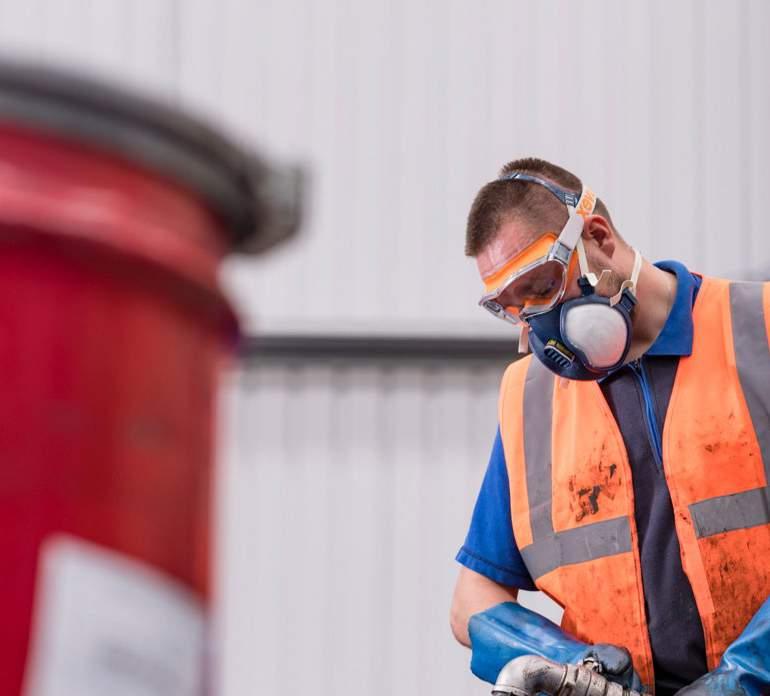
Another common issue derives from the fact that the transport chain consists of several links, which makes troubleshooting more complex when other parties may not
always see the need for action or do not want to free up resources for this. Prevailing commercial interests over security interests also constitutes one bottleneck within companies and within the chain. Exchanging information about good practices seems to be the answer to help solve bottlenecks, DGSAs said.
There were also suggestions for improvement, such as providing more capacity for incident and near-miss investigation, stimulating a safety culture that recognises the need for evaluation, and getting partners from the chain to sit around the table to discuss safety.
The fourth conclusion was that too little attention is paid to learning from incidents and there are different views on how big the role of safety advisers in learning from incidents should be. The respondents to the questionnaire were critical of their involvement and impact on the learning process. Most did, however, indicate they are sufficiently involved in the learning process in
SAFETY 19
WWW.HCBLIVE.COM
their organization (especially at the reporting, registration and incident investigation steps), but there were also many who felt that they are not sufficiently involved.
Most respondents indicated that they have little influence on the learning process in a broad sense, although the focus group discussions revealed that the participating DGSAs see a role for themselves in the learning process, even if there were different views on how big that role should be. Some DGSAs indicated that they are actively involved in one or multiple steps in the learning process, though it seems that the leading role is usually played by the health, safety and environment (HSE) manager or another department within the company. Some DGSAs felt they had an important role to play in coordinating the learning process.
All participants in the focus groups agreed that they should not be solely responsible for
implementation of all steps. Learning is something the entire organisation must do and in which management also has an important role to play.
The majority of participants in the questionnaire and focus groups indicated that - at least in broad terms – more attention should be paid to learning from near-miss incidents. There were different views on how much attention should be given to training for incident investigation. There are doubts whether DGSAs should conduct research themselves and whether they can learn to do so in a short time.
Finally, DGSAs (and companies in the transport sector in in general) can learn more from each other, by getting more information about incidents. Most DGSAs agreed and do talk together about incidents and near-misses that take place within the organizations where they work. They also receive information from
VVA, at least occasionally, about incidents and near-misses that take place in other organisations (when they are members of VVA) or through other sectoral or business associations to which the organisation is affiliated.
In the focus groups, all safety advisers expressed a desire for more sharing of information about incidents with each other. They also identified a need for more transparency, feedback and consultation with the government. Two-thirds of those surveyed said they rarely or never receive general information from the government about incidents.
WHAT’S TO BE DONE
RIVM’s study came up with a number of recommendations. Firstly, to prevent incidents in the future and thus to promote the safety of the transport of dangerous goods, it is important that attention is also paid to learning from near-misses.

In order to effectively learn from incidents and near-misses, it is important that the entire learning process is completed, including the evaluation step.
VVA, industry associations and government departments should discuss how it can be demonstrated that DGSAs are fulfilling their responsibilities in terms of learning from incidents. They can also play a role in facilitating meetings between DGSAs to exchange information and share their experiences and learnings. A structured method of disseminating information to the wider industry community would also help. It would be worth investigating whether a platform can be established for the anonymous reporting of incidents and near-misses in the road and rail modes, following the example of the Platform Zero Incidents system already in place for inland waterway transport.
Ultimately, RIVM says, by at least focusing on the main points in the training spend on learning from incidents, DGSAs can make a greater contribution to the learning process. RIVM’s final report, in Dutch, can be downloaded at www.rivm.nl/bibliotheek/ rapporten/2023-0211.pdf.
20 SAFETY HCB MONTHLY | SEPTEMBER 2023
TRIED. TESTED. TRUSTED.
Peace of mind counts for a lot, which is why you need parts you can rely on. Fort Vale are the worlds’ leading OEM manufacturer of safety equipment used on T50 tank containers, and the parts we supply are proven, reliable and have an exemplary safety record.
Our range of 80mm internal gas relief valves can be supplied with or without a burst disc holder and the valve can be serviced without special equipment.
The valve is located on the top of the tank in the gas phase and is designed to relieve any accidental over-pressure, including fire. The valve will operate manually if its port is covered in ice due to harsh weather, and the main seal can even be replaced in-situ without taking the valve off the tank.
We also manufacture and supply gas & liquid phase discharge excess flow valve assemblies, suitable for side or rear installation. We offer all necessary ACME fittings for connecting the tank container to the process pipework. Choose peace of mind. Choose Fort Vale.


FORT VALE.
FOLLOW THE LEADER.
Visit us at www.fortvale.com ®
CHANGE MANAGEMENT
and conducting SIRE 2.0 inspections, this time without our support, so we can really interrogate how user-friendly the system is and – of course – collect feedback and opinions through the Suggestions for Improvement function within SIRE 2.0 and in our follow-up sessions.”
THE OIL COMPANIES International Marine Forum (OCIMF) has successfully completed the first of four planned phases of the roll-out and testing of the digitalised tanker inspection regime, SIRE 2.0, which will replace all existing SIRE inspections for tankers. Phase 2 of the transition is now underway, with invited programme users testing the entire end-toend SIRE 2.0 inspection process with minimal support from the OCIMF Secretariat. Ship Inspection Report (SIRE) inspections are widely used by the marine industry to assess vessels’ safety levels and operational performance. As a digitalised inspection programme, SIRE 2.0 will, OCIMF says, transform the way those inspections are carried out, with OCIMF-accredited inspectors completing a bespoke risk-based inspection questionnaire (CVIQ) using a tablet device rather than a static paper questionnaire. This means no two inspections will be the same and vessel operators and crew must be prepared to respond to any question within the SIRE 2.0 Question Library.
SIRE 2.0 also has an increased focus on assessing the human element, as well as the option for vessel operators as well as inspectors to submit photographic and documentary evidence. It also introduces the ability for inspectors to highlight how crews have exceeded expectations.
PREPARE FOR CHANGE
Aaron Cooper, programmes director at OCIMF, explains the process: “We are transitioning to SIRE 2.0 over several phases as we recognise that moving to a digitalised regime with new processes and procedures is a significant change for industry and it needs to be done very carefully.
“Phase 1 – where a limited number of invited parties conducted SIRE 2.0 inspections with the support of our project team – was a great success overall and we have been able to gather crucial feedback and recommendations from participants,” Cooper continues. “Phase 2, which is now underway, sees a greater number of participants involved
OCIMF has been actively engaging with industry through industry engagements and training sessions and is urging all programme participants to ensure they are fully familiarised with all documentation relating to SIRE 2.0. The organisation stressed that all parties involved in a tanker inspection, including captains and crew, should be familiarised using the training resources provided by OCIMF. Particular attention should be paid to the document SIRE 2.0 Conditions of Participation, Policies and Procedures. All these documents can be downloaded at www. ocimf.org/programmes/sire-2.0.
“It is imperative that, when the time comes, all users of the programme take the opportunity to participate in Phase 3 – when all programme users will have the opportunity to conduct a SIRE 2.0 inspection to test their own readiness,” Cooper adds. “When SIRE 2.0 does fully ‘go-live’ at Phase 4, the existing system, VIQ7, will be withdrawn. Operators, programme participants and recipients really should take the opportunity to test their readiness before SIRE 2.0 becomes the commercial tool. They need to be preparing and familiarising themselves with all of the materials now.”
All companies engaged in the SIRE programme will be provided with ample notice before Phase 3 is activated. Phase 3 will provide all programme participants with the opportunity to conduct SIRE 2.0 inspections for familiarisation and testing purposes, while VIQ7 will remain the commercial inspection programme throughout Phase 3.
More phase-specific information will be provided to all programme participants in the coming weeks through the SIRE programme portal, which can be accessed via www.ocimf. org/programmes/sire.

22 SAFETY
HCB MONTHLY | SEPTEMBER 2023
INSPECTION
• IMPLEMENTATION OF THE DIGITALISED VERSION OF OCIMF’S SIRE INSPECTION PROGRAMME IS PROGRESSING, WITH THE TRANSITION TO THE NEW PLATFORM NOW WEEKS AWAY
Wherever in the world hazardous materials are being manufactured, stored, transported, and used, CHEMTREC is available 24/7 to provide support needed to manage incidents.
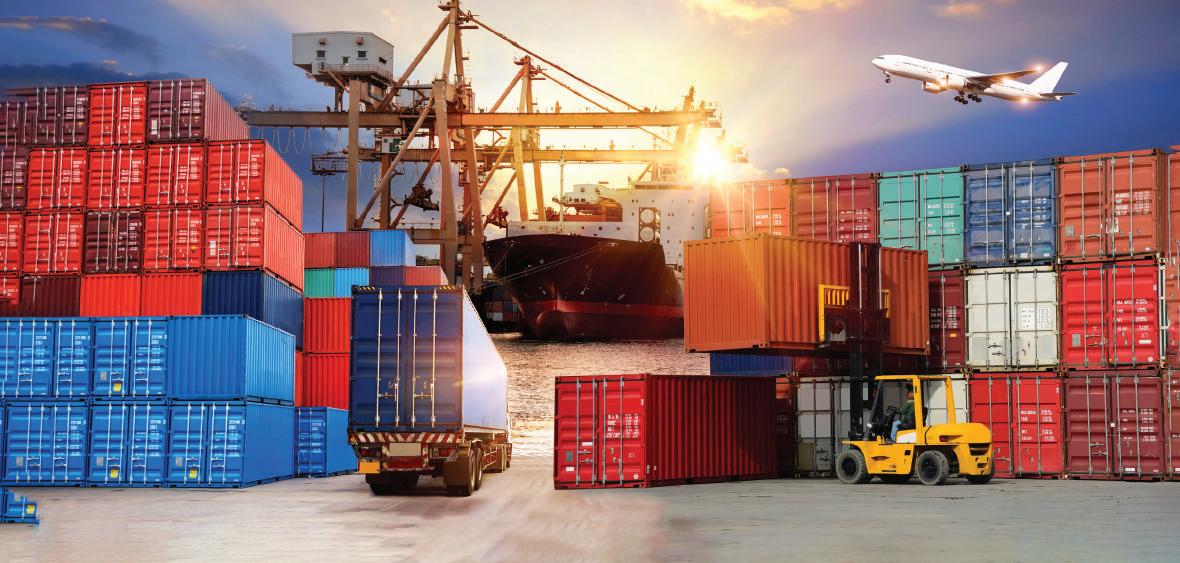
We are always here, always ready, whenever and wherever you need us.


















































50+ YEARS assisting the hazmat and dangerous goods industry Learn more at chemtrec.com/hcb Our Worldwide Services Emergency Response • L1 Emergency Phone Number • (Local and Global) • L2/L3 Services Battery Compliance • L1 Emergency Response • CRITERION® Battery Test Summary Service • Online Training Incident Reporting • 5800 Form • Incident Report Distribution Consulting Solutions • Crisis Management • Business Continuity SDS Solutions • Access • Distribution • Authoring • Indexing Training • Online Hazmat Training
24X7 WORLDWIDE SUPPORT CUSTOMERS IN 120+
SUPPORT 14,000+
INTERPRETER SERVICES
By the NUMBERS
COUNTRIES
GLOBAL BUSINESSES ANNUALLY HANDLE OVER 100,000 CALLS AND 4,000+ MEDICAL CALLS COVER ALL 9 CLASSES OF HAZARDOUS MATERIALS
FOR 240+ LANGUAGES
ROAD TO ZERO
a much more arduous and laborious path. Once all possibilities to reduce emissions by technical means have been exhausted, projects to compensate for greenhouse gas emissions are justified. These projects, however, need to be carefully evaluated on the basis of established standards of quality and, ideally, one’s own assessment.
Active commitment to more sustainability pays off and is reflected in the rankings on rating platforms such as the Carbon Disclosure Project (CDP) and EcoVadis, which are also used by customers from the chemical industry. Site assessments under the terms of the Safety & Quality Assessment for Sustainability (SQAS) programme play an important role for the chemical industry. Such assessments can verify that work processes are continuously being improved to protect employees, the population and the environment.
For logistics providers, four fields of action are key to becoming more sustainable: process efficiency, energy efficiency, research and innovation, and social commitment beyond the company. From the perspective of a customer as well as a service provider, continuously increasing the efficiency of logistics processes - for example, through the use of artificial intelligence or internet of

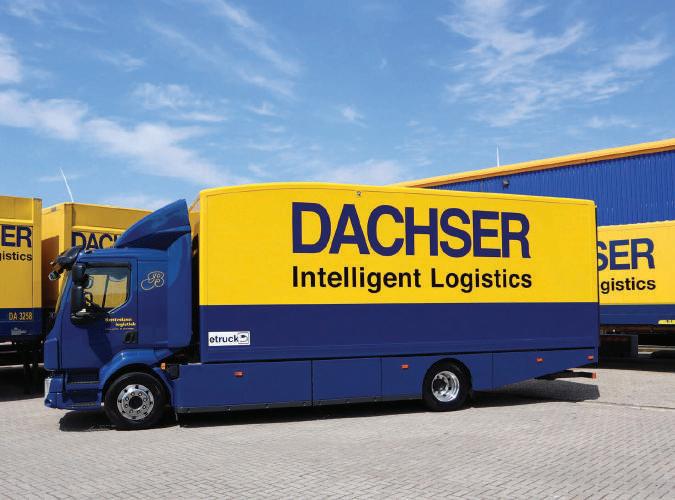
THE CHEMICAL INDUSTRY is central to Europe’s - and Germany’s - technological sovereignty. Almost all industries depend directly or indirectly on the chemical industry and its products, processes and procedures, as it is the first link in many supply chains. In other words, future-proofing the chemical industry means future-proofing Europe and Germany as a business location.
It will require a great deal effort to enable this industry, which is responsible for about 5 per cent of Germany’s CO2 emissions (according to calculations by the German Chemical Industry Association VCI), to achieve the goal of net zero emissions by the year 2050 in accordance with the EU’s Green Deal. At the top of the agenda are the transition to green energy sources, increased use of renewable raw materials and better product life cycle management. Also crucial are
sustainable upstream and downstream processes, including logistics in particular.
Transformation at any cost - for example by paring back fundamental logistics servicesis not an option. On the contrary, the number of road, rail, air and sea transports is expected to rise. This means that it is vital to exploit the technologies available so as to increasingly reduce logistics services’ climate impact and in this way optimise customers’ logistics balance sheets with regard to their own sustainability goals.
REAL-LIFE REDUCTIONS
Offering ‘climate-neutral’ logistics by means of carbon trading is certainly not a sustainable long-term solution. It helps neither the climate nor energy- and emissions-intensive companies. What matters is that emissions actually be avoided and reduced, even if this is
24 HCB MONTHLY | SEPTEMBER 2023
SUSTAINABILITY • THE CHEMICAL INDUSTRY IS PLACING INCREASINGLY STRINGENT SUSTAINABILITY DEMANDS ON ITS LOGISTICS PARTNERS. DACHSER’S MICHAEL KRIEGEL* CONSIDERS THE WAY AHEAD
things (IoT) applications - is an important lever for reducing greenhouse gas emissions. Other effective tools for optimising process efficiency are maximum truck capacity utilisation, such as through the use of mega-trailers and longer trucks, intentional avoidance of empty-truck kilometres, and the deliberate use of multimodal transport in combined transport.

PRACTICAL STEPS
Wherever possible, priority should be given to energy efficiency and the use of renewable fuels. For example, all Dachser logistics facilities worldwide run completely on green power. At the same time, the company is expediting investment in photovoltaic (PV) systems on its own buildings. LED lighting, battery-powered ground conveyors, and low energy consumption through heat recovery also go a long way towards meeting efficiency goals. Electric trucks and cargo bikes are already used as standard for zero-emission
deliveries of all non-chilled shipments in precisely defined city-centre areas. By the end of 2025, Dachser will have implemented this concept in 24 major European cities.
The third field of action, research and innovation, focuses on preparing the zero-emission logistics of the future. At three e-mobility locations in Germany, zeroemission vehicles in short- and long-distance transport as well as charging infrastructures are being tested. Since efficiency also reduces emissions, digitalisation and AI-supported process optimisation play an important role as well. The Dachser Enterprise Lab was launched for this purpose with the help of Fraunhofer IML. It focuses on innovations that make the flow of goods and the associated processes more digital, more efficient, and more sustainable.
After all, social activities beyond the company’s business-related and geographical sphere of influence also play a role in making a company sustainable. In this fourth field of
action, Dachser focuses on its collaboration with childrens’ aid organisation Terre des hommes. The protection of natural resources takes centre stage in these projects. Besides actually helping children, this protection is especially important in developing and emerging countries, as they are strongly affected by the effects of climate change.
To recap, a logistics provider can do its part to promote sustainability and mitigate climate change in these four key fields of action. However, the road ahead is still long. For example, as things stand today, it is expected to take another 15 to 20 years before all diesel trucks on the road have been replaced. Climate action therefore requires a lot of staying power and, above all, a joint effort from all market participants: customers, logistics providers, transport partners, and carriers.
*Michael Kriegel is department head of Dachser Chem Logistics. www.dachser.com
Your tank container experts
TWS offers tank containers for liquid products in the chemical and food industries for more than 30 years. Whether you opt proven standards or special requirements –we have the right equipment and develop sophisticated advanced individual solutions with you. With TWS you rent experience, quality and innovation for your success. For more information: E-mail: tws@tws-gmbh.de and web: www.tws-gmbh.de

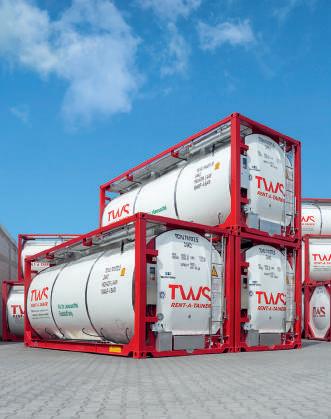
WWW.HCBLIVE.COM TANKS & LOGISTICS 25
TWS_180x124_0119.indd 1 14.08.23 18:15
NAVIGATING THE WAVES
OPERATIONS • GLOBAL TRADE IS STILL HAVING TO SAIL THROUGH CHOPPY WATERS. LESCHACO REFLECTS ON WHAT THIS MEANS FOR ITS GLOBAL TANK CONTAINER OPERATIONS

AS THE WORLD starts getting back to normal, how are business conditions impacting operators in the chemical supply chain? HCB sat down with Leschaco’s Mathias Kaufhold, head of region MEAI, and Katrin Behrens, head of fleet management, to get their opinions.
HCB: We hear from other players in the supply chain of a ’normalisation’ in conditions, especially in terms of ocean freight transport. Is this your experience? Have conditions reverted to the pre-pandemic picture or are we now in a ’new normal’?
MK: We do see this similarly - especially when it comes to disruptions we do see a ‘normalisation’. Transit times are reliable again and space is available. Bookings with ocean carriers do not have to be made months in advance.
However, not everything has reverted back to pre-pandemic conditions. Previously
short-term influences did not automatically result in direct counter-measures. Decisions have rather been thought through a little longer. This did for sure change postpandemic and might be the ‘new normal’.
When looking at current order flows there is a drop in volume in the market, which results in overcapacity and ultimately understandable pressure on pricing. Also overcapacity when it comes to tank container equipment causes infrastructural problems, i.e. full depots so that turn times and handlings get longer and more complicated.
HCB: Are demand patterns still volatile? How can a company such as Leschaco deal with that? Does being a global operation help you to smooth product flows?
KB: We continue to see the overseas market, in which we operate as a tank container operator, as volatile and unpredictable. Since we operate
with a leased tank container fleet for strategic reasons, we naturally use the associated contractual options to give equipment off hire. This relieves us of fixed costs and high storage costs for empty tank containers.
As a global operator, we also reposition empty tank containers in regions where there is demand. Unfortunately, there are currently only very few countries that are booming. MK: It is beneficial to operate with own organisations in a lot of markets that we are active as a tank container operator. We have one software that we use for order processing and to manage our fleet movement. Therefore we are enabled to provide visibility to our customers to give them the ability to react quickly to changes, but also to have transparency of movements for our own planning. We are heavily investing in our IT tools, especially our fleet management software, so that also business intelligence features are getting more and more important in our day-to-day operations.
Aside from the software we are investing even more time in training our staff.
Last but not least we explore the usage of telematics systems to optimise equipment flows and planning. This especially is a topic I am looking forward to discussing with other supply chain professionals at this year’s EPCA Annual Meeting in Vienna.
26 TANKS & LOGISTICS HCB MONTHLY | SEPTEMBER 2023
BY RAIL, ROAD AND SEA


w w w. m s l o g i s t i c s l t d . c o m
HCB: Have you had to adapt your transport model? Is there more demand for/use of tank containers? At what point do you opt for air transport? Is there still demand for 3PL/4PL logistics models? Are shippers near-shoring and if so how does that affect you?
MK: In general we believe in the continuing growth of the tank container market globally. But one of our strengths is the whole product portfolio the Leschaco Group is providing to our customers. We have not used air transport as an alternative to our tank container moves, but with our own airfreight product we definitely could assist our customers with such request. We are however constantly discussion options by combining different service offerings of Leschaco such as FCL/ LCL transports.
The 3PL/4PL business model continues to be important. Having one partner to provide end-to-end visibility along the supply chain will remain important. Some of our customers consider procuring raw materials or finished products locally. But we do not see a clear tendency to near-shoring yet.
HCB: Have you seen any evidence that shippers are moving to more long-term logistics arrangements, rather than relying on spot and short-term contracts?
MK: Yes, this is definitely happening. Ever since the pandemic times validities of rates and awards have become shorter and shorter. But here the tide has changed and with deteriorating rates especially in the ocean freight market we see again longer agreements and commitments. The ocean freight rates are a big influence on deepsea tank rates so that with significantly reduced rates in most markets customers are willing to agree to longer rates again. However, we also see that while on the one hand there are previous commitments to service- and price agreements and longer validities of such, commitments are being revoked and adjustments are requested more than it had been in the pre-pandemic times.
HCB: How can you manage all these changes while still keeping a focus on the need for sustainability and the demands of the UN and EU targets?
MK: Sustainability is one of the key factors why I continue to enjoy working in the tank container market. The product itself is a commitment to sustainability. Even in rough waters and a difficult market environment we still focus on optimisation of our fleet movements, reduction of empty equipment movements as well as increased utilisation of our tanks.
We are also increasing discussions with our service providers and vendors when it comes to sustainable energy sources and are continuing to extend our efforts to measure CO2 output. All this is benefitting from our integrated IT solutions that support both operations, but also management in our commitment to sustainability.
HCB: It must be difficult to plan very far ahead at the moment, with continued global economic uncertainty and the impact of the Ukraine invasion. Can you be confident that the choices you are making now will help Leschaco to continue to navigate the waves?
KB: Same as in the time of the pandemic, reliable planning of our tank container fleet is still difficult. Volume awards from the tenders are often not reliable. However, as already mentioned, we feel well positioned with a leased fleet. We have long-standing partnerships with our leasing companies, which then also help us with short-term increased requirements for equipment. However, our greatest challenges lie in operations. The aim here is to establish traffic flows that are as balanced as possible.
MK: It is for sure not an easy tasks to create and execute mid- and long-term plans in times of uncertainty. But the Leschaco Group has been around for almost 145 years and in the tank container market for close to 50. We have been able to adjust to difficult market developments before and are confident that with the product portfolio the Leschaco Group is offering combined with the skilled staff that we have on board we will also navigate these waves.
www.leschaco.com

28 TANKS & LOGISTICS HCB MONTHLY | SEPTEMBER 2023
TWO FOR ONE.
The Fort Vale 4” Safeload Loading Arm System consists of a combination of top-quality components, each with unique design features. Specifically designed to be used in either a fuel or chemical transfer setting, Safeoad is manufactured in stainless steel - offering class-leading corrosion resistance, inherent strength and excellent durability.

Balance adjustment is controlled by gas springs and a limiter bolt provides failsafe damage protection.

All swivels have an integral earth system that ensures electrical continuity, eliminating the necessity for separate earth wiring.
Spools and drop hoses are available for maximum installation flexibility and we offer a range of Safeload API bottom loading couplers to suit your operating requirements - DryTyt 4” for chemical transfer, 4” API coupler for fuel.
What could be simpler?
FORT VALE.

FOLLOW THE LEADER.
Visit us at www.fortvale.com
WWW.HCBLIVE.COM
®
PAVING THE WAY
the difficult question of deciding on increased transport capacities or reduced cooling periods, streamlining the entire transport process and creating unprecedented convenience for users.
IN THE EVER-EVOLVING landscape of container logistics, innovation is the key to unlocking new opportunities and reshaping industries. TEC Container Solutions, renowned for its cutting-edge solutions, has once again demonstrated its commitment to excellence with the introduction of the ADR/ RID Bitutainer™ - a groundbreaking container designed to reduce the logistic time and cost associated with the transport of hot bitumen.
For years, the transport of hot bitumen and polymer modified bitumens (PMBs) has presented a significant challenge in the intermodal transport sector. Operators had to make the difficult decision between enduring lengthy cooling periods or transporting less product per container, limiting the efficiency of operations or hindering seamless movement from refinery to port. TEC Container Solutions recognised this difficult dilemma and the pressing need for a versatile and effective solution, with the result being the ADR/RID Bitutainer.
By securing ADR/RID certification, the redesigned Bitutainer sets a new industry standard, ensuring the safe and efficient transport of hot bitumen via road and rail. Gone are the days of extended cooling periods before transport; the ADR/RID Bitutainer enables units to be moved directly from the refinery to port in Europe, significantly reducing loading time and overall logistics costs.
Jon Whittall, managing director at TEC Container Solutions, comments: “The ADR/ RID Bitutainer represents a transformative leap forward for the container logistics industry, addressing a critical market gap with
innovative design and unparalleled efficiency. By removing the need for cooling periods associated with hot bitumen transport, we have unlocked new possibilities for intermodal operations and expanded the number of loading facilities available to operators.”
THE NEW STANDARD
At the core of the ADR/RID Bitutainer lies an innovative design that sets it apart from other containers in the market. Its high-capacity double-walled construction, combined with rigorous impact testing for railway accreditation, ensures both robustness and safety during transport.
What truly sets this container apart, TEC says, is its advanced heat retention properties without loss to capacity. Compared to ISO tank style containers, the ADR/RID Bitutainer offers 20 per cent more capacity, ensuring hot bitumen transport logistics do not succumb to inefficient solutions. This transformative feature ensures operations do not have to face

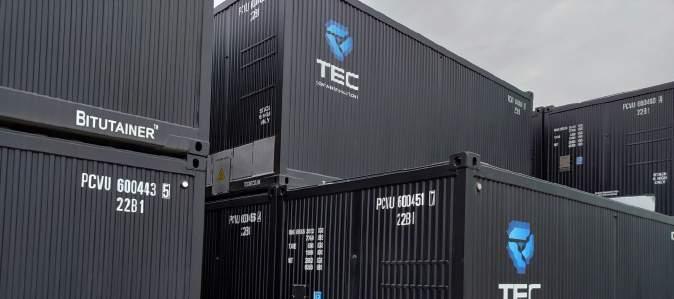
The ADR/RID Bitutainer is not only an advantage for local transport, it has a profound impact on the import and export of bitumen as well. Bitumen can now be efficiently imported by ship, heated on-site, and swiftly transported to customers in its hot liquid form. The result is the quick and efficient discharge of bitumen, significantly enhancing convenience and operational efficiency for all stakeholders.
With its ability to eliminate cooling periods, reduce logistics costs and enhance intermodal transport, the ADR/RID Bitutainer marks a pivotal moment in the world of hot bitumen transport, setting new standards with its versatile, cost-effective and eco-friendly solution for customers worldwide. “As we look to the future, it is clear that TEC Container Solutions is paving the way for unprecedented efficiency, safety, and convenience in container logistics,” the company says.
As industry demands increasingly efficient and sustainable solutions, TEC Container Solutions continues to innovate and lead the way. The ADR/RID Bitutainer embodies the company’s unwavering commitment to creating products that reshape industries and exceed customer expectations.
www.tecint.co.uk
30 TANKS & LOGISTICS
HCB MONTHLY | SEPTEMBER 2023
BITUMEN • TEC CONTAINER SOLUTIONS SAYS THE USE OF ITS IMPROVED BITUTAINER OVERCOMES THE PROBLEMS SHIPPERS AND RECEIVERS EXPERIENCE WHEN MOVING BITUMEN IN TANK CONTAINERS
Safety, Trust and global Services
One of the world’ s leading tank container operators
First-class reputation in the chemical industry
Customized solutions to create integrated supply chains
More than 40 years of experience in tank container handling
Extensive global network including 93 own offices in more than 24 countries worldwide
Fully integrated fleet management tool to monitor the business processes
Tank Container
Leschaco is one of the pioneers of tank container operations in overseas trades. We deliver sustainable and innovative transport solutions for liquid chemicals with the highest quality and safety standards.
www.leschaco.com

NETHERLANDS | BRAZIL | CHINA | FRANCE | SPAIN | BELGIUM | PERU SWITZERLAND | UNITED ARAB EMIRATES | JAPAN | MEXICO | GERMANY SOUTH AFRICA | THAILAND | SINGAPORE | VIETNAM | MALAYSIA | USA CHILE | COLOMBIA | SOUTH KOREA | HONG KONG | INDIA | INDONESIA Forwarding is our passion. Since 1879.
NEW FOR OLD
EQUIPMENT • REPLACE OR REPAIR? CHOOSING THE RIGHT PUMP AT THE OUTSET MAKES IT EASIER TO KEEP TANK TRUCK KIT IN GOOD ORDER, SAYS BLACKMER’S CHRIS HORDYK*
IN THIS INCREASINGLY throw-away world, there is a temptation to go for equipment that can be replaced easily. But that is not a sustainable solution, nor is it often the most economical. For instance, when thinking about tank truck equipment, is it better to fit vehicles with pumps that can be repaired in the field, or pumps that can be scrapped and replaced when they fail? There are advantages on both sides but the optimum solution is to fit sliding vane pumps that include components that can be quickly, confidently and cost-effectively replaced in the field with no unnecessary vehicle downtime.
Tank truck operators have a basic choice of three truck-mounted pump technologies, each with their own advantages:

External gear: this uses the meshing of gears to facilitate the flow of liquid through the pump and consistent volumes, usually
referred to as positive displacement (PD) technology. They will deliver a constant amount of liquid with each revolution of the gears, while their tight clearances and speed of rotation restrict any fluid from moving backward, or ‘slipping’, during operation. Since the gears are rigid, the pumps create a smooth, pulse-free flow, but also one that can handle very high pumping pressures, especially those that are needed to transfer high-viscosity liquids.
On the downside, contact inherent in the meshing of the gears will cause them to wear over time. This wearing of the gears will compromise volumetric consistency and increase the risk that product slip will occur as the pump ages, which will result in decreased productivity over time.
External gear pumps are also generally inexpensive, though they do have a relatively
high number of wear parts, which prompts many users to run them to failure and then replace, rather than repair, them. The cost to replace the wear items is a substantial percentage of the entire cost of the pump and directs users to scrap the entire pump for common wear.
Centrifugal: this technology uses the rotational energy created by an internal impeller to ‘throw’ the liquid to the discharge port. Although less efficient than PD pumps (meaning they require more energy to perform the same amount of work) this method of operation produces a smooth, pulse-free flow. Conversely, to achieve this effect and the resulting operational benefits, by design centrifugal pumps are more complex, which means higher downtime and maintenance costs when they fail. Centrifugal pumps also tend to have a steeper purchase price, which can put the operator between a rock and a hard place when considering the repair-orreplace question.
From an operational standpoint, while some manufacturers claim they are self-priming, most centrifugal pump models cannot prime unless they are first pre-primed. Also, they do not have the capability to fully deplete tanks during unloading, cannot strip lines for product recovery and spill reduction, and
32 HCB MONTHLY | SEPTEMBER 2023
cannot run in reverse for recovery between loads. Lastly, centrifugal pumps must operate at a speed that requires either a hydraulicdrive system or a gearbox to convert typical PTO speeds to the required pump speed.
Sliding vane: this PD pump technology features a rotor with retractable vanes that protrude and retract as the rotor turns. This draws liquid into chambers that are created between the vanes, from where it is pushed to the discharge port. The self-adjusting vanes sustain the pump’s volumetric performance, making it energy-efficient while simultaneously preventing product slip.
Another feature of sliding vane pumps is a lack of metal-to-metal contact, which reduces the possibility that pump friction and galling will occur. An additional sliding vane attribute is its self-priming ability and suction-lift capabilities, which allows the creation of an internal vacuum that is strong enough to strip lines and tanks. Since there is no metal-onmetal contact inside the pump, sliding vane pumps have a liquid-handling range from ultra-thin liquids (0.2 cP) all the way up to liquids with a thickness of as much as 22,500 cP.
It must be acknowledged that not all sliding vane pumps are created equal – and the same goes for external gear and centrifugal pumps. Knockoff models have entered the market that may look the same as a high-end sliding vane pump (while costing less) but their performance leaves a lot to be desired. Mainly, their components (vanes, shafts, bearings, seals, etc) fail sooner during normal operation. Because of their reduced purchase cost, these sliding vane pump models will more likely than not be run to failure and then replaced, rather than repaired.
CONSIDER THE VARIABLES
Taking all of this into account, we recommend that the best choice for truck transport of liquid commodities is a premium, precisionengineered sliding vane pump that can be quickly and confidently repaired without the need to remove the pump from the truck or ship it off to a service provider for the installation of replacement parts or general maintenance.
There are, though, a few variables that must be considered. The first may be the most
obvious – purchase price. In principle, a pump that is designed to be repaired will have a higher purchase price than throwaway technologies. Therefore, the developers and manufacturers of pumps that are designed to be repaired take great pains to make the purchase price as palatable as possible, knowing that any excess upfront costs – while potentially off-putting to the buyer – can be recouped on the back end via longer service life and more manageable and bottom-linefriendly repair costs.
Secondly, even those fleet operators who prefer to repair their external gear or centrifugal pumps when required can be better served by choosing sliding vane technology. That’s because sliding vane pumps have only one major sacrificial component: the plastic vanes that will wear down over time. When the day for replacement comes, the worn vanes can be swapped out for new ones in a matter of minutes without having to remove the pump from the truck. The pump’s other wear components –gaskets, O-rings, seals, bearings, etc – can also be replaced quickly and easily without taking the truck out of service.
Complicated or reoccurring component repair or replacement also brings the potential for a large amount of ancillary costs to be incurred by the fleet owner. The more complicated the pump and its drive system, the less likely that fleet operators will have the expertise on hand to perform repairs or
preventive maintenance. In this case, an outside service provider will need to be scheduled, or the pump shipped out for repairs, which can mean excessive idle time for the truck, along with significant labour costs.
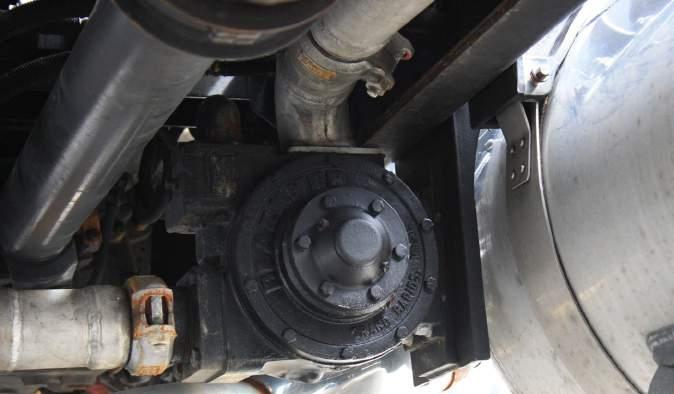
All of this sounds like an argument to simply replace the failed pump with a new one, but that returns us to the first consideration of purchase cost, acknowledging again that initial cost may be lower, but over the 20-year life cycle of a high-quality sliding vane pump, an external gear or centrifugal pump may need to be replaced three or four times.
In general, many people take a sense of pride in keeping a piece of mechanical equipment operating over an extended period of time. There are even instances of fuel oil suppliers who will re-chassis their trucks but install their 10-year-old sliding vane pump on the new chassis. Sliding vane pumps have become the standard for efficient, reliable and cost-effective performance for liquid-handling on transport trucks – and their ease of part repair should put an end to the old repair-orreplace argument.
*Chris Hordyk (chris.hordyk@psgdover.com) is a product manager for Blackmer, a leading global supplier of sliding vane, gear, regenerative turbine, and centrifugal pump, and reciprocating compressor technologies for the transfer of liquids and gases. For more information visit psgdover.com/blackmer.
WWW.HCBLIVE.COM TANKS & LOGISTICS 33
NEWS BULLETIN
BOASSO BUYS IN ROTTERDAM
Quala and Boasso Global have acquired Mainport Tankcleaning and its sister companies, collectively referred to as MTC, from Matrans Holding. MTC provides a range of tank container services from its sites in Rotterdam and Moerdijk (below).
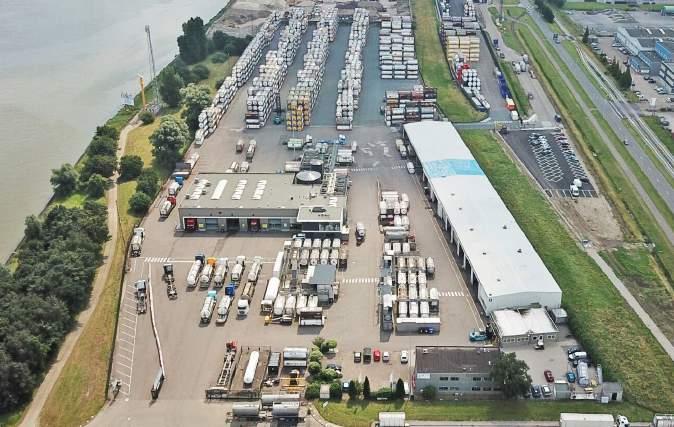
“We are very excited about the acquisition of MTC, which adds another strong operating business for Quala and Boasso Global in the critically important European port area of Rotterdam,” says Scott Harrison, CEO of Quala and Boasso Global. “We are equally pleased that Eric van Halewijn, managing director of MTC, will be staying on with Quala and Boasso Global to not only ensure a smooth transition, but also add strength to our talented operating team in Europe. MTC has a successful track record in operating and growing a complex depot in the tank container industry and we look forward to learning from their deep experience going forward.”
“We are delighted to be part of the Quala and Boasso Global family and look forward to offering our customers and employees increased opportunities from this acquisition,” comments van Halewijn. “As part of joining Quala and Boasso Global’s extensive international network of tank container depots, we’ll be able to provide our customers with unparalleled global service options around the world.”
www.boassoglobal.com
HOYER, HUPAC TALK FREELY
Hoyer Group and Hupac report the successful implementation of the KV4.0 Data Hub for the exchange of data across the entire intermodal transport chain. Hoyer transmits data on its bookings to the hub, developed by DX Intermodal, and these are picked up for further internal processing by Hupac. In turn, Hupac makes scheduling, train movements and booking data available to other users via the
KV4.0 Data Hub, and is continuously expanding the information that is provided. Terminals, railway transport operators and other companies have also started to exchange their traffic data via DXI in recent weeks, and will thus be able to share it more easily with authorised third parties in the future.
“The use of the DXI KV4.0 Data Hub service is roughly comparable to using a sat-nav in a truck,” explains Stephan Pfeiffer, head of application development and deployment at Hoyer. “And the more information we receive from Hupac and other partners via the platform in the future, the more accurately we will be able to calculate our delivery information for our customers.”
www.dx-intermodal.com
www.hoyer-group.com
www.hupac.ch
RHENUS BUYS TRUCKING
Rhenus Group has acquired its long-term transport partner Mannheimer Transport-
Gesellschaft Bayer (MTG), expanding its road freight network and strengthening its presence in the region between its German sites at Dietzenbach (Hessen) and Pleidelsheim (Baden-Württemberg). The move will, Rhenus says, allow it to serve its chemical industry customers in the Mannheim/Ludwigshafen region even better.
“We’re integrating an efficient and locally rooted partner within our company in the form of Mannheimer Transport-Gesellschaft. We’re delighted by the addition of well-trained and highly motivated employees to the Rhenus family and would particularly like to be a reliable services provider for the existing customers,” says Nenad Lukic, managing director of Rhenus Road Freight.
MTG was founded in 1927 and now employs some 150 people, generating sales of some €30m per year. It has a firm foothold in the Rhein/Neckar metropolitan region and offers a range of domestic and international transport services; it also has 10,500 m2 of
34 HCB MONTHLY | SEPTEMBER 2023
TANKS & LOGISTICS
warehouse space. The MTG brand will continue to be used.
www.rhenus.group
H&P GETS MORE WORK DONE
H&P Freightways has opened a new vehicle workshop at its Hull depot in the UK, complementing the recently upgraded tank workshop. The company says that there has been significant investment in infrastructure to ensure a safe and efficient working environment.
“The addition of a dedicated vehicle workshop means we can now offer third party customers various services as well as maintaining our own fleet,” says Mike Dixon, warehouse supervisor. “With a purpose-built service pit, calibrated brake rollers and diagnostic equipment, we are able to offer more than just running-repairs. MOT preparation is also offered as part of the service. We see this investment in people and infrastructure a significant part of our diversification strategy.”
www.hpfreightways.co.uk
DUPRÉ ADDS INTERSTATE
Dupré Logistics has acquired Interstate Transport, a Florida-based transport company focusing on temperature-controlled shipments in the food and beverage sectors. Interstate will
operate as a separate business unit within the Dupré family of brands and its executives, including owner Gloria Hudson and Zach Aufmann, will remain in post.
“Being part of the Dupré Logistics family will allow us to bring additional value to our customers by expanding our transportation solutions portfolio,” Hudson says. This will include on-site logistics, private fleet services, tanker and bulk transport and drayage, with the potential for additional hazardous materials transport services.

www.duprelogistics.com
TRIMAC BUYS JACKNIFE
Trimac Transportation has acquired Jacknife Oilfield Services, a bulk liquids transport operation based in Bonnyville, Alberta that specialises in heavy crude and oilfield hauling. It was originally founded more than 25 years ago to service oil and gas companies working in the Lakeland region in north-east Alberta but has since grown to be a key transport partner across the Western Canada sedimentary basin.
“We are delighted to welcome Jacknife Oilfield Services to the Trimac family,” says Matt Faure, president/CEO of Trimac. “Their impressive track record, extensive indigenous relationships, and commitment to excellence make them an ideal addition to our
organisation. Together we will continue to provide exceptional bulk transportation services and contribute to the success of our customers and the communities we serve.”
www.trimac.com
RINCHEM IN OREGON
Rinchem has opened a custom hazardous materials warehouse in Cornelius, Oregon, to serve the growing demands of the local chemical industry. The 10-acre facility (left) includes a 6,700-m2 warehouse with space for 10,450 pallets, capable of handling a wide range of chemical products and temperature ranges. It also has a 5,500-m2 storage yard to handle up to 238 tank containers, ensuring proper segregation.
“We are thrilled to open our latest custom dangerous goods warehouse in Cornelius as it marks a significant milestone in Rinchem’s commitment to providing top-notch supply chain solutions,” says Matt Jensen, Rinchem’s vice-president of global warehousing. “This strategic location allows us to provide unparalleled support to chemical and semiconductor manufacturers in the region. With our extensive experience and commitment to excellence, we are well positioned to meet the unique needs of our customers.”
www.rinchem.com
DEMI OPENS IN THE US
Demi, the tank service subsidiary of Streem (formerly Ermewa), is taking its first step out of Europe, having recently acquired a property in Houston where it is now in the process of setting up depot services. The new facility will provide maintenance, repair, modification, storage and testing of intermodal tank containers and small portable tanks for clients in the US Gulf region.
The 13.75-ha property has a 15,330-m2 workshop and adjoining office space, with two stabilised yards for the storage of tank containers. Demi US says the facility will be a “state-of-the-art depot for all companies requiring pressure vessel services in the region”. It is due in service in first quarter 2024.
www.demi.nl
TANKS & LOGISTICS 35
WWW.HCBLIVE.COM
PART OF THE FUTURE
THE BAGGY GREEN
THE HYDROGEN UTILITY (H2U) and Vopak
Terminals Australia are to collaborate on the development of H2U’s H2-Hub™ Gladstone project, a multi-billion dollar renewable energy complex producing green hydrogen and green ammonia, proposed to be built in Gladstone, Queensland. This will be the largest green hydrogen and green ammonia development in Queensland, with 3 GW in planned electrolyser capacity and over 1.7 mta of planned green ammonia production, and one of the most advanced export projects on a global scale. H2U and Vopak will collaborate with existing partners to progress development of the project, focusing mainly on the export terminal facilities.
H2U has already lined up some major customers for its planned production,
including local explosives manufacturer Orica, whose Yarwun production plant is located nearby; and international buyers Mitsubishi Heavy Industries and Korea East-West Power, a wholly owned subsidiary of Korea Electric Power Co (Kepco).
H2U says Vopak’s expertise in building and operating major bulk liquids terminals and its presence in the main industrial clusters around the world makes it well equipped to actively contribute to the development of new supply chains for green ammonia and hydrogen. Half of Vopak’s growth investments towards 2030 are aimed at infrastructure accelerating the energy transition, with other projects in various stages of development in the Netherlands, Singapore and the US. Vopak has also been active in Australia for more than 40 years.
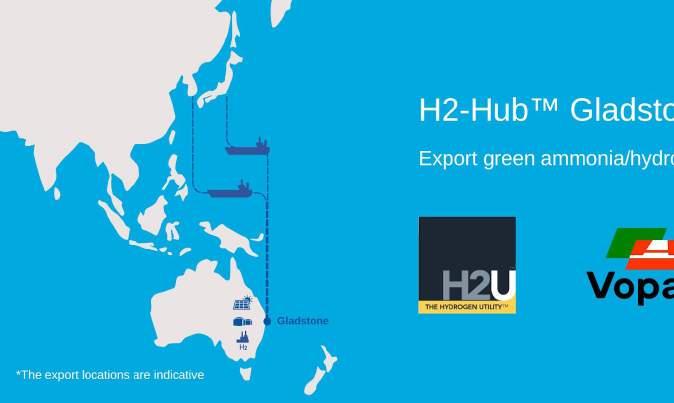
H2U founder and CEO Dr Attilio Pigneri says the collaboration with Vopak will be a valuable addition to the skills and capabilities of the H2-Hub™ Gladstone consortium: “Vopak’s expertise, strong capability, and industryleading track record as a multi-product storage terminal operator combined with their presence in the main industrial and port clusters globally, and within the Asia-Pacific region, brings H2-Hub™ Gladstone in a unique position to support offtakers in the rapidly growing market for green ammonia exports, including in the power generation and shipping sectors.”
Paul Kanters, managing director of Vopak Terminals Australia, adds: “This partnership fits well within Vopak’s strategic goal to accelerate towards new energies. We are excited to help shape a sustainable future by developing infrastructure solutions for new vital products, focusing on zero- and low-carbon hydrogen, ammonia, CO2, long duration energy storage and sustainable feedstocks. Our participation in the H2-Hub™ Gladstone project positions Vopak as a key partner in one of the leading and most advanced green hydrogen and green ammonia projects worldwide.”
The Gladstone project has the support of national and state governments. Speaking at the signing of the agreement between H2U and Vopak, Queensland Government Minister and Gladstone MP Glenn Butcher said projects and partnerships such as this are propelling Queensland towards becoming a clean energy powerhouse. “This facility is right in line with the Palaszczuk Government’s vision for a clean, green future, with the added bonus of hundreds of good, local jobs,” he said.
The Gladstone project was declared a ‘Coordinated Project’ by the Queensland Coordinator-General under the State Development and Public Works Organization Act in April 2022; this past February, it was issued the final terms of reference for an environmental impact statement.
www.hydrogenutility.com
www.vopak.com
36
HCB MONTHLY | SEPTEMBER 2023
AUSTRALIA • VOPAK IS TO COLLABORATE WITH A LOCAL SPECIALIST TO CREATE A MAJOR EXPORT HUB FOR GREEN AMMONIA AND HYDROGEN IN QUEENSLAND
WHAT GOES AROUND
RECYCLING • STORAGE TERMINALS HAVE AN IMPORTANT ROLE TO PLAY IN THE CIRCULAR ECONOMY. VTTI IS GOING A STEP FURTHER THAN OTHERS AND INVESTING IN THE RECYCLING PHASE
STORAGE TERMINAL OPERATOR VTTI has established a strategic partnership with Oslo-headquartered Wastefront, which has developed an economically viable recycling technology to deal with the mounting problem of end-of-life tyres.
In the first instance, the partnership will see VTTI invest $43m in Wastefront to set up a new plant in Sunderland, UK, which is planned to be fully operational in 2026. Subsequently, the two companies will select sites for eight jointly owned plants at which Wastefront’s solution will be implemented and which will be operated by VTTI.

Wastefront’s technology breaks down a tyre’s materials at elevated temperature by thermal depolymerisation, a process known as pyrolysis. This generates carbon black, liquid hydrocarbon (pyrolysis oil), combustible gas and heat. The carbon black is then washed and milled to upgrade its chemical properties and allow it to be used as a reinforcement for natural rubber in tyre production, mechanical rubber goods, or as a filler for plastics, under precise formulations defined with customers.
Some 31m tonnes of tyres reach the end of their life each year, most of which end up in landfill or are incinerated, which represents a major environmental issue. In contrast, Wastefront offers circularity, and the possibility to chemically recycle tyres into valuable products.
Wastefront also notes that new production sources for carbon black are urgently needed
in Europe, since much of the material currently used in the region has been sourced from Russia, Belarus and Ukraine – Russia alone exports some 700,000 tonnes of carbon black per year. Wastefront has already lined up a deal to supply carbon black from the new Sunderland plant to Weber & Schaer, one of Europe’s leading distributors of products for the rubber industry, as well as a 10-year offtake agreement with Vitol for the produced pyrolysis oil and certain non-liquid products. Vitol is one of the three main shareholders in VTTI.
BETTER TOGETHER
“Our mission to create a Green Global Industrial Platform to solve the end-of-life tyre problem requires buy-in from major industrial companies. VTTI is a leading infrastructure company with a clear mission to grow in the energy transition and I am delighted to announce our partnership” says Vianney Vales, CEO of Wastefront. “This is the first time that our Wastefront Blueprint solution for circularity will be licensed on a global stage. VTTI has opted to go a step further and not just deploy our solution but also invest in Wastefront and in future plants. The investment will immediately enable us to scale our work at the Port of Sunderland, and to grow our market reach with the development of eight plants at VTTI sites worldwide.”
Guy Moeyens, VTTI’s CEO, adds: “We are pleased to enter into a strategic partnership with Wastefront on this exciting journey to jointly develop tyre recycling plants at our locations around the globe. We are looking forward to working together with Wastefront in making this important contribution to the circular economy. Wastefront is a complementary partner of VTTI that brings in a fully developed and technologically proven tyre recycling offering, an experienced team, an extensive network in feedstock markets and recognition from tyre manufacturers. Our combined efforts will be able to turn a current large and growing global waste problem into products like pyrolysis oil and recovered carbon black, which are highly sought after in the ongoing energy transition.”
wastefront.com
www.vtti.com
WWW.HCBLIVE.COM
THE
NEW ENERGIES 37
WASTEFRONT
SITE PLANNED FOR
SUNDERLAND WILL BE JUST THE FIRST OF AT LEAST EIGHT LOCATIONS AROUND THE GLOBE
OPEN THE GATE
AMMONIA • MABANAFT IS MOVING FORWARD AT SPEED WITH ITS PLANS TO PROVIDE GREEN AMMONIA IMPORT FACILITIES IN HAMBURG. THE APPROVAL PROCESS IS THE NEXT STEP

MABANAFT’S PLAN TO repurpose part of its Blumensand tank terminal in Hamburg to handle ammonia has taken a step forward with the presentation of its plans to the city’s Environment, Climate, Energy and Agriculture Authority, BUKEA (Behörde für Umwelt, Klima, Energie und Agrarwirtschaft). Construction work planned as part of the project, which is due to be completed in 2026, includes the erection of a new storage tank to handle liquefied ammonia.
Mabanaft has also conducted a hazard identification (Hazid) risk analysis in cooperation with relevant personnel from the Hamburg Port Authority, examining potential nautical risks arising from the new traffic flows that are expected, including the arrival and departure of very large gas carriers (VLGCs). Building a new ammonia tank is just the start of the process, as Volker Ebeling, senior vice-president, new energy, chemicals and gas at Mabanaft, explains: “The ammonia terminal is the first step in building New Energy Gate, a terminal for sustainable hydrogen products that will enable Hamburg to import large amounts of climate-friendly energy. With the application conference in front of the BUKEA, we are getting a lot closer to this goal. We are now working flat out to open the approval process.”
PART OF THE PLAN
The project was first announced in November 2022, with Air Products and Mabanaft, through its subsidiary Oiltanking Deutschland, saying they were to build Germany’s first large-scale green energy import facility. Speaking at the time of the announcement, Germany’s Federal
Minister for Economic Affairs and Climate Action, Dr Robert Habeck, said: “Now more than ever, we need to advance the hydrogen economy. To do this, we are setting up our own hydrogen production in Germany, but of course we also need hydrogen from imports. An accelerated energy transition with more speed in expanding renewable energies and ramping up green hydrogen are the right answers to the Russian aggression and the right answers to strengthen energy security, resilience and competitiveness.”
The location in Hamburg offers strategic access to green ammonia from large-scale green hydrogen production facilities operated by Air Products and its partners around the
world. The intention is to convert the ammonia to green hydrogen via Air Products’ facilities in Hamburg, before distributing it to buyers locally and across northern Germany. Some ammonia will also be available for bunkering of ammonia-fuelled ships calling at the port.
Overall, the plan responds to the accelerating demand for clean energy to meet climate objectives and the need to diversify energy sources, Mabanaft says. It is also a statement on the part of the port, as its CEO Jens Meier said last November: “Hamburg will be one of the first ports worldwide to offer clean hydrogen import infrastructure. This import will drive the decarbonation for several applications in the harbour, as well as applications in shipping.”
Dr Peter Tschentscher, first mayor of Hamburg, added: “As a traditional trading city, we maintain good relations all over the world, and the interest of our international partners in the development of a green hydrogen economy is great. Hamburg aims to become a leading hydrogen location in Europe. We want to help ensure energy security in Germany and advance the decarbonisation of industry and the economy.”
www.mabanaft.com
38 NEW ENERGIES
HCB MONTHLY | SEPTEMBER 2023
other best practices aimed at cargo and environmental safety. To this end we urge regulatory and advisory bodies as well as associations to unite with us in spreading the good word.”
The group has been working with IMO for some time, contributing to aspects of the CTU Code and other regulatory recommendations, but there remains an element of concern that governments may not effectively be communicating agreed IMO requirements and advisory information within their jurisdictions. Lars Kjaer of the WSC explained: “We want to make sure that governments as well as industry are promoting the CTU Code and its best practices to all parties in the CTU supply chain around the globe.”
Ultimately, though, it is those that pack containers that have the primary responsibility for ensuring cargo integrity and safety, and those responsibilities are laid out clearly in the CTU Code. Chris Welsh, secretary-general
Expanding horizons


Driving change to meet the energy transition





At Exolum we see the energy transition as an opportunity to expand our horizons. A chance to diversify our business and meet the challenges of climate change and our customers’ businesses. We have adopted Sustainable Development Goals (SDGs) to touch every aspect of our business and made a commitment to minimising our impact on the environment by striving to use energy resources and raw materials e ciently.
Europe’s leading bulk liquid logistics provider


of GSF said in Amsterdam: “In many modern international supply chains there are multiple ‘hand-offs’ where cargo is passed variously from manufacturers, suppliers, distributors, warehouses, consolidators, forwarders and logistics operators to shipping lines. Ultimately, however, it is the responsibility of the shipper as the party causing the transport of the CTU unit to demand and control compliance with proper packing standards, and to specify the type of equipment needed for the cargo. This is a responsibility clearly set out in the CTU Code. It cannot be negated or ignored irrespective of the complexity of
This industry group is seeking to communicate to all stakeholders through governmental and industry events. Progress is being made in increasing awareness of the CTU Code and linking with other organisations to deliver improved safety and sustainability in the international supply chain.
SECTION SLUG
To find out more visit exolum.com
SHOW AND TELL
energy is high on the agenda for Port of Antwerp-Bruges, which is aware of the important role it has in facilitating green energy flows. This is both the case for the growing volumes of North Sea wind energyand the grids needed to bring it ashore - and the green hydrogen flows connecting Port of Antwerp-Bruges to the other continents.
PORT AUTHORITIES HAVE an important position in helping to foster the decarbonisation of the energy sector and, in northern Europe, ports such as AntwerpBruges, Rotterdam and Hamburg have already been instrumental in bringing together diverse interests to begin the transformation of existing infrastructure and the development of the new networks that will be needed.
Also important in this process is ensuring that governments and regulators are aware of the efforts being made by industry and by local authorities, including port authorities. The efforts they are making can only bear fruit if there is an efficient and non-prescriptive regulatory framework, allowing the sector to come up with viable solutions that meet the overarching targets set by the EU.
In order to improve that communication, Port of Antwerp-Bruges recently hosted a visit by Kadri Simson, European Commissioner for Energy, who was given the opportunity to see at
close quarters the work going on at the Ineos Inovyn site in Lillo, where hydrogen is produced by electrolysis, and one of Fluxys’ work sites, where a hydrogen-ready pipeline is being laid.
“Today’s visit to Port of Antwerp-Bruges has shown me that the transformation to become a major decarbonisation hub is already happening, with multiple projects on renewable hydrogen and carbon-capture, use and storage,” Ms Simson said at the end of her visit. “The availability of renewable hydrogen is essential in a decarbonised economy and the EU policy for renewable hydrogen has been developing rapidly in the last years. A quick deployment of projects to import, produce, use and transit hydrogen, as witnessed here, will be fundamental for the success of the European Green Deal.”
A ROLE TO PLAY
The development of infrastructure to receive, capture, transform and transport renewable
The port platform has long been preparing to receive the first major import flows of hydrogen carriers such as ammonia and methanol by 2026 – to be consumed directly or converted back to hydrogen. This is taking place through concrete projects at the port platform itself, such as the development of a crucial pipeline network and the further extension of suitable receiving terminals, and also through international collaborations with major exporting countries, such as Oman and Namibia.
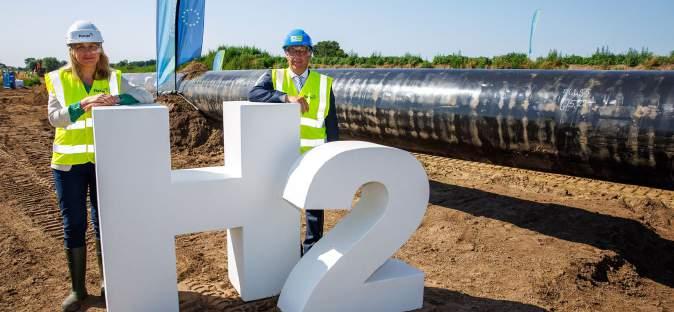
Alongside the development of critical infrastructure and engaging in international collaborations, a sound European policy framework is indispensable for making the hydrogen market a reality. Energy transition and energy independence are an absolute priority for the European Commission, as demonstrated by the REPowerEU plan. This emphasises the need to provide import opportunities in addition to local renewable energy production. One of the instruments that Europe is additionally developing is the ‘European Hydrogen Bank’: a mechanism that provides financial support to encourage investment in sustainable hydrogen production and purchase to European off-takers.
“The Port of Antwerp-Bruges is a major hub for energy supplies today and tomorrow, for our country and the rest of Europe,” said Jacques Vandermeiren, CEO of Port of Antwer-Bruges, after the meeting. “The necessary energy transition will not come about with isolated initiatives, but is a matter of collaboration. By engaging with European policy-makers like Commissioner Kadri Simson, we are making supply chains more efficient, sustainable, safe and reliable, across borders too.”
www.portofantwerpbruges.com
40
HCB MONTHLY | SEPTEMBER 2023
TRANSITION • PORTS CAN PLAY A MAJOR ROLE IN THE ENERGY TRANSITION IN EUROPE BUT WHAT DOES THAT REALLY MEAN IN PRACTICE? THE PORT OF ANTWERP-BRUGES HAS BEEN EXPLAINING
facilitating the future sequestration of substantial volumes of CO2
Developing the capacity to move CO2 by ship will play a significant role in the expansion of CCS infrastructure, Stanlow Terminals believes, as it will offer feasible and flexible routes between sources and storage sites. The infrastructure would provide many more industrial companies the opportunity to transport captured CO2 for storage in depleted gas fields.
MONEY AVAILABLE
The agreement with Eni UK follows Stanlow Terminals’ announcement this past March of plans to also develop open-access green ammonia facilities on the River Mersey, supporting the ambition of Essar Energy Transition (EET) to become Europe’s leading integrated energy transition hub.
TAP TURN ON THE WATER
WHILE THERE IS currently plenty of attention being paid to new energies, the adoption of the EU Green Deal, the Climate Law and the subsequent proposals to increase energy and climate targets for 2030 have made carbon capture and storage (CCS) technologies an important part of the EU’s decarbonisation effort. Indeed, it has been calculated that the EU’s targets can only be reached if there is a substantial increase in the provision of CCS infrastructure.
Stanlow Terminals, which has a stated focus on helping the path to decarbonisation, is one of those operators looking to assist in the
process and it has recently signed a memorandum of understanding (MoU) with Eni UK, the local subsidiary of the Italy-based energy major, to explore the development of CO2 collection, storage and shipping services, basing its proposals on its facilities in the north-west of England, with the captured CO2 to be delivered into Eni UK’s own carbon transport and storage infrastructure currently being developed in the region.
The two companies plan to evaluate opportunities to establish an open-access CO2 transport and storage terminal which will be capable of receiving, gathering and storing CO2 from industrial emitters and other sources via shipping from dispersed locations. The objective is to ultimately connect multiple emitters with Eni UK’s licensed storage location through an open-access system,
EET was launched in February 2023 by Stanlow Terminals’ parent, Essar Oil, which is investing some $3.6bn in developing a range of low carbon energy transition projects over the next five years, of which $2.4bn will be invested at its sites in the north-west of England. That investment includes a new blue hydrogen project being developed by Vertex Hydrogen. “EET’s investment programme will play a major role in accelerating the UK’s low carbon transformation, supporting the government’s decarbonisation policy and creating highly skilled employment opportunities at the heart of the Northern Powerhouse economy,” Stanlow Terminals says.
In addition to the planned open-access ammonia and CO2 facilities, Stanlow Terminals is developing a hydrogen transport hub, to facilitate the distribution of hydrogen by road, rail and sea; working with partners to develop decarbonised refuelling infrastructure for a green freight corridor on the Mersey; and expanding capacity for the storage of biomethanol, bio-ethanol, sustainable aviation fuel (SAF) and hydrotreated vegetable oil (HVO) at its terminals to create a 300,000-m3 biofuels hub.

Michael Ganyon, CEO of Stanlow Terminals, lays out the company’s ambition: “We are primed to lead the national charge and create the UK’s first sustainable energy hub to meet society’s net zero target.”
www.stanlowterminals.co.uk
WWW.HCBLIVE.COM
CARBON DIOXIDE • STANLOW TERMINALS IS KEEN TO MAKE GOOD ON ITS AMBITIONS FOR DECARBONISATION, AGREEING WITH ENI UK TO DEVELOP CARBON CAPTURE AND STORAGE CAPACITY
NEW ENERGIES 41
STANLOW SEES A FUTURE NEED TO BULK STREAMS OF CAPTURED CARBON DIOXIDE PRIOR TO TRANSPORT FOR SEQUESTRATION
NEWS BULLETIN
NAVIGATOR EYES SAF PROJECT
Navigator Terminals has signed an MoU with Alfanar, a global developer of renewables projects, envisaging the development of the North Tees rail terminal for the receipt, storage and handling of up to 1m tonnes of nonrecyclable waste feedstocks for Alfanar’s Lighthouse Green Fuels plant at Port Clarence, which will produce the UK’s first sustainable aviation fuel (SAF) from waste; the plan includes an SAF handling terminal at the North Tees dockside. Construction of the Lighthouse plant is due to start next year with the unit coming onstream in 2028; it is projected to produce around 10 per cent of the UK’s SAF target in 2030.

Navigator Terminals’ North Tees complex is a road fuel and crude oil storage facility with the region’s only deep-water jetty designed for petrochemicals, direct pipeline connecting to the North Sea and modern rail distribution facilities. Finished SAF will be exported via ship at the North Tees waterside complex. SAF may also be exported via rail or truck at Navigator’s inland North Tees rail terminal.
“Navigator Terminals is committed to playing a leading role in delivering net zero for the UK; as the UK’s leading transport, storage and handling experts, we operate a network of strategically located terminals,” says Jason Hornsby, CEO of Navigator Terminals. “We have supported Alfanar’s progress in its thinking around the Lighthouse SAF project for over 12 months and now are pleased to announce our formal partnership.”
www.alfanar.com
www.navigatorterminals.com
AMMONIA TO BULGARIA
Agropolychim, a Bulgarian fertiliser manufacturer, has received what it says is the first commercial shipment of ‘blue ammonia’ in Europe. The cargo arrived on Exmar’s LPG/
ammonia carrier Kallo at the port of Varna at the end of June from Saudi Arabia, where it was produced by Ma’aden. Agropolychim will use the blue ammonia to produce ammonium nitrate fertiliser with a lower CO2 content.
“We are entering a period of intense investment by chemical industry and innovation aimed to reduce the sector’s carbon footprint and achieve sustainable production,” says Philippe Rombaut, Agropolychim’s co-owner and CEO. “Agropolychim has the ambition to be at the forefront of the successful companies, which will drive this green transition.” agropolychim.bg
SINGAPORE SAF AT ADVARIO
Advario Singapore has signed a long-term deal with Neste to provide integrated storage and logistics services for sustainable aviation fuel (SAF) produced locally, to supply Changi Airport and other markets with SAF, jet fuel and SAF blends. Neste started operations at its
newly expanded Singapore refinery last month, which will produce up to 1m tonnes of SAF per year.
“We are pleased to partner with Advario establishing the capability to blend our Singapore-produced SAF with conventional jet fuel. This enables us to supply our customers with certified SAF blends that can be delivered to airports across the Asia Pacific region,” says Sami Jauhiainen, acting executive vicepresident for Neste’s renewable aviation business unit. “The blending terminal also forms a key element in Neste’s integrated SAF supply chain into the Changi airport where Neste, as a minority shareholder in the Changi Airport Fuel Hydrant Installation Company Pte Ltd (CAFHI), the fuel storage and infrastructure joint venture of the airport, is able to supply blended SAF directly to our airline customers”
“SAF is a renewable fuel aligned with Advario’s strategic growth plans,” adds Andres
42 HCB MONTHLY | SEPTEMBER 2023
NEW ENERGIES
Bereilh, vice-president, south-east Asia at Advario. “The entry into SAF storage signals Advario’s ambition to play a frontrunner role in our industry’s transformation. The partnership between Advario and Neste enables both companies to accelerate Singapore’s transition into sustainable fuels and to take a leading role in the SAF storage and logistics in Singapore.” advario.com
LBC, VITOL PARTNER ON PYROLYSIS OIL
LBC Tank Terminals and Vitol have established a partnership to develop a supply chain for pyrolysis oil in Rotterdam, strengthening both companies’ ambitions to be an integral part of Europe’s circular economy for years to come. The pyrolysis process involves the transformation of waste plastics at high temperatures, with the output being used in the production of new polymer or as a recycled carbon fuel.
“As the petrochemical industry pursues more sustainable solutions, we are pleased to work together with LBC to generate a more integrated pyrolysis supply chain, and provide circular feedstocks to our petrochemical
customers,” says Tom Baker, global head of naphtha trading at Vitol.
Frank Erkelens, CEO of LBC, adds: “As connected partner and integral part of Vitol’s supply chain, we are proud to leverage our expertise in efficient and responsible storage and handling for products that are shaping a more sustainable and circular economy. Together, we will continue to make significant progress in further driving the energy transition, and this partnership exemplifies our ambitions and shared commitment to a carbon-neutral future.”
www.lbctt.com
YARA LOOKS TO BUNKER AMMONIA
Yara Clean Ammonia and Bunker Holding Group have signed an MoU to explore opportunities to work together to accelerate plans to supply the shipping industry with ammonia as a fuel. The collaboration will focus on exploring opportunities to supply clean ammonia as a marine fuel to First Movers in the shipping industry along key trade routes and bunkering ports in various geographical regions. The agreement connects two key elements of the supply chain needed to achieve the use of clean
ammonia as a shipping fuel: a global supplier of clean ammonia and the largest bunker supplier today in terms of end users.

“We are excited to work with Yara Clean Ammonia on developing a credible commercial offering for the supply of low- and zero-carbon ammonia to our global customer base,” says Valerie Ahrens, senior director, new fuels at Bunker Holding. “We are committed to playing a leading role in facilitating the decarbonisation of the maritime sector and as such it is vital for us to collaborate with partners who can offer the market confidence around the scale and security of supply of low-carbon fuels.”
Yara is still looking to expand its supply of green ammonia and has recently joined with BASF to study the potential construction of a world-scale low-carbon blue ammonia production facility in the US Gulf Coast region. “Yara and BASF have successfully collaborated in the past and we are pleased to explore a new clean ammonia project together,” says Magnus Krogh Ankarstrand, president of Yara Clean Ammonia. “In line with Yara Clean Ammonia’s strategy, we are working systematically to develop asset-backed supply to decarbonise agriculture as well as serving new clean ammonia segments such as shipping fuel, power production and ammonia as a hydrogen carrier.”
www.yara.com
BUNKERING BY TANK CONTAINER
Den Hartogh Logistics has collaborated with OCI HyFuels to supply MD97 methanol blend as bunker fuel for a newly built ship fitted with a specially designed engine. The operation was carried out at berth in Aberdeen, using fuel delivered by tank container. MD97 comprises 97 per cent methanol with 3 per cent additives to give diesel-like properties.
By proving the use of MD97 as a marine fuel and paving the way for greater uptake of green methanol as a marine fuel in the future, this partnership offers a route to decarbonise the shipping industry, which is responsible for a noteworthy part of global greenhouse gas emissions, Den Hartogh remarks.
www.denhartogh.com
NEW ENERGIES 43
WWW.HCBLIVE.COM
STRENGTH IN DEPTH
established and well diversified industrial portfolio in China,” the company notes.
PILLARS OF GROWTH
Richelle identifies the three pillars of Vopak’s strategy: improve, grow and accelerate.
EBITDA improved by 14 per cent to €494.2m and there were operational improvements too. Vopak is to spend €58m to repurpose part of the storage capacity at its Deer Park terminal in Houston to provide some 75,000 m3 of tankage for vegetable oils; the first phase is expected to be commissioned in the second half of next year with the second phase scheduled for early 2026. Elsewhere in the US, Vopak has completed the sale of the Savannah facility, which gave a €21m exceptional gain in the first-half figures. It is currently holding its two Colombian chemicals terminals as classified for sale after an expression of interest. Vopak is also undertaking a strategic review of its three chemical terminals in Rotterdam.
In terms of growth, Vopak says it is solidifying its leading position in Singapore with additional pipeline connections and greater industrial integration between the Banyan terminal and an existing customer; a €15m investment will also deliver new truck loading facility and adjust some existing


ROYAL VOPAK, WHICH operates the world’s largest network of independent bulk liquids terminals, has reported impressive first-half financial results, with revenues up 8.9 per cent year-on-year at €720.8m and net profit, excluding exceptional items, ahead by 61 per cent at €206.6m.
“During the first half year of 2023 the demand for our services was strong, reflected by an occupancy of 91 per cent. EBITDA increased 14 per cent compared with last year, mainly driven by organic growth across most of the divisions,” says CEO Dick Richelle (right). “We continued to make good progress on our strategy to improve our financial and sustainability performance, to grow our base in industrial and gas terminals, and to accelerate towards new energies and sustainable feedstocks. Our well diversified
portfolio combined with our new simplified organizational structure, positions us well to continue to execute this strategy. We confirm FY 2023 outlook, as we remain focused on long-term value creation through disciplined and balanced capital allocation.”
During the first half of the year, oil markets were dominated by volatility, rebalancing of trade flows and supply security concerns that supported overall storage demand. Growth in global industrial production continued to slow down, impacting global chemical production. In Europe, this led to an increased need for chemical imports. A slower than expected recovery related to China’s reopening has resulted in a bearish sentiment in the industry for the second half of 2023. “Throughput levels in our industrial terminals remain stable and we foresee limited impact due to our
44 HCB MONTHLY | SEPTEMBER 2023
RESULTS • VOPAK IS ACCELERATING ITS OWN RESTRUCTURING AS IT PREPARES TO MEET THE CHANGING DEMANDS OF ITS CLIENT INDUSTRIES. MEANWHILE, RESULTS HAVE BEEN STRONG
tankage, with commissioning expected in first half 2025. In Canada, Vopak has established a 50/50 partnership with AltaGas to look into building a large-scale LPG export facility in Prince Rupert, British Columbia. In India, it is strengthening its position with four planned expansions for the joint venture with Aegis, totalling some 349,000 m3, and continues to develop LNG infrastructure in the Netherlands at a time when there is an urgent desire to find an alternative to Russian gas supplies.
The ‘acceleration’ element of the strategy revolves around the energy transition, where Vopak has commissioned some 64,000 m3 of new tankage in Rotterdam for waste-based feedstocks. It has also struck a long-term deal to store feedstock for Shell’s new bio-refinery at the Vlaardingen terminal. In Belgium, Vopak has acquired a prime location
within the port of Antwerp where it plans to develop new facilities to handle new energies and sustainable feedstocks.
There are a number of other growth projects in hand. Some €70m is being put into construction of 41,000 m3 of additional tankage at the Eurotank site in Belgium, due for completion by the end of next year, and a 110,000 m3 expansion of the Caojing jointventure terminal in China is scheduled to be commissioned in first quarter 2025. Vopak is also taking part in the expansion of renewable fuel distribution capacity in California with a €30m project to provide 148,000 m3 of tankage in Los Angeles, due for completion this year.
CHANGE AHEAD
Vopak’s expectation for the full year is EBITDA of some €950m. It says that storage demand
indicators in the oil market are expected to remain favourable through 2023, while those in the chemical gas markets are expected to remain broadly stable for the remainder of the year. Total growth investments are expected to be around €300m, which is in line with Vopak’s long-term commitment to invest €1bn in industrial and gas terminals by 2030 and another €1bn in new energies and sustainable feedstocks.
Vopak is also making some changes to its organisational structure, which will result in the removal of a divisional management layer and a net loss of some 50 full-time positions. It will be moving to seven reporting segments during the third quarter, which will be reflected in the next set of quarterly financial results.
www.vopak.com
Build your network and stay informed with Chemical Watch conferences




WWW.HCBLIVE.COM STORAGE TERMINALS 45 Our global conferences explore the entire regulatory landscape, with focused series including:
• Global Regulatory Summits plus Enforcement Summit and global Expos • Global Business Summits • Biocides/antimicrobials • Downstream sectors, including Electronics, Retail and Food Contact • Current key topics, including REACH, Brexit, Scip and TSCA See the latest events in your area: events.chemicalwatch.com/conferences Collaborate with our network of industry experts and get the latest insights and information....
TANKS YOU LIKE
RENEWABLES • KOOLE TERMINALS HAS THIS YEAR INVESTED IN NEW AND CONVERTED STORAGE CAPACITY TO HELP ITS CLIENT BASE MEET ITS TARGETS IN THE TRANSITION TO LOW-CARBON FUELS
KOOLE TERMINALS HAS recently completed a significant project at its Liverpool terminal in the UK, converting four storage tanks to handle renewable feedstocks. The work was initiated by Koole itself as part of its commitment to offering the right facilities to enable the energy transition. Once the plan was afoot, however, a leading international client stepped in to commit to the new capacity, prompting Koole’s team to complete the work in record time.
“At the right time, a suitable customer arrived to deploy the project for,” says Virgil Veira, sales manager, Multi-Product Terminals (MPT) at Koole (pictured, left). In consultation with the customer, further specific modifications were made to tailor the project. For example, when converting and adapting the storage tanks, ship pumps, unloading points and the right insulation were added.
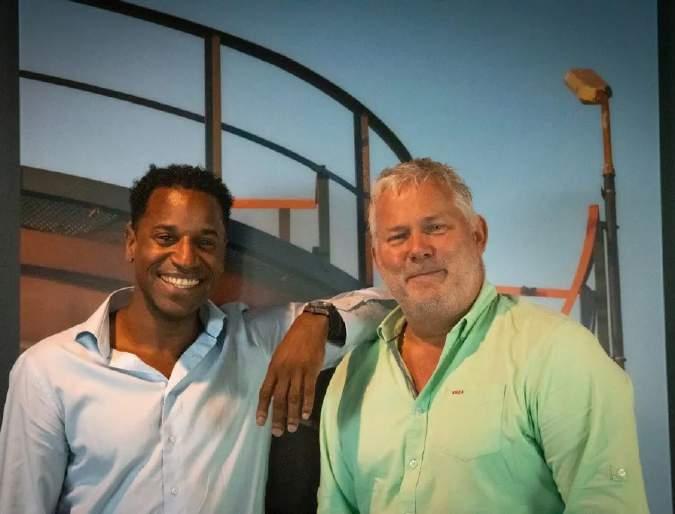
Since the new tanks came onstream in June, the client has already expressed a desire for more such capacity.
The project was born out of market demand, to provide partners with an infrastructure to create and store renewable feedstock streams. “We as Koole can facilitate and secure supply for the production of renewable fuels,” says Veira. “This way, we support the energy transition and are a key component in the chain,” adds operations manager Ronald Thonissen (pictured, right). This supply chain solution is an example of how Koole’s service becomes an integral part of renewable fuel production.
“The added value for our customer is that they now have access to UK feedstock to collect and safely store UCO (used cooking oil) in bulk,” notes Veira. “The solution provided also offers a means to filter the collected oil,
making it easier to process in their factories,” adds Thonissen. In short, it’s better for the climate and creates a stronger position to achieve strategic goals, Veira says. And thus, there are also opportunities for Koole to expand new tanks for renewables in Liverpool.
SAME AGAIN
Because of the commitment of the team involved, the whole operation progressed smoothly. “Everyone was immediately excited and motivated by this project,” says Veira. There was a good atmosphere right away, and that did not go unnoticed by the client, as Thonissen says: “The customer has repeatedly expressed being impressed with the team, their commitment and availability.”
Also important to the success of the project were HSEQ manager Klaas Verburgt, project manager Edwin van Noord and Shaun Davin, terminal manager at Liverpool. With their combined expertise and years of experience, they successfully constructed and delivered the project in record time. “We met all the deadlines and stayed on budget,” Veira notes. Looking back on the project, Thonissen is especially proud of how the entire operation was executed: “Working with the highest standards in quality and safety is paramount in everything we do, for our people and customers. In addition, this project suits Koole Tankstorage Liverpool’s vision and strategy exceptionally well. For it to turn out so well, is very promising.”
The Liverpool project follows on from a similar, larger development at Koole Tankstorage Botlek in Rotterdam, which was completed earlier this year. Two new tank pits, with a combined storage capacity of 90,000 m3, and a new pump manifold were installed to handle biofuels. Again, this project stemmed from the needs of a customer, as operations manager Luca Bignotti explained at the time: “We put together what the customer really needs. We owe that to Koole’s entrepreneurial drive. We think in terms of opportunities and act accordingly – proactively. Koole always manages to look ahead and surprise customers with new facilities: facilities that perfectly match Koole’s own ambition.” koole.com
46 STORAGE TERMINALS HCB MONTHLY | SEPTEMBER 2023




WWW.HCBLIVE.COM CHEMICAL DISTRIBUTION 47
COMBINATION CARRIER
that currently prevent a wide deployment of hydrogen-based applications by tackling safety, regulatory and supply chain issues. We are welcoming the investment from two major European logistics and storage leaders who will bring strong industrial and market expertise to support our scale-up and contribute to our board discussions.”
EXOLUM AND VOPAK Ventures have invested in the French start-up HSL Technologies, a company focused on the development and industrialisation of simple, efficient, innovative and cost-effective methods to safely transport and store hydrogen.
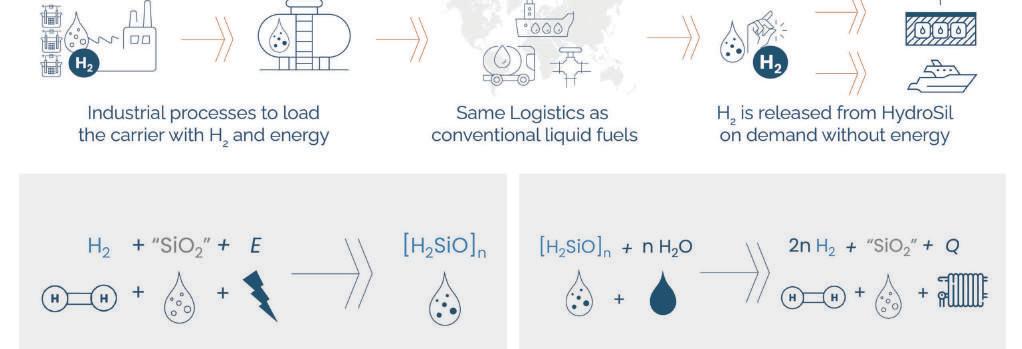
Exolum says that HSL Technologies’ patented solutions have the potential to overcome the fundamental challenge of safely and economically transporting and storing hydrogen on a large scale. It is developing a unique process to introduce hydrogen molecules into a silica-based liquid carrier, where the hydrogen can be released on demand. Initial tests have shown that this carrier, dubbed HydroSil, is stable and can be safely transported and stored in existing infrastructures at ambient pressure and temperature.
In addition, while this technology requires energy to bind the hydrogen in the carrier, it requires none to release it, unlike other existing hydrogen carrier solutions. This ability to release hydrogen at no energy cost is a major boost to the development of the hydrogen market.
According to Andrés Suárez, Exolum’s Global Strategy & Growth Lead, “this investment is part of Exolum’s strategy to diversify its business and its commitment to the development of new energy vectors such as hydrogen. The company has traditionally shown a strong commitment to the entrepreneurial ecosystem and this investment is a further step in this direction”.
A GOOD FIT
Martijn Schouten of Vopak Ventures adds:
“This investment fits very well into Vopak Ventures’ New Energies, Feedstocks & Sustainability fund, in which we focus on funding ventures facilitating new sustainable solutions in areas such as zero emission fuels, green feedstocks, recycling solutions and flow batteries. We are very much looking forward to giving our support in further developing this promising technology.”
Corine Dubruel, president and CEO of HSL Technologies, emphasises that ”HSL Technologies’ innovations will have a disruptive impact in the logistic and storage sector as it has the potential to remove the key barriers
With this investment, Exolum and Vopak Ventures have become shareholders of the French company alongside other investors that include Equinor Ventures, EDP Ventures and the European Innovation Council, the largest Deeptech investment fund created by the EU to support startups.
HSL, formerly known as HiSyLabs, has set itself an aggressive timeline to get its concepts to market, aiming to have a ship capable of being fuelled by HydroSil in the water next year, followed by three charging and three release pilot units, each with an annual capacity of 10 tonnes of hydrogen, in operation in 2025. By 2027, HSL aims to have three large charging plants, each with a capacity of 10,000 tonnes of hydrogen per year, opening the technology up to mass market applicability.
For Exolum, the investment in HSL fits with its ESG Master Plan, announced this past June, which has brought forward its target date to be a carbon-neutral company from 2050 to 2040. The Master Plan includes the promotion of new businesses aligned with the energy transition and participation in consortia with other entities to promote innovation and technological development.
exolum.com
www.hsl.tech
48 HCB MONTHLY | SEPTEMBER 2023
HYDROGEN • HSL’S INNOVATIVE HYDROGEN CARRIER TECHNOLOGY CONTINUES TO ATTRACT INVESTORS, WITH EXOLUM AND VOPAK BOTH RECENTLY ADDING THEIR WEIGHT TO THE PROJECT
NEWS BULLETIN
STORAGE TERMINALS
OIKOS TO EXPAND ESSAR REACH
Essar Oil has reached agreement with Oikos Storage to handle middle distillates at the Oikos terminal on Canvey Island, for distribution to London and the south-east of England. The move will expand Essar’s traditional market base in the north-west and Midlands regions, while increasing resilience of supply to parts of the Midlands using the UKOP pipeline system.
“This Agreement represents a significant step in Essar’s strategic downstream ambitions, boosting capacities and ability to meet demand at Northampton and Kingsbury,” says Deepak Maheshwari, CEO of Essar Oil UK. “We are delighted to be working with Oikos to gain access to the largest market in the country, leveraging our strong automotive fuel expertise to serve existing and new markets across London and the South East.”
Arun Sriskanda, managing director of Oikos, adds: “Oikos is delighted to enter into a long-term contractual commitment with Essar Oil UK Limited. There are great synergies between our operations with our advantaged marine logistics and access to major crosscountry pipelines. This partnership will improve the UK’s fuel connectivity and supply chain resilience, as well as develop our site’s capability as we prepare for future fuel trends.”
www.essaroil.co.uk
www.oikos.co.uk
STOLT LOOKS AT METHANOL BUNKERING

Stolthaven Terminals has signed a memorandum of understanding (MoU) with the Port of Melbourne and a number of shipping companies to explore the commercial feasibility of setting up a green methanol bunkering hub in the port, using green methanol shipped from plants in Victoria and Tasmania.
“Stolthaven Terminals is pleased to support this project – as well as many others worldwide – that enable the transition to greener energy alternatives,” says Ben Serong, general manager of Stolthaven Terminals in Australia. “The scope of activities involved under this MoU will evolve as the collaboration progresses and the parties develop a clearer understanding of how our respective expertise can be combined on this potential project.”
“Decarbonisation of the maritime industry is really gaining pace,” adds Saul Cannon, CEO of the Port of Melbourne. “As Australia’s largest container port with around 3,000 ships visiting annually, it makes sense that we look at ways to work together with customers, service providers and producers to understand the needs of the market.”
In financial news, Stolthaven Terminals has reported second-quarter revenue of $74.3m, virtually unchanged from the first quarter. Storage and throughput revenue increased by 4.4 per cent, on top of a 4.6 per cent increase in the prior quarter, reflecting improved throughput volumes and a continued tight storage market in the US and Brazil. At 97.0
per cent, utilisation remained high at the company’s wholly owned terminals. Operating profit rose from $25.1m in the first quarter to $27.8m, due mainly to higher equity income from joint-venture terminals.
“At Stolthaven Terminals, a slowdown in the demand for chemicals driven in part by the uncertain economic environment could ease some of the recent tightness seen in the global storage market,” says Niels G Stolt-Nielsen, CEO of parent company Stolt-Nielsen Ltd. “However, having recently secured higher storage rates on contract renewals we expect relatively flat earnings in the second half of the year.”
www.stolt-nielsen.com
OILTANKING OUT OF DENMARK
Oiltanking has sold its bulk liquids storage terminal in Copenhagen, Denmark to its affiliate company Mabanaft. The divestment of the 461,650-m3 Copenhagen terminal is in line with Oiltanking’s portfolio transformation programme announced in November 2021. For Mabanaft, the terminal adds another key location to its network to help it expand its supply footprint in Europe.
STORAGE TERMINALS 49
WWW.HCBLIVE.COM
“We are very happy to add this terminal and its dedicated employees to our network. Our focus will be to continue serving the loyal customers in the region and building on these existing relationships, while maintaining the highest safety and environmental standards there, and at all our terminals,” says Mabanaft CEO Jon Perkins.
“Having been established in the early 1970s as one of Oiltanking’s first international presences, we are glad to see that the terminal and its loyal and dedicated team continue their journey as part of the existing terminal network within our sister company Mabanaft,” adds Bas Verkooijen, CEO of Oiltanking. www.oiltanking.com
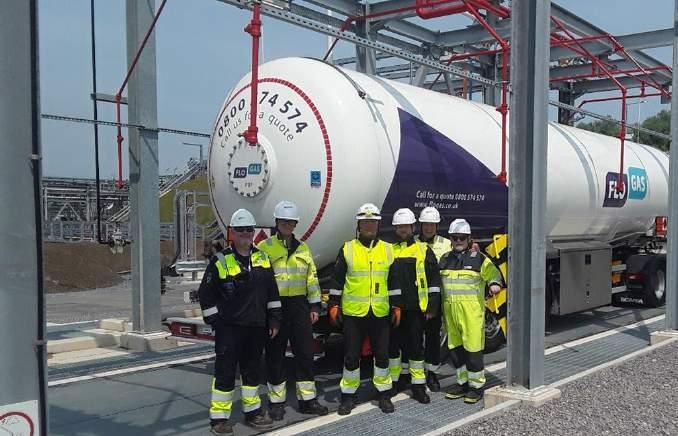
FLOGAS GASSED UP
Flogas Britain has completed the gassing up of its new LPG storage terminal at Avonmouth; the company says the new facility, built by TGE Gas Engineering on the site of the former National Grid LNG terminal, is the UK’s largest aboveground LPG storage site, with a capacity of more than 34,500 tonnes. It will, Flogas says, “[improve] the UK’s off-grid gas infrastructure, and [provide] greater security of supply to commercial and residential customers nationwide, as demand grows through energy transition”.
The site will be ‘bio-ready’ from the outset, capable of storing bioLPG, a chemically identical, renewable alternative to LPG. As a ‘drop in’ fuel, bioLPG can be blended with or replace conventional LPG without the need for changes to infrastructure, boilers, or equipment. Flogas expects commercial operations to begin in the winter.
“The commissioning of our Avonmouth facility is a significant milestone on our journey to de-carbonise our supply and supports the DCC Energy division’s wider strategy to reduce our overall emissions,” says Ivan Trevor, managing director of Flogas Britain. www.flogas.co.uk
LBC CONSOLIDATES IN ANTWERP
LBC Tank Terminals has decided to go ahead with the expansion of its Antwerp site and will build 28 new tanks to add some 80,000 m3 of
new capacity along with new loading stations for road tankers and rail tank cars. The new tankage will be dedicated to the efficient storage of base oils and chemicals to meet growing demand.
“With high energy prices, chemicals production in north-western Europe is under increasing competitive pressure, while Middle Eastern and US-based producers have an advantage with access to lower priced feedstock,” says Erik Kleine, general manager Europe at LBC. “We see a healthy and consistent growth in import of base oils and chemicals into Europe, where Antwerp is a prime location for these growing product flows.”
The project is expected to be completed and in operation in the fourth quarter of 2025.
LBC has also bought out its partner in the smaller Lillo terminal in Antwerp, which was opened in 2007 as a joint venture with Cepsa Química. LBC has now acquired Cepsa’s 25 per cent shareholding, though Cepsa will remain a long-term customer and says it will maintain its operations from the terminal to serve its customers in central Europe.
“This acquisition is a major milestone for LBC in Europe, as it paves the way for the further growth of the terminal,” Erik Kleine says. “With access to additional land and a
strategic location in the port of Antwerp, the terminal is primed to leverage the opportunities and new products that the energy transition will bring.”
The terminal has already been renamed ‘LBC Lillo’, to distinguish it from the larger ‘LBC Antwerp’ terminal that is closer to the centre of the port.
www.lbctt.com
RUBIS SELLS NON-CORE BUSINESS
Rubis Terminal has reached agreement to sell its CPA subsidiary to the Dyneff Group. CPA is a leading regional distributor of diesel, heating oil and other refined products in northern France, delivering more than 200,000 m3 of product last year.
“The divestment of CPA to a leading wholesaler and distributor of petroleum products such as Dyneff is in line with Rubis Terminal’s development strategy, to focus on storage of sustainable, low-carbon products (chemicals, biofuels and agrifood) in best-inclass terminals located in the main import and trading hubs in Western Europe,” Rubis Terminal states.
Subject to customary conditions, the deal is expected to close by the end of this year.
www.rubis-terminal.com
50 HCB MONTHLY | SEPTEMBER 2023
Tank storage provides an essential interface between sea, road, rail and pipeline logistics.

DEALING
The quarterly magazine from the Tank Storage Association
Also in this issue, we delve deeper into the current safety debate and explore the many innovations and initiatives that are taking place within the bulk storage and energy infrastructure sector.
WITH REGULATORY UNCERTAINTY IN HYDROGEN TECHNOLOGY DEPLOYMENT
Autumn 2023 Issue 15
06 TSA Tank Storage Associa on
Page
TSA
Insight is published by the Tank Storage Association, the voice of the UK’s bulk storage and energy infrastructure sector.


To contact the editorial team, please email info@ tankstorage.org.uk
TSA Insight Team
CONNECT WITH US

@UK_TSA
Tank Storage Association
TSA
@uk_tsa

CONTACT
Tank Storage Association
Devonshire Business Centre Works Road
Letchworth Garden City
Herts. SG6 1GJ
United Kingdom
Telephone: 01462 488232 www.tankstorage.org.uk
Peter Davidson Executive Director, TSA
TSA has used reasonable endevours to ensure that the information provided in this magazine is accurate and up to date. TSA disclaims all liability to the maximum extent permitted by law in relation to the magazine and does not give any warranties (including any statutory ones) in relation to its content. Any copying, redistribution or republication of the TSA magazine(s), or the content thereof, for commercial gain is strictly prohibited unless permission is sought in writing from TSA. Claims by advertisers within this magazine are not necessarily those endorsed by TSA. TSA acknowledges all trademarks and licensees.
Welcome to the autumn issue of Insight. As our sector innovates and the range of products and services offered by terminals evolve, careful consideration needs to be given to how we can continue to focus on safety and ensure that it is managed effectively. We must always ensure that protecting people and the environment are at the forefront of all that we do. As a leading member of the COMAH Strategic Forum, Process Safety Forum, the Chemical and Downstream Oil Industries Forum, and several Energy Institute technical committees, the TSA is at the centre of discussions in this context. And through our dedicated committees, we continue to positively engage in the development of new guidance and standards. For this issue, we delve deeper into the current safety debate and explore the many innovations and initiatives that are taking place within our sector.
Tank Storage Associa on
Peter Davidson, Jamie Walker, Nunzia Florio
05 Tank Storage Association launches new podcast
The Tank Storage Association has launched a brand-new podcast, Terminals Talk, exploring the topics that matter the most to the terminals industry.
06
Dealing with regulatory uncertainty in hydrogen technology
Ian Travers, discusses regulatory uncertainty in hydrogen technology deployment and two groundbreaking OECD reports.
09 Tank Storage Association publishes 2023 Annual Review
The Tank Storage Association has published its 2023 Annual Review of the UK’s bulk storage and energy infrastructure sector.
10
COMAH Strategic Forum – building on success
The COMAH Strategic Forum has ten successful years under its belt, due to strong leadership and the willingness, enthusiasm and dedication of its everwidening membership.
14 NaTech hazards – how can we effectively understand and assess the risks?
As the frequency and severity of natural hazards increase due to climate change, it becomes crucial to effectively understand and assess the risk associated with NaTech events.
16
Decarbonising the industry with innovative technologies

Mobile emissions reduction services support the industry in the effort of emitting less greenhouse gas emissions and significantly lowering the carbon footprint.
18
Tank storage - leading the field in process safety

The TSA has published its Annual Review for 2022 and Reynolds Training are glad to see a clear emphasis on process safety and, particularly, in the role leadership plays in this.
21 Hazchem Safety announces investment in warehouse expansion Hazchem Safety has announced its expansion with a significant sevenfigure investment in a new state-of-the-art building in Buckingham, England.
22 UM Terminals enhances engineering capability UM Terminals has expanded its engineering capability as part of the company’s wider strategic growth plans.
Page 10
Contents
deployment
Page 16
Ita sundit adit accabo. Nequas et, te laut vent, voluptas dellatibusa volo qui abo. Caeptam fugit, que volorecabo. Ut verum in reicae nim qui consequ assunt.
News:
The Tank Storage Association has launched a new Instagram account. Stay up-to-date with all our latest news by connecting with us @uk_tsa.
Online meetings and webinars
The following meetings will take place online:
Volupta exerate verovit lita sequas re etument pliti berrore iciati quiaeperiae volupta tatate nonem. Ro issi consequis parum aut liamusam exerae cuptum, untis dem re quidem eaquuntota sum nos acias dit aut eatem earum quatemporem aped quatquaes dunt eumquibus, as et que nonsequis dit venia vid qui sererorro blametur? Ehenisquasim veni doloreroremo blatur?

• 12 September 2023: TSA Sustainability & Energy Transition Committee
• 5 October 2023: TSA Council
• 12 October 2023: TSA SHE Committee
Obist, architatur? Qui re deritas volore necum imporisqui doluptate porem exeris endi dolenihilia de et fugiaspient.
• 23 November 2023: TSA Customs & Excise Expert Committee
For more information on TSA’s meetings, write to info@tankstorage. org.uk
04 INSIGHT MAGAZINE
all the latest events of interest to the bulk storage and energy infrastructure sector by visiting www. tankstorage.org.uk/ events
Discover
Tank Storage Association launches new podcast
The Tank Storage Association (TSA) has launched a brand-new podcast, Terminals Talk, exploring the topics that matter the most to the terminals industry. In every episode, the TSA covers a big question in 45 minutes or less, from bulk storage and energy infrastructure trends, to technology, skills and pathways for tomorrow.
In the first episode, the TSA discusses the recent publication by the Department for Energy Security and Net Zero of its policy paper, ‘Powering Up Britain’, setting out plans to secure the UK’s future energy needs, seize the economic opportunities of the energy transition, and deliver on the Government’s net zero commitments. The episode further explores what’s next for the bulk storage and energy infrastructure sector and the trends that are emerging with regard to the supply and demand of liquid products in the UK.
The second episode of Terminals Talk, released over the summer, explores the connection between leadership and process safety, touching upon the work of the COMAH Strategic Forum, a high-level joint industry and regulator forum established in 2013 to improve major accident hazard leadership, management and raise standards across the industry.

Further episodes touching on the issues that matter the most to the terminals industry, will be released in the coming months.
Peter Davidson, Executive Director of the Tank Storage Association, said:
“Terminals Talk provides us with an opportunity to connect more widely with the bulk storage and energy infrastructure sector and beyond. The tank storage industry is an essential part of the UK’s energy infrastructure, providing resilient, innovative and flexible solutions to the energy, industrial, transport and defence sectors. The industry has a key role to play in the energy transition and in creating the necessary infrastructure flexibility to manage change in support of the UK’s netzero goals. Terminals are also an essential part of global infrastructure networks, ensuring that bulk liquids, from transport and heating fuels, chemicals,animalfeedandfoodstuffs, are supplied when they are needed in the quantities required. Our goal is to showcase the innovation and critical role of our sector, now and in the future. Terminals Talk addresses a different theme in each episode and features a range of experts who delve into topics such as resilience, sustainability, mentalwellbeing in the sector, skills and much more.”
Terminals Talk is available on all major platforms, including Apple Podcasts and Spotify. It is also available on the Tank Storage Association’s website: www.tankstorage.org.uk/mediacentre/podcasts
05 Issue 15
In focus
DEALING WITH REGULATORY UNCERTAINTY IN HYDROGEN TECHNOLOGY DEPLOYMENT
Hydrogen is seen as a significant contributor to decarbonisation by offering a low carbon alternative to existing hydrocarbon fuels and a means to capture energy from renewables and utilise it when needed. However, hydrogen’s reputation as dangerous precedes its deployment in the rapid technological roll out designed to meet national and global the carbon neutral policies and governmental CO 2 reduction targets. Societal risk aversion, in turn, can directly influence regulatory policy and practices which, if applied over cautiously, can disproportionately impede or prohibit deployment of energy transition technology compared to the currently accepted risks from hydrocarbon fuels.
Two new groundbreaking reports from the OECD tackle this issue head on and provide insights into the dilemma of balancing the risks from the impact of climate change against the risk from hydrogen-based technology within our communities by making recommendations to regulators on a sensible, proportionate and
risk-based approach to safety and environmental control.
The first report ‘Understanding and Applying the Precautionary Principle in the Energy Transition’1 examines how the precautionary principle can be used to support flexible decisionmaking by helping regulators and operators manage risk through positive action. The precautionary principle advocates giving the benefit of doubt to protection in the face of risk uncertainty, where there is a lack of scientific evidence on the hazards and the degree of harm which could arise if the hazard is not effectively controlled.
The report states: ‘The precautionary principle envisages a scenario where a risk is known to exist, but its probability and magnitude of harm are uncertain or unknown. Now widely applied and with a global reach, the precautionary principle is often invoked whenever the scientific evidence surrounding the safety of a given technology is not conclusive. This report therefore strengthens the case that the precautionary principle supports — and is an important element of — risk-based regulation.’ The report advocates a sensible adoption of the precautionary principle when making regulatory choices. It concludes:

‘Hydrogen has been in use for over a century, albeit mostly concentrated in industrial applications, and much is known about its physical behaviour, even though specific technologies used in the energy transition are largely

06 INSIGHT MAGAZINE
Ian Travers, discusses regulatory uncertainty in hydrogen technology deployment and two groundbreaking OECD reports.
Ian Travers, Process Safety Consultant, Ian Travers Limited
new. This means that safety issues are mostly understood and do not warrant excessive precaution.’
This conclusion underpins the ambition that, in the face of the dramatic and global consequences of climate change, regulators need to adopt an enabling approach to hydrogen technology rather than take an overcautious stance. To paraphrase Ken Rivers, past President of the UK Petroleum Industry Association and past President of the Institution of Chemical Engineers, safety should not be a game of tennis between industry and regulators where the ball is constantly hit between the two sides, but should be the shared ambition of all parties working together, in alignment, to achieve a shared goal.
The second report ‘Risk-based Regulatory Design for the Safe Use of Hydrogen’2 analyses trends, risks, and regulation of hydrogen technologies across economies. It supports the use of low-emission hydrogen, as part of the energy transition, by making recommendations for effective riskbased regulation, regulatory delivery and governance.
This report is packed with scientific evidence and research on the risks associated with hydrogen and the global strategies being adopted around the world to ensure the safe transition to low carbon economies. It should be the ‘handbook’ for all regulators engaged in navigating through the maze of regulatory risk
decisions. The positive approach to grasping the regulatory challenges associated with hydrogen gives confidence that the perceived catastrophic risks from hydrogen are, in reality, no worse than, and in some cases less than, conventional fuels. It is just that now we have much more sophisticated tools to undertake risk analysis that were not available when gasoline and LPG, coal and fuel oil, were deployed on a mass scale.
The report underlines the point that ‘a smooth deployment [of hydrogen] will require an enabling regulatory framework that is innovation-friendly, consistent, and agile, based on up-todate evidence on actual risks’.
The report, which was prepared at the request of the Dutch government, provides an in-depth analysis of the hazards, risks, accident histories, safety standards and regulatory approaches to five typical scenarios involving the deployment of hydrogen technology:
• Scenario 1 – Production: leakage from pipes connected to electrolysers.
• Scenario 2 – Pipeline transport: leakage from high pressure pipeline.
• Scenario 3 – Road transport: hydrogen leakage in a confined space/ built environment.
• Scenario 4 – Mobility and partially confined spaces: examples of this scenario include a hydrogen city bus driving in a tunnel involved in a collision accident.
• Scenario 5 – Mobility and partially confined spaces: accidents at a hydrogen refuelling station.
The report draws six main conclusions:
• Advances in knowledge and technologies allow for a better management of hydrogen risks.
• Holistic risk assessments can ensure regulation effectively balances the multiple risks at stake.
• Additional caution should be applied where necessary and when risks are still largely unknown.
• Risk-focused regulatory delivery can reduce unnecessary regulatory burdens.
• Effective communication and guidance can support public trust and an enabling investment climate.
• Role clarity, effective coordination and sufficient resources can empower public institutions to keep pace with changes.
The report indicates that regulators are now much better equipped, through scientific knowledge and risk analysis tools, to make judgements about safe deployment of hydrogen compared with its predecessors. It should not be the case that, in the past, ‘ignorance was bliss’ in safety regulation of existing hydrocarbon fuels because we knew no better. We have learnt some painful lessons over the years about the safety of conventional hydrocarbon fuels
07 Issue 15
in their extraction, manufacture, distribution and storage, as illustrated by disasters such as Piper Alpha, BP Texas City, Buncefield and Deepwater Horizon. And there will be, sadly, more to come. It is just that we are familiar with these risks and accept that accidents and incidents are the cost some of us have to pay for continued widescale access to these energy sources.
The report pays particular attention to the default regulatory response to hazardous technologies and examines regulatory governance and delivery in the energy transition. It stresses that technological innovations often develop more quickly than the regulations that govern them, and this gives rise to a pacing problem, opening up gaps between the scope of regulations and the risk profile of the new technology.
Holistic risk assessments can ensure that the regulation of hydrogen also balances hydrogen’s role in mitigating the risks of climate change. A proportionate approach by regulators is required, taking account of all benefits as well as risks. Regulatory strategies should not discriminate against hydrogen and demand higher levels of safety than is required of high-carbon, existing technologies.
Focusing on outcomes, rather than prescribing detailed procedures, can support efficient licensing, inspection and enforcement practices.
The key is ensuring effective regulation utilising adequate technical requirements, based on the latest research and technological advances, and supported
through well targeted, risk-based enforcement. An outcome-based approach is essential to permitting and licensing, focussing on both the objectives of the technology and its contribution to decarbonisation, as well as the risks. Licensing processes and conditions should be kept to the minimum, making procedures more proportionate and streamlined. Zoning policies should allow for the use of hydrogen in a riskproportionate way.
To build trust and support investment, effective and open communication is essential. Accepting that there are risks associated with hydrogen, there are often large gaps between risk perceptions and science-based risk assessments. The report concludes that ‘clear engagement and messaging on risks and safety measures can promote correct perceptions and build public support and trust for a transition to hydrogen. Clear guidance for zoning officials, permitting and inspection bodies, and one-stop shops can be used to facilitate hydrogen roll-out’.
A lack of clarity on respective roles between authorities involved in regulating the risks from hydrogen is seen as an impediment to the effective implementation of hydrogen technology. Legislative frameworks should provide a clear mandate, powers and objectives for all authorities involved with hydrogen. It is essential that there is effective co-ordination across levels of government to strengthen regulatory co-operation and consistency. Furthermore, resourcing frameworks should be sufficiently agile to allow bodies to act on new mandates and recruit or develop necessary skills.
These two reports highlight the challenges involved in the effective deployment and regulation of hydrogen technologies needed to combat climate change. The insights and recommendations they contain provide the groundwork for regulators and industry to achieve a shared outcome of a proportionate and risk-based solution to the energy transition.
References
1. OECD (2023). Understanding and Applying the Precautionary Principle in the Energy Transition. OECD Publishing, Paris http://doi. org/10.1787/5b14362c-en
2. OECD (2023). Risk-based Regulatory Design for the Safe Use of Hydrogen. OECD Publishing, Paris http://doi. org/10.1787/46d2da5e-en
Author
Ian Travers is a Process Safety Consultant and former Deputy Director (Chemical Regulation) of the UK Health and Safety Executive. Ian has over twenty five years’ experience in the regulation of chemical and major hazard industries and in the investigation of major incidents to discover the underlying causes. He is a world expert on process safety management, leadership and the establishment and implementation of key performance indicators for major hazard industries. Ian holds the Institute of Chemical Engineers’ Franklin Medal for his outstanding contribution to Process Safety.
For more information, please visit www.iantravers.co.uk
08 INSIGHT MAGAZINE
Tank Storage Association publishes 2023 Annual Review
The Tank Storage Association (TSA) has published its 2023 Annual Review of the UK’s bulk storage and energy infrastructure sector. Published since 2015, the annual publication continues to provide a broad range of statistics and valuable insights on terminals, process safety, occupational health and safety as well as the industry’s contribution to the UK economy.
In 2022, the bulk liquid storage sector generated £3.6 billion in revenue and planned investment over the next five years is estimated at over £732 million. The industry also employs around 8,540 highly skilled, specialised people. Through its skills base, training and technological expertise, the sector continues to work efficiently, effectively and safely.
TSA members operate 309 terminals across the UK and the Republic of Ireland, providing 10,220,015 m3 of storage capacity for both hazardous and non-hazardous liquids. Twentytwo of these terminals are designated by the UK Government as Critical National Infrastructure (CNI) due to their importance in providing energy to industrial, transport and defence markets. In addition, storage capacity includes strategic reserves held for emergencies and supply disruptions. The vast majority of storage capacity is for oil and its derivatives, with chemicals having the second largest storage capacity and around 76,439 m3 is for foodstuff and animal feed.
Depending upon the type and volume of products stored, the terminal may be regulated under the Control of Major Accident Hazards (COMAH) Regulations and designated as either upper or lower tier. Fifty-nine of the terminals operated by TSA’s member companies are designated as COMAH upper tier and twentyseven as COMAH lower tier.
Movement of material into or out of terminals is either by seagoing vessel, inland barge, road tanker, rail tanker or pipeline. TSA members safely execute over a million movements each year. By far, the greatest number of movements is carried out by road tanker. However, this is not representative of the volume of product moved. Whilst there are far fewer movements by ship - around 9,000 each year - than road tanker, the volume of product moved by sea going vessels is much higher. 2022 also saw an aggregated throughput of just 88 million tonnes, a ~3.5% increase from the previous year.
In addition, the tank storage sector continued to maintain very high standards of occupational safety during 2022, remaining one of the safest industries in the UK with proportionally fewer injuries than almost all other sectors.
For more information, please visit www.tankstorage.org.uk/

Issue 15 09
News
COMAH STRATEGIC FORUM – BUILDING ON SUCCESS
managing major hazards. The sharing of different experiences, insights and perspectives has undeniably led to better outcomes as well as mutual credibility and trust built up through delivery on promised action.
The CSF now has ten demonstrably successful years under its belt, and this is due to strong leadership and the willingness, enthusiasm and dedication of its ever-widening membership.
The COMAH Strategic Forum (CSF), originally established in 2013, now has ten demonstrably successful years under its belt, and this is due to strong leadership and the willingness, enthusiasm and dedication of its everwidening membership.
Back in 2013, the idea was to bring the Competent Authorities and ‘chemicals sector’ together to discuss matters of strategic importance in the management of major hazards. Since then, however, the remit of CSF has grown from a place of discussion to a place of decision and action, where strategic topics are decided and follow up action agreed. The forum provides a platform and framework within which the various bodies involved in managing major hazards in the UK can openly discuss, debate and agree objectives and prioritize action plans.
Key to its success has been the open and frank debate and discussions and the mature relationship that has developed over the years between Regulators and the regulated in
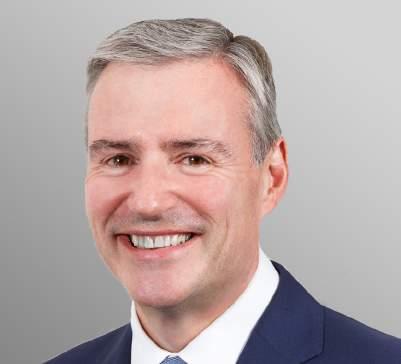
As the forum’s influence has grown, so has its membership. The original Competent Authorities comprising, HSE, EA, SEPA and NRW, have now been joined by the Office for Nuclear Regulation (ONR). The major Trade Associations, in the sector, CIA, UKPIA, CBA and, of course, TSA, were joined by Liquid Gas UK and BCGA. The Unite union added a further dimension to the forum.
The scope has also widened beyond the ‘chemicals sector’ to embrace all onshore COMAH operators. At the present time, the forum‘s reach through the trade associations extends to about half of all UK onshore COMAH sites.
A key underpinning achievement was agreeing a vision for success that was shared by both the Competent Authorities and industry. This common vision provides clarity on what CSF aims to achieve and enables the forum to focus action on delivering those outcomes.
The “vision” was published in July 2015 and re-endorsed in 2018. The main points are:
• Thriving safe and sustainable sector with a regulatory regime that supports business growth,
10 INSIGHT MAGAZINE
Martyn Lyons. Managing Director, TR3 Consulting
high standards and strong compliance
• Good COMAH performance is seen as good business
• Principles of Process Safety Leadership and lessons of Buncefield are embedded in way business manages major hazard risks
• Confidence is underpinned by greater transparency in public reporting and sharing learning
• Consistent good performance and evidence of continuous improvement results in earned recognition and proportionate regulatory scrutiny
• Standards and expectations are clear giving business certainty. Business holds itself to account
• Regulators operate in a joinedup way and adopt a consistent, risk based and proportionate approach
What and where next
After seven years as the extremely successful and highly respected Chair of the CSF, Ken Rivers stood down and Gus Carroll was appointed as the new Chair in 2021. Quickly realising that CSF had been incredibly successful, the big question, recognising the comprehensive scope and magnitude of the work being conducted by the various CSF working groups, was what and where next.
A strategy workshop involving all CSF members was held in 2022 to discuss, debate and agree what was going well and where perhaps there were
areas that could be further enhanced. A comprehensive SWOT analysis was produced, leading to an agreement to conduct an independent strategic review of CSF.
CSF strategic review
The scope of the independent strategic review was agreed. This would need to include, among others, a review of the governance and vision of the CSF taking due regard for the tripartite nature of the forum and the relationship between the forum and its working groups. It was also agreed for the review to contain recommendations focused on the robustness of decision-making and actions, including the composition of working groups and how work is delivered. In addition, the review would have to identify whether the CSF has the capacity to deliver on its commitments, primarily through the working group structure, and to ensure that its work plans are suitably prioritised. Finally, it was agreed for the review to place particular emphasis on ensuring the CSF maintains its original purpose, as set out in the CSF vision statement.
I was asked to undertake the independent strategic review and met with the CSF Steering Group in early 2023 to discuss and agree how to conduct it. A list of crosssectional organisations, both from the CSF membership and from those organisations supporting and assisting CSF, was agreed as a representative sample for me to
discuss the scope of the review with and a defined question set, so as to provide structure to the ensuing discussions with each organisation. Following my discussions with selected organisations, I presented my final report to the CSF in May, which detailed my key findings, common themes and recommendations.
Key findings and common themes
When interviewing the selected CSF member (and affiliated) organisations, it was clear that there were a number of common themes and views, as well as individual views, that members were keen to express.
For one, it is clear that the CSF is well liked and respected and is seen as an extremely valuable, ‘safe’ and collaborative forum for round table open discussion on COMAH related issues with Regulators and relevant stakeholders, where the relevant parties can be ‘aligned but not joined’. And there is pride that the forum exists and that it has been running for some 10 years with demonstrable success achieved. There is also pride that this type of collaborative approach may not exist in other countries, while a particular benefit is seen in that the forum enables difficult issues to be discussed, even if the result is an agreement to disagree in certain areas. Members have also a good understanding of the objectives of CSF i.e. to provide assurance that the objectives of the COMAH regulations are met, Major Accident Hazards are managed such
11 Issue 15
that public relations, reputations, assets and people are protected, with continuous improvement in personal and process safety performance. And, in doing so, that regulation is proportionate and prioritised and industry is sustained, with priorities jointly agreed by Regulators and the regulated to achieve this.

Looking ahead, there is a strong desire for the CSF to continue to build on the success it has achieved. The Summer 2022 workshop recognized that a number of improvements should be considered to achieve this, including the CSF review. The 3 Cs (Coherent, Consistent and Capable) were agreed by most members as the correct themes to take the CSF forward for the next 1-5 years. There was, however, a suggestion that a 4th C - ‘Collaboration’ - could be included given the considerable value in the collaborative and collegiate way in which the CSF operates, enabling good professional relationships to be formed and maintained between
the people who represent the various organizations that are members of the Forum.
From the review, it is also clear that focus should be on both the ‘here and now’ in terms of COMAH and managing Major Accident Hazards (e.g. ageing assets, skills issues, repurposing of assets to cope with energy transition etc.), whilst also being aware of the impact of emerging technologies that will likely be regulated by COMAH. A targeted and prioritised approach to key initiatives was also seen as beneficial as the CSF look to the future, along with a focus on participation in Working Groups and on timely and targeted deliverables from these. In terms of collaboration and partnership, findings point to the benefit of engaging with other forums with regard to specific topic areas and initiatives. And, the need for renewed emphasis on communications and awareness of the important work of the CSF, both internally and externally, is evident.
Recommendations
Based on the discussions I held with the 15 selected CSF member (and affiliated) organizations and the views they expressed, summarized above, my recommendations have been set out in four main areas, namely:
1. Organization, Structure and Governance
2. ‘Focus and Prioritisation
3. Visibility
4. Widening the CSF membership
1. Organization, Structure and Governance
My recommendations under this key area include the establishment of an executive level steering group to oversee the CSF and provide direction and visible leadership to the Working Groups. The group would also be tasked to draft a Strategic Plan, to be reviewed yearly and to be shared, debated and agreed with input from all CSF members, incorporating a reviewed Vision Statement to cover the next 1-5 years of CSF, recognizing that ‘growth’ within CSF will continue to evolve, particularly in light of the energy transition, decarbonization and Net Zero. Recommendations in this area also include the need to focus on establishing collaborative links with other relevant forums to allow these forums, for example, to take on board non-COMAH (and therefore non-CSF) related issues and allow for useful exchanges on issues and technologies beyond the capability of CSF.
12 INSIGHT MAGAZINE
2. Focus and Prioritisation
My recommendations under this key area include an analysis of the number and effectiveness of all Working Groups, ensuring that they have and are completing targeted, deliverable outputs in a timely and efficient manner. In addition, the implementation of a review mechanism for all Working Groups to measure their effectiveness and success would be beneficial.
3. Visibility
In terms of visibility, my recommendations in this area focus on how best to communicate about the work of the CSF, both internally and externally, as well as widen outreach through, for example, a dedicated website, a newsletter for members and the CSF annual conference.
4. Widening the CSF membership
Currently, membership of CSF only covers approximately 50% of COMAH sites. Representation from other upper tier and lower tier COMAH sites would be beneficial to both the CSF and those not currently represented.
The above is the essence of the report I presented to the allmember CSF meeting in May 2023. My recommendations were debated, agreed and endorsed. An order of priority to tackle these recommendations was also agreed.
The CSF and its members will now work through and deliver on these,
whilst, of course, continuing with the valuable work of the CSF.
There is no doubt in my mind that the creation, evolution and the future of the CSF has been, and will continue to be, of enormous importance and significance to Regulators, the regulated and all relevant stakeholders - and consequently to society. I wish the CSF and its members every success in both their current and future activities.
About the COMAH Strategic Forum
Established in 2013, the COMAH Strategic Forum is a high level joint industry and regulator forum working to improve major accident hazard leadership, management and raise standards across the industry. This joint forum provides industry and the Competent Authority (CA) with a means for strategic discussion on how they can work together to provide leadership and encourage continuous improvement in the inspection, management and control (including emergency preparedness and response) of major accident hazards across the onshore industries. The forum’s partners engage collaboratively to identify and share best practice and, where necessary, to commission the development of new guidance.
You can engage with CSF through its annual ‘open meetings’. The aim of the CSF Open Meetings is to “engage the unengaged”. Its target audience is therefore operators of sites with
the potential to cause a major hazard accident but who are not affiliated with the current CSF member Trade Associations.
If your organisation is a member of an existing Process Safety Forum (PSF) trade association, you should contact them. A list of participating trade associations is available on the PSF website: www.p-s-f2.org.uk
The Tank Storage Association (TSA) is a member of the COMAH Strategic Forum.
Author
Martyn Lyons is Managing Director of TR3 Consulting Ltd and has over 35 years of experience in the European Tank Storage Industry. He was formerly CEO of Inter Terminals Ltd and a past President of the Tank Storage Association (TSA). Following the Buncefield fire and explosion in 2005, he represented TSA on the Buncefield Standards Task Group and Process Safety Leadership Group. Martyn is a professional marine and mechanical engineer and is a member of the Institute of Marine Engineering, Science and Technology and a member of the International Institute of Risk and Safety Management.
Issue 15 13
NATECH HAZARDS – HOW CAN WE EFFECTIVELY UNDERSTAND AND ASSESS THE RISKS?
atural Hazards
NTriggering Technological Accidents (NaTechs) lie at the intersection of the natural environment and industrial activities, potentially resulting in severe consequences for both human safety and the environment. As the frequency and severity of natural hazards increase due to climate change, it becomes crucial to effectively understand and assess the risk associated with NaTech events. By implementing proper safeguards and risk reduction strategies, industries and communities can mitigate potential disasters caused by these hazards.
What is a NaTech Hazard?
Firstly, we must understand what is meant by the term ‘natural hazard’. Natural hazards are extreme events that occur within the natural environment and pose a risk to society and/or the wider environment. In general, threats from these hazards are categorised between people, goods and environment. In certain scenarios, a domino effect can lead to a secondary hazard, for instance, an earthquake may trigger a landslide,
and in turn a volcanic eruption (e.g., the 1980 Mount St Helens eruption). The possibility of secondary hazards must be understood when responding to natural hazards.
The term NaTech refers to instances in which natural hazards initiate events which challenge the safety and operation at hazardous installations. An example of this would be loss of utilities, a significant risk associated with most natural hazards due to issues such as downed power lines, burst water/gas lines etc. This may impact a site’s ability to operate normally and safely under these conditions. Any impact a natural hazard can have on a site which has the potential to impact the safe operation of the site is therefore considered a NaTech risk. So, how do we assess this risk?
Understanding and Assessing the Risk
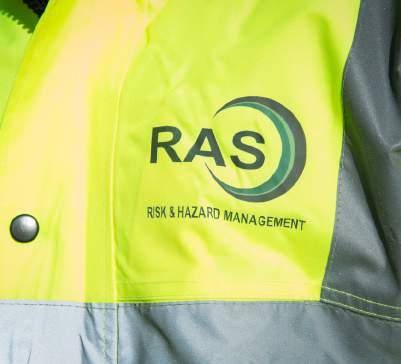
There is a series of questions we must ask ourselves when assessing NaTech risk:
• What are the natural hazards of concern? Only once you know where the risks are coming from can we begin to understand and plan for them.
• What are the consequences of the natural hazard, both direct and indirect? Direct consequences include situations such as physical loss of containment due to damage caused by the natural hazard. Indirect consequences are those
14 INSIGHT MAGAZINE
As the frequency and severity of natural hazards increase due to climate change, it becomes crucial to effectively understand and assess the risk associated with NaTech events.
which can occur when the site itself is not impacted by the initial event. The consequences of natural hazards can impact a widespread area and can result in the loss of utilities or site access which may then have a knock-on effect at the site, e.g., due to loss of power, or water. By understanding these events, the risk picture can begin to form with sites understanding areas of vulnerability to natural hazards. It is also vital to ensure that any secondary hazards are identified as the design may be suitable for the primary hazard but not the secondary hazard.
• What is the risk of this natural hazard? – What is the possibility of the natural hazards you have discussed leading to a NaTech event? It is important to be aware of the likelihood of these events happening, though a low likelihood does not negate the need for sufficient measures to be implemented.
• What safeguards are in place to mitigate the risk? Any site handling hazardous substances should have safeguards in place covering a range of hazards. It is important to note that NaTech hazards may be responsible for the loss of multiple safeguards. Sites should understand the impact of NaTechs on the current safeguards and determine whether any safeguards are designed to be operational in the event of a NaTech incident.

• What more can be done to reduce the risk? Can any additional NaTech-specific safeguards be implemented? Not all barriers are designed to function in a NaTech event, so users should be cautious when crediting existing barriers.
• An additional question to consider is the impact of Climate Change - It is important that efforts are made to implement measures that will provide safety down the line, using climate change forecasts to determine what the risk may look like for the site in the future.
The topic is a complex one, extending much further than discussed here. RAS is contributing to efforts to tackle this issue and will be presenting a paper, “NaTech Hazards – What are they? Why should we care? And what can we do?” at IChemE’s Hazards 33 Process Safety Conference in Birmingham on Thursday 9th November.
For more information, please visit www.ras.ltd.uk
Authors
Aimee Russell, Senior Analyst, Carolyn Nicholls, Managing Director, and Robert Ritchie, Senior Consultant at RAS Ltd.
15 Issue 15
DECARBONISING THE INDUSTRY WITH INNOVATIVE TECHNOLOGIES

have developed the first possibility for mobile degassing world-wide in 2008 and are today the only company operating in Europe that offers mobile incinerators capable of destroying all gases, gas mixtures and vapors of the explosion groups IIA, IIB and IIC with a combustion rate of more than 99.99 % and without open flame.
Mobile emissions reduction services support the industry in the effort of emitting less greenhouse gas emissions and significantly lowering the carbon footprint.
The decarbonisation of industry is an important factor to contribute to environmental protection by reducing the global carbon footprint. Decarbonisation describes all measures to reduce the greenhouse gas (GHG) emissions that result from human activity. As they heavily impact environment as well as human health, it is important to lower the emission of GHGs like carbon dioxide (CO2) and methane (CH4). Economy and industry are still major causes for greenhouse gas emissions, although many actions have already been taken to reduce industrial emissions. Therefore, industrial decarbonisation is an important part of reaching environmental goals like climate neutrality by 2050.
Since 2007, ENDEGS helps industrial facilities to reduce their carbon footprint by offering a range of innovative and efficient emissions reduction technologies. ENDEGS services are environmentallyfriendly, sustainable and efficiently destroy hydrocarbons as well as VOC and HAP emissions. In fact, we
With over 1,600 successfully completed projects all around the world, ENDEGS is an expert in the effective reduction of industrial emissions – whether it is by degassing all types of tanks, containers, pipelines and vessels and other components or by temporarily replacing stationary vapor recovery systems. Furthermore, we offer a mobile vaporizer with nitrogen tank that enables the treatment of components that contain liquified gases under pressure like LNG, ammonia, propane or hydrogen with a high risk of inflaming and explosion as well as the rental of the ATEX Zone 0 robot that ensures a remote-controlled and safe cleaning of industrial tanks from a safe distance.
Significantly reduce your emissions with ENDEGS mobile degassing units
Our mobile incinerators are an innovation in themselves and we constantly aim to improve them and expand their areas of application as the range of products used in the different industries changes quiet regularly and some of those substances are more complex to treat than conventional ones. Thus,
16 INSIGHT MAGAZINE
Kai Sievers, founder ENDEGS GmbH
ENDEGS vapor combustion units are ideally suited for the emissions treatment of all common products that are applied in industries like oil, gas, chemical and petrochemical as well as the food and fertilizer industries.
Let’s have a look at some of our successfully completed projects in the first part of 2023 to illustrate the advantages of applying ENDEGS mobile emissions reduction services. In a project in Germany, we have carried out the degassing of a gasoline storage tank with a volume of 4,000 m3. Venting the 1.2 tons of gasoline would have meant emitting a carbon dioxide equivalent of 96 tons, but by instead combusting the product we have saved CO2/e of 92 tons.
In another project in the Netherlands, we have degassed a crude oil tank with a volume of 40,000 m3. During this project, we have treated 10 tons of crude oil, combusting 33 tons of CO2. Had this amount been vented, it would have meant a CO 2 equivalent of 800 tons. But by instead combusting it with our mobile incinerators, we have saved 767 tons of CO2/e.
Temporary replacement of stationary emissions reduction systems helps to avoid shutdowns
ENDEGS mobile vapor combustion units are also capable of temporarily replacing stationary emissions reduction systems such as vapor recovery units (VRU) during downtimes due to failure or
maintenance. This way, operations in the facility can keep going as usual or with only minimal interference and do not need to be shut down.
The example of a recent project in a refinery helps to understand the advantages of applying ENDEGS mobile incinerators for VRU replacements. During the 18 days project, we have treated 1.2 tons of gasoline and diesel per day und have combusted a total of 71.3 tons of CO2 Had it been vented, that would have meant a CO2/e of 1,728 tons – but by replacing the VRU with our mobile vapor combustion unit, we have saved a CO 2 equivalent of 1,657 tons.
Efficient degassing of vessels and ships
Our mobile vapor combustion units are also perfectly suited for the degassing of vessels. In Duisport, the Port of Duisburg in Germany, ENDEGS created the first legal option for the environmentally friendly degassing of tankers in the Rhine. For this, we have also initiated a change in the legal provision in the ADN (international carriage of dangerous goods on inland waterways) and in various committees.
By degassing an inland gas tanker loaded with propane in a tank with a volume of 3,000 m3, we have for example combusted 79,596 tons of CO2, saving an CO2 equivalence of 1,850 compared to a CO2/e of 1,929.60 would it have been vented. Another project we have carried out this year is
the degassing of a seagoing vessel in Amsterdam to prepare it for loading. Venting the 17.5 tons of naphtha would have meant a CO2/e of 7,008 tons – by instead combusting the naphtha with our mobile incinerators, we have saved a CO 2 equivalent of 6,718.92 tons.
As shown by these numbers, applying innovative services for the reduction of industrial emissions is a future driver for reaching the goal of netzero by 2050 as well as for fulfilling ESG (environmental, social, and governance) criteria. Being aware of your emissions and caring for reducing them brings many advantages for industrial facilities, above all improved health and safety for employees and surroundings, better CO2/e footprint and a better ESG score.
Only together can we make a change and improve air quality.
For more information, please visit www.endegs.com
17 Issue 15
TANK STORAGELEADING THE FIELD IN PROCESS SAFETY
these levels, the TSA collates information about incidents and shares them through its network. Accurate reporting - and I can’t stress the ‘accurate’ part of that enoughhelps us all to monitor and compare our performance and throws the spotlight onto potential emerging issues. That’s in everyone’s interest!
TSA recently published its Annual Review for
The TSA recently published its Annual Review for 2022 and we, at Reynolds Training, were glad to see a clear emphasis on Process Safety and, particularly, in the role Leadership plays in this.
Tier 1 Events
Tier 1 events are those which result in a significant loss of containment of a hazardous substance. There were just two such events reported to the TSA in the whole of 2022, demonstrating that, in the vast majority of cases, our vigilance and process safety measures are working well.
 John Reynolds, Managing Director, Reynolds Training Services
John Reynolds, Managing Director, Reynolds Training Services

This reasserts the importance of Process Safety Leadership underpinning the importance of the Leadership Charter launched in 2020. As we know, the TSA continues to preside over the Process Safety Leadership Working Group of the COMAH Strategic Forum, which embraces and promotes the principles of Process Safety with particular emphasis on the important role of leadership.
As the TSA’s Annual Report makes clear, the levels of Process Safety performance are very good in our industry, but complacency and too much self-confidence could very quickly change that, so we have to remain vigilant. Something we are, thankfully, very good at.
To help the entire industry maintain
Any loss of containment events at a tank storage facility are a cause for concern, so the TSA also runs their Significant Indicators programme to collect data on barrier failuresbecause barriers are crucial to wellmanaged and effective Process Safety.
18 INSIGHT MAGAZINE
The
2022 and we, at Reynolds Training, were glad to see a clear emphasis on Process Safety and, particularly, in the role eadership plays in this.
The creation and maintenance of any Process Safety plan cannot be left as the sole preserve of safety specialists within an organisation. It involves the entirety of the Plant, all the People and the entire Process.
Embedding best practice is something that needs to take place within every tier of a business and an important tenet of effective Process Safety Leadership is that this commitment has to come from the top.
The Role of Barriers
When the HSE issued their booklet entitled ‘The Major Hazard Regulatory Model’, they provided an overview of Hazard Management which they termed ‘The Big Picture’. The five key areas of The Big Picture begin with Leadership and the priority of control measures and barriers:
1. Leadership incorporates indepth knowledge of plant, process and people in designing Major Hazard Control Measures or Barriers that can be deployed to prevent and mitigate against loss of containment. More on these Barriers later.

2. We need to identify the hazards
This is critical, if your Process Safety systems don’t identify the hazards (and potential hazards), you cannot assess the risk or control it.
3. Assess the risks. This includes looking at ‘Challenges to Integrity’, the consequences of any loss of containment and the probability of it occurring. Using this sort of
information, it’s possible to create a Risk Profile for the task.
4. Creating suitable Control Barriers. These Barriers will require the consolidation of contributions from across the plant, throughout the process and all of the people. If everyone follows the Hazard Regulatory Model at every level and at every stage, then the probability of an event is at its lowest.
5. Checking, Measuring and Reviewing. This final stage helps of it occurring. Using this sort of information, it’s possible to create a Risk Profile for the task. to ensure barriers are working as intended, that any new developments are incorporated and that any failures or incidents are fully investigated.
The Role of Leadership
Leadership should be empowering. It should set an effective vision and culture for Process Safety, in which everyone takes ownership of their own responsibilities to themselves, each other, their employer and wider environment. Leadership plays a critical and very specific role in the prevention of catastrophic failures. The challenge for organisations is defining what they need from leaders to produce Process Safety excellence. There are four Essential Competencies to ensure the success of this effective Process Safety Leadership, namely:
1. Have the conviction to lead safely
2. Understand how Process Safety works
3. Develop the ability to influence and encourage people
19 Issue 15
4. Retain and practise good leadership skills
Supervision must also be integral to the development, implementation and maintenance of good internal Process Safety Management. Supervisors need to communicate clearly and frequently with people throughout your process, including from Operations, Maintenance, Management and any External Stakeholders to ensure that Process Safety objectives are established, measured and reported.
Supervisors need to:
• ●Influence the training and competency of staff.
• ●Delegate Process Safety tasks and track performance.
• ●Be responsible for Process Safety KPIs
• ●Ensure review of the Process Safety programme.
• ●Influence and educate other
departments and leaders to ensure program requirements are met.
So, as you see, effective leadership in Process Safety Management requires a never-ending and methodical approach; it requires the engagement of everyone on-site, from the cleaning cupboard right up to the board room; it requires businesses to be open and honest and to share best practice.
Safety Doesn’t Happen by Accident
As the figures in the TSA Annual Report demonstrate, we, in the Bulk Storage sector, are clearly very good at maintaining these rigorous standards - which speaks volumes about the quality of leadership in our sector, as well as the commitment of staff at every level.

And, what’s more, as the HSE RIDDOR figures the report shares show uscompared to other business sectors
- we are maintaining very highest standards of occupational safety. Meaning that bulk storage remains one of the safest industries in the UK.
This level of professionalism and commitment is what we try to instil in all of our learners here at Reynolds Training. Everyone on site is responsible for the health and safety of themselves and the workers around them. We are committed to preparing our learners to enjoy a long and safe career working in our industry. That’s why we built the NCPM, which is the UK’s first fully-operational bulk liquid training facility, while learners can step into a 3D world with Virtual Reynolds.
These are just the latest developments in our mission to give learners the knowledge, skills and experience they need to continue the great work of keeping the bulk liquids flowing through the infrastructure of our country, in a safe, efficient and profitable way.
If you’re interested in these training developments, you can learn more at our new website: www. reynoldstraining.com
20 INSIGHT MAGAZINE
Hazchem Safety announces investment in warehouse expansion

Hazchem Safety, a leading provider of safety solutions and personal protective equipment (PPE), has announced its expansion with a significant seven-figure investment in a new state-of-the-art building in Buckingham, England, solidifying its commitment to meeting the evolving needs of its customers and accommodating future growth. The new facility sees a significant increase in square footage, effectively doubling both the warehouse and office space. The warehouse has expanded from 11,000 square feet to 30,000 square feet, allowing Hazchem Safety to store up to £5 million worth of stock. This substantial expansion ensures that the company can cater to a larger volume of customers, while significantly reducing stock-outs and improving lead times.
Marlon Douglass, Sales Manager, Hazchem Safety, said: “We are excited to unveil our expanded premises, which represents a significant milestone in Hazchem Safety’s journey. The increased warehouse space and stockholding capacity will enable us to meet the growing demands of our customers, improve our operational efficiency, and ensure an even higher level of service excellence. It is a key part of our businessgrowthasitallowsHazchem to take on new larger contracts as we support our customers that require a greater volume of PPE solutions for their employees.” The warehouse expansion not only facilitates increased stock capacity but also
opens up opportunities for additional growth in the southern region by over 100%, with the capability to cater to new contracts from large energy companies. The new facility allows Hazchem Safety to double its current stock holding over time, positioning the company as a leading supplier in the industry. In addition to the enhanced warehousing capabilities, the expanded premises include a spacious showroom and meeting room, designed to provide a customer-centric environment.
Customers can now visit Hazchem Safety’s southern premises to explore a wide range of PPE solutions, view samples, and collaborate with the company’s expert team to design bespoke garments. This investment in a dedicated space reflects Hazchem Safety’s commitment to providing exceptional customer service and ensuring that clients have access to the latest safety innovations. Hazchem Safety, with offices and distribution sites in Aberdeen and Brackley, was founded in 1978 and has grown to be the UK’s leading supplier of workwear and PPE for hazardous environments within the energy sector. Hazchem offers its own range of ORKA® Technical Workwear – a range of flame retardant and hi-vis workwear designed for the offshore oil and gas industries and its HAZTEC® technical workwear brand. Its original ORKA® Magnus coverall is a best seller and industry benchmark and all products are available through its UK sites and trade counter in Dyce, Aberdeen.
Issue 15 21
News
UM TERMINALS ENHANCES ENGINEERING CAPABILITY
UM Terminals has expanded its engineering capability as part of the company’s wider strategic growth plans.
 Phil McEvoy, Managing Director, UM Terminals
Phil McEvoy, Managing Director, UM Terminals

UM Terminals has expanded its engineering capability as part of the company’s wider strategic growth plans. The additional competency within the business means that it can now manage over 80 per cent of its asset integrity inspections and assessments. The new in-house capability includes:
• Non-Destructive testing
• PCN L2 Ultrasonic testing, MPI and DPI
• EEMUA 159, API 653, API 570 assessors
• Rope Access
• Shotblasting & weld preparation
• Scaffolding
• Insulation
• Small civil works
As part of the business’s ongoing investment in IT, it has developed its own bespoke software package that can manage all aspects of task management of integrity inspections. The software package provides mobile working for UM’s technicians so that data can be inputted live into the system, while integrity performance KPIs are also updated and can be
viewed in real-time in dashboard format. UM Terminals maintains a broad portfolio of around 40 products that it stores including vegetable oils, industrial, food and feed, chemical, fertiliser, fuels, biofuels and base oils. It achieves this operating out of 8 terminals, strategically located across the UK, with a current capacity of over 300,000 cubic metres of bulk liquid storage, but with an ambition to increase this to around 400,000 cubic metres. Value-added services include biofuel feedstock pre-treatment, blending, water dilution, product packing, HMRC bonded warehouse and COMAH compliance.
UM Terminals has also increased its project team to enhance its ability to solve complex problems for customers through engineering design and quick turnaround of projects. This is an important contributory factor in the decision of many of UM Terminals’ customers choosing it as its bulk liquid storage partner.
The handling of Hydrotreated Vegetable Oils (HVOs) is an increasingly important part of UM Terminals’ business. It is the most popular renewable liquid fuel of choice as it is a drop-in replacement for mineral diesel. A key driver for the growing interest in HVOs is the looming 2030 deadline for the phasing out of new diesel vehicles and the UK government’s 2050 target to reach net-zero carbon.
22 INSIGHT MAGAZINE
Phil McEvoy, UM Terminals’ Managing Director, said: “UM differentiates itself by reacting quickly to customer enquiries and we pride ourselves on engineering solutions to difficult and complex challenges presented to us by our customers. This fast and efficient approach makes UM terminals very easy to do business with and provides an advantage within the tank storage market. We are committed to ongoing investment and enhancements to the range of services and solutions available to our customers. The recent investment in growing our engineering and project capability is a prime example of this in action. The investment is in two principal areas, firstly recruiting the additional personnel and expertise that enable us to continue to meet and exceed the expectations of our customers, and, secondly, we also continue to develop our IT and software capability, a key part of which is giving our teams and our customers access to real-time data that drives continuous business improvement.”
About UM Terminals
UM Terminals is part of the United Molasses Group. The Group’s other services include the international trading of molasses, the sales and distribution of molasses and the procurement and marketing of vegetable oils for use in the animal feed industry.
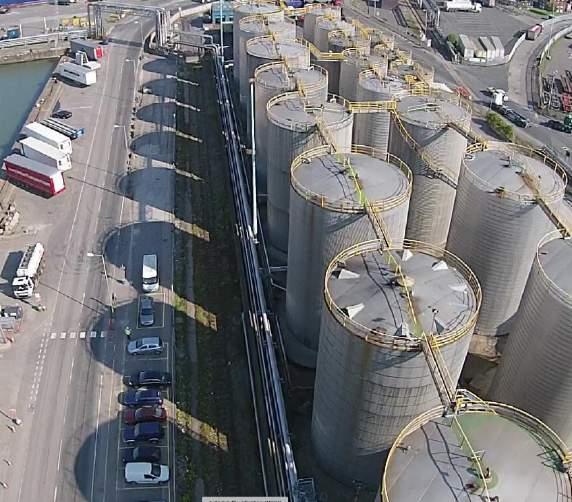
For more information, please visit www. umterminals.co.uk
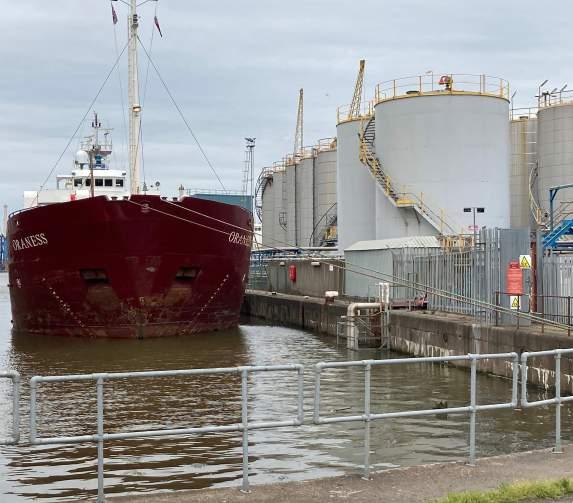
Issue 15 23
As part of the business’s ongoing investment in IT, UM has developed its own bespoke software package that can manage all aspects of task management of integrity inspections.
UM Terminals maintains a broad portfolio of around 40 products that it stores including vegetable oils, industrial, food and feed, chemical, fertiliser, fuels, biofuels and base oils.




TSA Insight Magazine - Issue 15 Tank Storage Association Devonshire Business Centre Works Road Letchworth Garden City Herts. SG6 1GJ United Kingdom www.tankstorage.org.uk T. +44 (0)1462 488232 info@tankstorage.org.uk Follow us CONTACT US The voice of the bulk storage and energy infrastructure sector TSA Tank Storage Associa on
RISK & HAZARD MANAGEMENT
Understanding and facilitating the effective management of risk is our core business. Our expertise covers the full range of risk assessment and management services.
SAFETY BUSINESS ENVIRONMENT
Only when the risk facing an organisation is well understood can it be effectively managed. Key to the successful identification, assessment and management of risk is engagement with the right people, using the right processes at the right time. We believe we are different to many of our competitors and our approach is distinctive, we don’t always walk the well-trodden path but look at each client’s particular risk context and develop a tailored solution, working in partnership with our client.
We work across all aspects of risk, from Quantitative Risk Assessments and Predictive & Consequence modelling, through to the ‘softer’ risks which may affect an organisation’s reputation.
Cogent assured providers –Process Safety Management for Operations (PSMO)
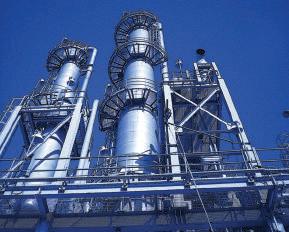


 Authorized distributor for Wolters Kluwer – BowTieXP software
Authorized distributor for Wolters Kluwer – BowTieXP software




RAS
+44 (0) 1244 674 612 • enquiries@ras.ltd.uk • ras.ltd.uk

HCB MONTHLY | FEBRUARY 2018 The world looks to you to make it more sustainable. Look to us to make sure you’re compliant across the globe. Enhesa welcomes HCB to the family Stay ahead of the curve and the competition on: • Changing global EHS regulations • Best practices in EHS compliance management • Tips & techniques for multi-national compliance programs Free updates Sign up to receive free updates on the latest resources and insights from our qualified EHS experts via enhesa.com/subscribe
THE RIGHT FLEET
CHEMICAL TANKERS • ODFJELL HAS DONE WELL TO PREPARE ITS FLEET TO MEET MARKET REALITIES AND IS NOW LAYING PLANS TO BECOME EVEN MORE FUEL-EFFICIENT TO ADDRESS IMO TARGETS
THE CHEMICAL TANKER market softened in the second quarter, reports Odfjell, one of the three largest operators in the sector. Spot rates declined across most trade routes as a result of macroeconomic headwinds, lower economic activity in China and seasonal weakness. Nonetheless, spot rates are still high in historical terms as swing tonnage has remained largely in the product tanker trades where earnings are also firm.
Despite this, Odfjell reported further increases in revenues and profitability during the quarter. Revenues came in at $185.1m, up 2.5 per cent on the first quarter and 15.8 per
cent higher than the prior year; EBIT rose nearly 50 per cent year-on-year to $78.5m, again rising from the first quarter’s $68.3m; and net profit of $52.6m compared well with the first quarter figure of $46.7m and was 75 per cent up on the second quarter 2022. Contracts of affreightment (COAs) renewed during the quarter were at levels on average 8 per cent higher.
“Odfjell delivered another record strong quarter on the back of a profitable contract portfolio and solid operational performance,” comments CEO Harald Fotland. “We expect the demand to be reduced somewhat in 3Q23 in line with seasonal effects. Further renewals of COAs should offset some of this effect and we expect only a marginal decrease in our TCE in 3Q23.”
Market conditions support Odfjell’s strategy over the past two years to focus more on contract employment and less on spot market
pools; the company says that high downstream inventories are now beginning to unwind and the picture for the near-term spot market is “somewhat challenging”. On the other hand, newbuilding activity remains limited and the supply/demand position continues to look favourable.
INS AND OUTS
Odfjell has continued to trim its fleet to meet market demand and address incoming environmental restrictions. Over the second quarter it agreed the sale of the 20,000-dwt stainless steel tanker Bow Santos and the 2013-built coated Bow Pioneer; the latter was delivered to new owners in July and a book gain of $1m will be included in the company’s third quarter figures. Odfjell also took delivery of the 26,000-dwt newbuilding Bow Leopard on long-term timecharter and has agreed to exercise purchase options on the 49,000-dwt Bow Optima (2020) and Bow Olympus (2019), which are currently on financial leases.
In a major step towards improving sustainability, Odfjell has also agreed to install suction sails on one of its ships, which will be the first deepsea chemical tanker to be so equipped. It has been working with bound4blue, a pioneering developer of wind-assisted propulsion technology, and will install its eSAIL system. “Since 2020, we have been studying sail technologies as a potential energy efficiency measure for our fleet,” says Jan Opedal, projects manager at Odfjell. “This technology has significant potential to reduce emissions by harvesting the energy on the ship itself and transforming it directly into a forward thrust.”

“This project marks another leap in our dedication to decarbonisation,” adds Erik Hjortland, vice-president, technology. “As the first tanker company to test the suction-sail technology, we demonstrate our innovative capabilities and dedication to a more sustainable shipping sector. We all have a responsibility to use as few resources as possible, and Odfjell’s long-time efforts in energy efficiency have significantly reduced our fleet’s emissions. The work continues, and we look forward to documenting further improvements with the installation of suction sails.”
www.odfjell.com
WWW.HCBLIVE.COM
TANKER SHIPPING 53
ODFJELL WILL BE THE FIRST DEEPSEA CHEMICAL TANKER OPERATOR TO TRY OUT SUCTION SAILS TO HELP IMPROVE FUEL EFFICIENCY AND REDUCE EMISSIONS
PUSHING FORWARD
AUTOMATION • SHIPOWNERS ARE LOOKING TO STREAMLINE IHM DOCUMENTATION TO ENSURE FULL COMPLIANCE. PROCURESHIP NOW OFFERS A FEATURE THAT WILL MAKE THE PROCESS PAINFREE
THE SHIPPING INDUSTRY is increasingly awash with regulations designed to enforce sustainability and green practices. One of those is the requirement for an Inventory of Hazardous Materials (IHM). This requires shipowners to maintain a detailed list of ship-specific information on the hazardous materials that are present on board, their location and approximate quantities. This list is vital to minimise risk and potential liabilities and to enhance the safety of the vessel and its crew. IHM is also necessary for every vessel to achieve compliance with the EU Ship Recycling Regulation (EU SRR) and the Hong Kong Convention (HKC) for the Safe and Environmentally Sound Recycling of Ships.
However, maintaining this inventory requires a great deal of personnel time and resources
due to the sheer number of different types of products that are delivered and maintained on board. And, with the increasing number of onboard management tasks, it is possible that the documentation of onboard hazardous material can become overshadowed.
This problem is compounded by the need for shipowners to receive specific IHM documentation from suppliers every time an item is purchased on board to declare it poses no risk. Shipping companies have to request this form for each item and suppliers, in turn, must create specific documents for every request. This constant back-and-forth is a sore point for everyone involved in an individual transaction.
Fortunately, in an age of digitalisation and process automation, global shipping is leveraging new technologies to enhance the
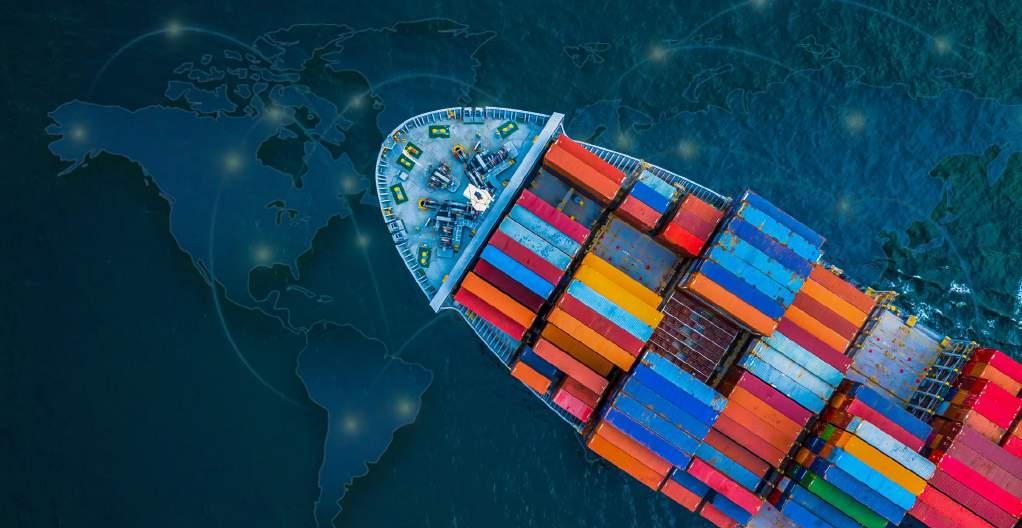
process and optimise how buyers and suppliers are collaborating in order to ensure everyone remains compliant and that their IHM documentation remains up to date. Shipowners are pushing for more streamlined processes to ensure that they are fully compliant with relevant regulations and using an automated system, such as the cuttingedge platform developed by Procureship, will go a long way to ensure the process is as painless as possible.
Procureship’s strong track record of automation to enhance the procurement process meant it was ideally placed to improve the IHM documentation, particularly at a time when regulatory compliance remains a near-critical part of a shipowner’s day-to-day management activities.
LISTEN TO THE USERS
“Since early 2021, shipping companies were told by the International Maritime Organisation (IMO) about the need to comply with relevant IHM regulations,” said Angeliki Papathanasiou, head of operations at Procureship. “This was a major concern for our users, many of whom are responsible for sending and receiving IHM documents on an almost daily basis. We found that many buyers’ and suppliers’ purchasing
54 HCB MONTHLY | SEPTEMBER 2023
departments were not ready for such a radical change, so we felt the need to respond accordingly.”
Procureship is a Greece-based e-procurement platform that is leveraging the power of high quality data, automation and machine learning (ML) to enhance the procurement process for the global shipping sector. Crucially, Procureship has adapted its platform to enable IHM documentation to be easily and swiftly sent from one party to another, ensuring that its users are always compliant with any relevant regulation throughout the process.
“We heard from our users that they needed help with this issue,” Ms Papathanasiou continues. “They needed to understand their IHM documentation better and they needed a simpler way of ensuring they were compliant.
To fully understand the issue, we undertook a major internal research project to understand IMO regulations and the complete IHM documentation process. We worked closely with industry experts and classification societies to understand how suppliers need to comply.

“What we discovered is that we already had all of the Purchase Order data in our system for every transaction. We decided the best course of action was to add an IHM documentation feature at the order confirmation stage of the transaction, enabling buyers to request the documentation and suppliers to easily upload their own forms into the system or utilise Procureship’s newly developed forms,” she adds.
Using this automated feature, suppliers are able to submit both Material Declaration (MD)
and Suppliers Declaration of Conformity (SDoC) forms during the Purchase Order confirmation on the platform. Completed forms are automatically registered in the buyer’s dashboard where they can be reviewed and approved. Then there is an option to send all approved IHM forms automatically to the relevant vessel.
Ms Papathanasiou notes that the company is already seeing the benefits of implementing an in-house IHM documentation, saying:
“Since we launched the feature, our users are preferring to use our in-house forms instead of uploading their own due to its simplicity. Our forms are verified by Bureau Veritas in conjunction with IMO resolution MEPC.269(68) so our users have the confidence to know that all forms are fully compliant.”
www.procureship.com
Our membership products
WWW.HCBLIVE.COM TANKER SHIPPING 55
Powerful insight and intelligence to unlock the full value of regulatory compliance in your business. Chemical Watch membership helps you stay compliant, develop your team’s skills and keep pace with the latest developments. News & Insight
reporting, comment
analysis to
product
complete learning and development solution.
training, conferences, webinars
Comply with confidence
Award-winning
and
inform your
safety strategy Professional Development Your
With
and more.
regulatory coverage at your fingertips.
today and plan ahead.
Regulatory Database Comprehensive
Comply
find out more, visit: www.chemicalwatch.com/solutions
To
NEWS BULLETIN
TANKER SHIPPING
STAINLESS SETS OFF
Stainless Tankers, the chemical tanker fleet established by Tufton Oceanic this past March, has recorded net income of $1.2m for the three months to end June. The company’s seven 20,000-dwt tankers, all acquired between April and late June, generated net revenue of $6.6m.

Stainless Tankers says spot rates have stabilised at a slightly lower level than the very strong winter market but are still around the peak of the previous cycle in 2015/16. One-year timecharter rates remain well above the previous peak, indicating continued optimism in the near term.
Stainless Tankers plans to transfer five of its ships into the Womar stainless steel pool during the third quarter, with the other two to follow later. It notes that it has so far drawn down $67.5m of the committed tranche of funding provided by Tufton to acquire ships and that there is a further $65.0m outstanding. stainlesstankers.com
STOLT, CMB SEAL THE DEAL
Stolt Tankers has taken delivery of the first of six newbuildings ordered from China by Compagnie Maritime Belge (CMB) for its Bochem fleet. The two companies agreed in June that the new 26,000-dwt units will go under long-term timecharter and pooling to Stolt Tankers. Bochem Houston has now joined the Stolt Tankers Joint Service fleet (below) and is to be followed by five sister ships over the course of 2023 and 2024.
“This agreement is an excellent opportunity to further solidify our relationship with CMB and Bochem,” says Lucas Vos, president of Stolt Tankers. “As well as securing attractively priced tonnage in a firm chemical tanker market, these modern, fuel-efficient ships will help to lower the age profile and carbon intensity of our fleet while offering customers more flexibility as they can trade in any of our deep-sea routes.
“With the option for these ships to be retrofitted for ammonia propulsion, the agreement also supports Stolt Tankers’ commitment to reducing its emissions by 50 per cent by 2030 (compared to 2008 levels). At the end of the day it’s our customers who truly benefit, as we expect this deal to drive further improvements in our best-in-class customer service and reliability as we modernise our fleet,” Vos adds.
www.cmb.be
www.stolt-nielsen.com
YANGZIJIANG INTO CHEMICALS
Yangzijiang Financial Holding, a Singaporebased investment management company, has invested some $32.1m in two stainless steel chemical/product tankers: RT Star (26,200 dwt, 2011) and OM Shanghai (20,000 dwt). Both are owned by the fund in collaboration with a Singapore-based operator.
Yangzijiang Financial has also entered into a co-chartering agreement for eight 49,999-dwt MR chemical/product tankers with an established international tanker charterer for a period of less than a year; the parties intend to secure timecharters for the first part of the charter period, and hedge against the weak summer months through forward freight agreements.
“The tanker project investments and co-chartering agreement are in keeping with the core strategies of the Fund, which has closed a total of 12 deals [as of 20 July]. To date, the Fund has committed US$178.8m in funding and has invested a sum of US$82.8m,” the company states.
Yangzijiang Financial, which was formed as a spin-off from Yangzijiang Shipbuilding last year, is focusing on investment in and leasing or chartering of maritime assets, specifically operating in alternative energy sectors.
www.yzjfin.com
56 HCB MONTHLY | SEPTEMBER 2023
UTKILEN CROSSES STREAM
Utkilen has completed the sale of the four Stream Shipping vessels, all 19,999-dwt units built by Fukuoka in 2018/19. The divestment was announced in March and the ships have been delivered to their new owners in June and July.
“The sales will contribute to a strong sales gain and substantial liquidity contribution in 2023,” the company states. Utkilen has also recently sold two other 19,900-dwt ships from its global fleet, concentrating now on its core fleet of smaller chemical tankers, where it has four 6,700-dwt eco-efficient tankers set to join from the Icdas shipyard in Turkey next year. utkilen.no
CAPITAL FINALISES NEWBUILD SERIES
Capital Ship Management has taken delivery of the 50,000-dwt product/chemical tanker newbuilding Akrisios, the last in a series of six built at Hyundai Vietnam. The tankers were designed to be able to be converted to run on LNG, and to be fitted with shore power connections and wind-assist equipment.
“Being Tier III compliant for reduced NOx emissions, assigned ABS ENVIRO notation, as well as ABS Wind-Assisted Ready, HVSCReady and LNG Fuel Ready notations, and equipped with IHM notation for safe recycling, Akrisios becomes one of the most environmentally friendly, technologically advanced and efficient vessels in the global MR fleet,” the company states. www.capitalship.gr
EITZEN GETS INTO LPG
Eitzen Avanti has acquired B-Gas from Bergshav Shipholding and its partners. B-Gas, which is headquartered in Hellerup, Denmark, owns a fleet of ten LPG tankers, mainly operating in north-western Europe, and has three more under management and charters.
“Acquiring B-Gas is another big step in Eitzen’s ambition in becoming a leading owner and operator of liquefied gas carriers and we are very pleased that we have now secured a strong foothold in the coaster gas market,” says Axel C Eitzen, executive chairman of Eitzen. “We are very positive about the outlook for the LPG
and petrochemical business in north-west Europe and we see synergies between B-Gas and our chemical company Christiania Shipping, which operates with same size of vessels in the same geographical markets and with the same clients.”
“With the strong market in mind, the timing of the sale of B-Gas makes a lot of sense for us and I have no doubt that Eitzen is the right buyer to bring B-Gas to the next level in supplying safe and first-class logistics solutions for the clients of B-Gas going forward, with the assistance of the experienced team in Hellerup,” says Atle Bergshaven, executive chairman of Bergshav. bgas.net
www.christianiashipping.com
TORO BUYS GAS SHIPS
Toro Corp has completed its entry into the gas tanker market, having taken taken delivery of four 5,000-m3 LPG carriers that were acquired this past April. Three of the four are 2015-built units, which were priced at just under $17m each, while one, now renamed Dream Terrax, was built in 2020 and cost Toro $19.9m.
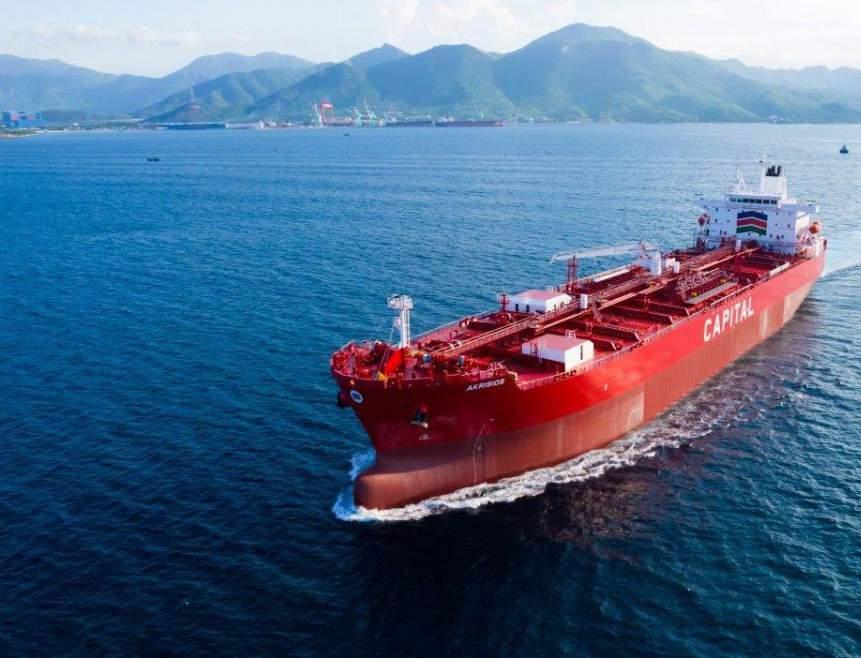
The new gas ships have arrived at a time when Toro is gradually shedding its older product tankers, taking advantage of very firm prices on the secondhand market. As a result, the company posted total vessel revenues of $24.9m for the second quarter, down from $25.8m last year, though net income rose from $5.4m to $55.4m.
Petros Panagiotidis, CEO of Toro Corp, comments: “We enjoyed a robust charter market in tankers during the second quarter, as the supply/demand fundamentals of the crude and oil product markets remain solid. Importantly, we entered the gas market by taking delivery of all four modern LPG carriers we agreed to purchase during the second quarter, positioning Toro in a segment we believe offers promising prospects. We continue to renew our fleet by selling older tonnage, taking advantage of the demand for second hand tanker vessels. We will continue to seek opportunities to profitably grow our business.”
www.torocorp.com
TANKER SHIPPING 57
WWW.HCBLIVE.COM
PAYING OFF
AZELIS HAS REPORTED “strong margins and cash generation” in the first half of 2023, with revenues up 6.1 per cent year-on-year at €2.1bn, gross profit up 6.8 per cent at €517.1m and adjusted EBITDA ahead by 8.6 per cent at €263.4m. Net profit dropped by 22.9 per cent to €109.2m after some accounting charges as well as the impact of higher interest rates.
Commenting on the results, CEO Dr Hans Joachim Müller says: “Our results for H1 2023 reflect the current trends in the industry, which is undergoing a normalisation following very strong growth in 2021-2022. The group’s diverse footprint allows us to mitigate the weaker demand in some of our markets, notably in the Americas. Furthermore, our asset-light, defensive business model allows
us to generate strong cashflows despite the pressure on our top line.
“Notwithstanding the current challenges in our industry, we continue to execute on our growth strategy,” Dr Müller adds. “In H1, we expanded our footprint with the acquisition of six companies that significantly strengthen our lateral value chain. We are also more determined than ever to strengthen the relationships with our principals, as reflected in multiple mandate wins during the period.”
Much of the growth this year took place in the Asia-Pacific division, where revenues were 36 per cent up on the prior year, with most of this accounted for by recent acquisitions. Revenues grew by only 3.1 per cent in the EMEA region, with acquisitions more than compensating for a contraction in organic
sales. Similarly, while revenues fell in the Americas division by 3.7 per cent, this was supported by an 8.9 per cent increase in revenues from recently acquired businesses. In product terms, demand continued to hold up well in Life Sciences, with revenue increasing 9 per cent year-on-year, supported by robust performance in Pharma across all regions, stable demand in Food & Nutrition in EMEA and Asia Pacific, and revenue contribution from recent mandate gains. Industrial Chemicals increased by 1.7 per cent year-on-year, with contributions from recent acquisitions mitigating the continued weakness in Industrial Chemicals, especially in the Americas.
CHANGE AT THE TOP
Consistent with its long-term strategy, Azelis has appointed Anna Bertona (left), currently president/CEO of Azelis EMEA, as the next group CEO when Dr Müller retires at the end of the year. “Having successfully led our EMEA business since 2016, she not only embodies our mission, but also drives our values as Executive Committee sponsor for our Sustainability agenda,” Dr Müller says. “I have every confidence that Anna will successfully lead the Group to the next stage of its growth journey.”
Bertona has worked for Azelis for almost ten years, having started as head of strategy in 2013. After being appointed CEO of Azelis EMEA in 2016, she led the division through a period of consistent growth, with revenues rising from €749m in 2016 to €1.8bn in 2022.

“I am delighted to have been appointed to lead Azelis as CEO,” Bertona says. “I strongly believe that Azelis has a winning strategy centered on delivering value to its customers and principals, through a relentless focus on innovation, digitalisation and sustainability. The drive and dedication of all our employees around the world are a critical element behind the success of Azelis. I look forward to building on the impressive journey Azelis has had under Jochen’s tenure and leading Azelis in the next chapter of exciting growth and development.”
www.azelis.com
58 CHEMICAL DISTRIBUTION
HCB MONTHLY | SEPTEMBER 2023
SUCCESSION •AZELIS HAS REPORTED A STRONG FIRST HALF TO THE YEAR AS IT PREPARES FOR A PLANNED TRANSITION TO NEW LEADERSHIP FROM THE START OF 2024
Tailor made tank container solutions

















Telematics




Telematics solutions for enhanced product traceability and supply chain management.







Sustainable Solutions
Sustainable solutions for reducing the carbon footprint of ISO tank operations.








SAFE TO SHIP
Fleet Management
Fleet management services for reduced operational costs.


24/7
Fleet info
24/7 Cloud-based accessibility to fleet information and documentation.
Advice

Expert advice on product compatibility.




Organisation (IMO), International Labour Organisation (ILO) and the UN Economic Commission for Europe (ECE).











Application of the CTU Code appears patchy thus far; while its use is mandatory in certain jurisdictions and for certain goods, and is welcomed by carriers, insurers and regulatory bodies, it would appear that in many parts of the world it is being ignored or, perhaps more likely, is simply unknown.

THE USE OF freight containers revolutionised international transport, allowing all manner of goods to travel seamlessly by all modes virtually anywhere in the world. Yet, despite more than half a century of experience in using containers, accidents still happen regularly, not least during maritime transport.
Those accidents reflect bad practices, mostly on the part of shippers or consolidators: overweight containers, poor securement of cargo within the box or, in the case of dangerous goods, undeclared or misdeclared cargo.
containers. In particular, it is thought, container stuffers are often unaware of the forces to which containers will be subjected during transport by sea, which are very different to those experienced during rail or road transport.









The result of these failings is often damage to the cargo, with a financial loss to the shipper and disappointment to the consignee, or in worse cases damage to third-party property, personal injuries and environmental damage.
Industry associations are keen to see the practices explained in the CTU Code get used more widely and have begun efforts to promote it in different fora around the world. At the Intermodal Europe event in Amsterdam in November 2017, for instance, four bodies gave a joint presentation on the Code and the responsibilities it places on the various parties in the transport chain.
With more than 30 years experience in ISO container tank leasing, Peacock offers global availability of standard and special ISO tanks for a wide variety of petrochemicals, liquid food products, bitumen, liquefied gases and cryogenic gases.



There are many reasons for this situation but much of it is to do with a lack of knowledge on the part of those packing


CREATING THE CODE
There are tools available to improve matters. A lot of work has been done over the years to try and drive better standards in the containerised chain, culminating in the publication of the Code of Practice for Packing of Cargo Transport Units (the CTU Code) by the International Maritime
The Global Shippers Forum (GSF), ICHCA International, TT Club and the World Shipping Council (WSC) have for some months now been working together to improve safety through a focus on cargo integrity. The specific aim has been to promote wider use of the CTU Code for correct packing and securing of all containers. Improved standards of declaration and handling of dangerous goods are also within the scope of the Code, together with steps to prevent pest contamination, and the provision of
HCB MONTHLY | FEBRUARY 2018 59
CONTAINERS • THE SAFETY OF CONTAINERISED CARGO IN MARITIME TRANSPORT REMAINS A CONCERN, DESPITE EFFORTS FROM ALL SIDES TO IMPROVE STANDARDS
PICTURE CAPTION: SECOND QUARTER TO BE SOMEWHAT STRONGER THAN THE FIRST QUARTER.”
Swap body Standard
Specialized
Cryogenic Gas RENTAL • LEASING • SALES Singapore The Netherlands China USA
www.tankcontainer-sales.com 2023
Bitumen
info@peacock.eu www.peacockcontainer.com
NORMAL CONQUEST
RESULTS • BRENNTAG SEEMS HAPPY WITH ITS FINANCIAL PERFORMANCE SO FAR THIS YEAR, THOUGH RESULTS ARE WELL DOWN ON 2022. MEASURES ARE BEING TAKEN
LAST YEAR WAS, as we now know, an exceptional period in business as the world rebounded from the pandemic years. This year it is becoming clear that 2022 was a one-off, with players along the chemical supply chain reporting a normalisation in terms of financial performance, even if demand levels are weak.
Brenntag, for instance, has reported what it calls “solid” results for the second quarter, notwithstanding that the figures represent a sharp drop on the year earlier. Second quarter gross profit was €1.02bn, down 9 per cent year-on-year, with operating EBITA off by 26 per cent at €332m. “Overall, the results are broadly in line with expectations in a continuously challenging market environment,” the company states. On the other hand, free cash flow for the first half of the year came in close to €900m, the highest ever first-half figure.

“Due to our resilient business model, we saw a solid operational and financial performance in the second quarter of 2023,” comments CEO Christian Kohlpaintner. “Given the continued challenging and adverse market environment and compared to the record-high levels of the prior-year quarter, the results are broadly in line with our expectations. In light of the sequential volume recovery seen since the beginning of the year as well as indications that inventory control measures on our customer side are bottoming out, we are confident that the volumes in the second half of 2023 will exceed the volumes in the first six months.”
Brenntag Specialties reported an operating gross profit of €374.8m (-15.9 per cent), with operating EBITA down by 32.6 per cent at €144.7m, with overall lower volumes and falling sales prices. The Pharma and Water
Treatment industries performed very well, but this could not compensate for subdued demand in other segments. Nutrition and Personal Care/HI&I could not repeat the exceptionally strong prior year results. The performance of the Material Science business continued to be negatively impacted by muted construction activity. In addition, an overall weaker performance in the APAC region impacted divisional results.
Brenntag Essentials saw an increase in volumes compared to the first quarter but these were well down on the year-earlier level. Operating gross profit fell by 3.1 per cent year-on-year to €638.3m while operating EBITA was 12.7 per cent lower at €225.5m, impacted by weaker demand levels in China and Latin America.
CUTTING COSTS
In response to the new demand pattern, Brenntag has been looking hard at its cost base. “As the market environment remains challenging and we are experiencing continued top-line pressure for both divisions, we keep a close eye at our cost development to safeguard our results in 2023 without jeopardising our stringent strategy execution,” says CFO Kristin Neumann. “Therefore, we have been reviewing our cost base and initiated several cost
60 HCB MONTHLY | SEPTEMBER 2023
containment measures which we will implement and intensify in the second half of 2023.”



Those measures include a planned reduction in headcount of 300 over the second half of the year, mainly by using global hiring control measures and natural fluctuation. As part of the continued optimisation of its global site network, Brenntag has identified another 25 sites worldwide that are to be closed by the end of the year. In addition, the company will reduce discretional expenses and other costs in the field of travel, consulting, third-party contractors and indirect spend.
WINNING MENTALITY
Meanwhile, the ‘Strategy to Win’ plan continues to be executed, with several significant milestones during the second quarter. For Brenntag Specialties these included the establishment of a new regulatory team for Pharma in EMEA, a new partnership with
Qualifyze to enhance pharmaceutical audit offering, the signing of the acquisition of Saifu Chemicals to increase the Life Science presence in China, and portfolio quality enhancements such as the partnership with Royal Avebe.



In recent months, Brenntag Essentials has successfully strengthened its presence and flexibility at the local level by opening new sites in Brazil, Argentina and North America, and it has been granted the necessary licences for a major new site in China. The acquisition of Aik Moh creates a strong platform for regional growth in Asia Pacific, the strongest growth region for the Essentials division.
As this strategy progresses, Brenntag Specialties will accelerate the implementation of its measures to close the relative performance gap to pure-play peers. The measures include a detailed review and
optimisation of its industry product portfolio, new collaboration with strategic suppliers, and the expansion of the value-added services offering.
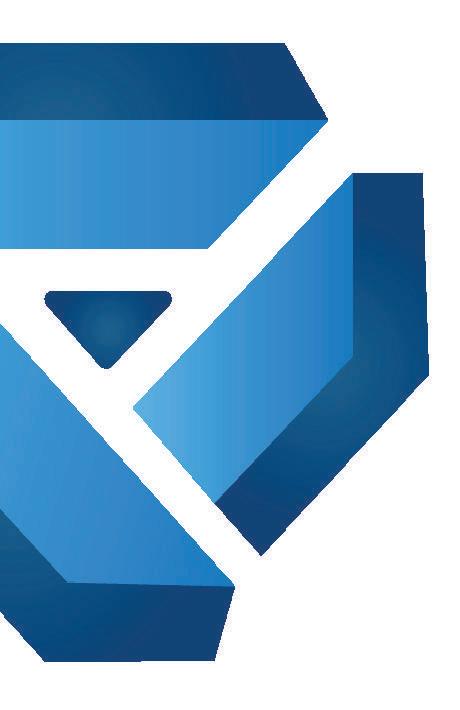
Brenntag is developing its governance and organisational structures, both for the Group and the two divisions. Since August 1, 2023, the redesigned Management Board of Brenntag consists of four members: Kohlpaintner, Neumann, Ewout van Jarwaarde, CEO of Brenntag Essentials, and Michael Friede, CEO of Brenntag Specialties. A new governance and steering model will be introduced for both global divisions from January 2024. “The evolved divisional setup supports the creation of incrementally more independent, autonomous, and marketleading businesses to accelerate the implementation of ‘Strategy to Win’,” the company states.
www.brenntag.com
WWW.HCBLIVE.COM CHEMICAL DISTRIBUTION 61 ADR/RID BITUTAINERTM
NEWS BULLETIN
CHEMICAL DISTRIBUTION
APOLLO CLOSES UNIVAR DEAL
Apollo Funds has completed its planned acquisition of Univar Solutions; the deal includes a minority shareholding by a wholly owned subsidiary of the Abu Dhabi Investment Authority. The company will continue to operate under the Univar Solutions name and brand and maintain its global presence.
David Jukes, president/CEO of Univar Solutions, says: “The completion of this transaction begins the next chapter for Univar Solutions as we further enhance our position as a leading global chemical and ingredients solutions provider with enhanced flexibility to explore growth opportunities for the benefit of customers, suppliers, employees, and industry alike. I couldn’t be more pleased to be in such an advantaged position due to our broad product offering and enhanced presence in target growth end markets, award winning customer experience, leading digital tools, and expanded suite of service capabilities.”
“We are excited to partner with David and the talented Univar Solutions team to build on the company’s strong foundation and track record of innovation, leveraging our extensive industry experience,” adds Sam Feinstein, partner at Apollo. “We have strong conviction in Univar’s potential and look forward to embarking on a number of exciting initiatives to help accelerate the Company’s growth.” www.univarsolutions.com
IMCD CARRIES ON BUYING
IMCD has continued to expand its network in Latin America, acquiring Chile-based speciality distributor Maprin. Established in 1975 and headquartered in Santiago, Maprin is a leading raw materials distributor for the beauty and personal care industry. It is an ISO 9001:2015 certified company that demonstrates responsibility in adopting high regulatory and quality standards to serve the Chilean market.
It is privately owned and features a diverse portfolio of products from leading global manufacturers of raw materials for use in a variety of applications in the beauty and personal care industries.
“Our two companies joining forces is an important step in strengthening IMCD’s presence in this continuously developing country. Maprin’s portfolio bolsters our capabilities in delivering effective solutions to customers and creates opportunities for developing IMCD’s core markets,” says Nicolas Kaufmann, Americas president, IMCD.
IMCD has also reached agreement to acquire Sachs Chemical, a Puerto Rico-based warehouse operator and distributor specialising in the pharmaceutical market; Sachs was founded in 1986 and, since 2015, has also had a presence in Costa Rica, from where it serves the Central American market.
“Sachs Chemical has been a beacon of innovation and customer service in the region for nearly four decades,” says Michelle Ortega, operations manager at Sachs Chemical. “The opportunity to become part of IMCD’s
worldwide presence is a catalyst for further growth. With our shared corporate values and customer-first mentality, we look forward to providing our customers in the region with a comprehensive approach to meet their needs.”
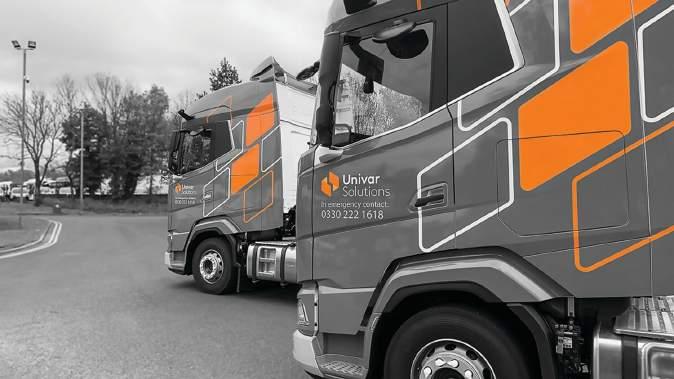
“Sachs’ strong industry reputation, close customer relationships and customised solutions for the pharmaceuticals industry are an excellent fit with IMCD,” adds Fernando J Espinosa Jr, LATAM North managing director at IMCD. “Puerto Rico is an important production location for the major US-based pharmaceuticals customers, and this acquisition is an important step to accelerate IMCD’s growth in the region.”
IMCD has meanwhile reported slightly weaker first-half financial results as the global markets have normalised since the exceptional year in 2022. Operating EBITA fell 6 per cent year-on-year to €280m and net profit fell 14 per cent to €153m. CEO Piet van der Slikke remains optimistic, however, saying: “After an exceptional performance in 2022 and despite current challenging macroeconomic conditions, IMCD showed its resilience in the first six
62 HCB MONTHLY | SEPTEMBER 2023
months of the year. We remain confident about our diversified business model and continue to execute our growth strategy with diligence. With thirteen acquisitions this year, of which seven acquisitions in Latin America and Asia, we further expanded our global market presence and are well-positioned to deliver future business growth.”
www.imcdgroup.com
HAWKINS ADDS MORE WATER
Hawkins has continued to expand its water treatment chemical footprint with the acquisition of EcoTech Enterprises, which manufactures, blends, packages and distributes water treatment chemicals for its customers throughout Arkansas and surrounding states.
“As we continue to execute on our strategy to grow our water treatment business, we believe this tuck-in acquisition will allow us to accelerate our growth in Arkansas and the surrounding region,” says Patrick H Hawkins, CEO of Hawkins Inc. “EcoTech has built a strong business that is well-connected with the local community and we intend to maintain those connections. I would like to welcome the EcoTech team to the Hawkins organisation
and look forward to our continued growth together.”
www.hawkinsinc.com
DKSH KEEPS ON TRACK
DKSH has reported first-half net sales of CFr 5.6bn ($6.5bn), up 0.5 per cent on the first half of 2022, with core EBIT up 6.1 per cent at CFR 162.6m; profit after tax was virtually flat at CFR 107.1m.

“I am pleased to report that, after a strong year in 2022, DKSH delivered above GDP growth and further margin expansion in the first half of 2023,” says CEO Stefan P Butz. “Capitalising on diligent strategy execution and resilient business models, our valued employees across all Business Units contributed to the result. Based on our good first half results, we confirm our outlook for 2023.”
The best performance was seen in DKSH’s two smallest business units, Technology (sales up 25.5 per cent) and Performance Materials (up 6.6 per cent). The Technology business in particular benefited from increased investments in the scientific instrumentation, precision machinery, and semiconductor industries across Asia Pacific, while the Performance Materials
business saw the impact of recent mergers and acquisitions at a time of slowing industry activity.
www.dksh.com
BIESTERFELD RENAMES IN NORDICS
Lindberg & Lund AS, which has been a whole owned subsidiary of Biesterfeld Spezialchemie since 2019, has been renamed Biesterfeld Norge. Its subsidiaries ABIC Kemi AB and Lindberg & Lund Oy have also been renamed Biesterfeld Sweden and Biesterfeld Finland, respectively.
“The name change has no practical consequences for existing partners,” says Peter Wilkes, member of Biesterfeld Group’s Executive Board. “Biesterfeld Norge, Biesterfeld Sweden and Biesterfeld Finland will remain leading suppliers of well-known brands within technical chemical products in its markets. We will now highlight the affiliation to the international Biesterfeld Group and the access to new expertise and further product areas even more clearly.”
www.biesterfeld.com
BRENNTAG INTO INDIAN LUBES
Brenntag has been appointed exclusive distributor by Quality Speciality Chemicals in Asia Pacific for its range of industrial lubricant additives packages and components, metalworking fluids packages, rust preventives, and corrosion inhibitors. Quality Group is one of India’s leading producers of industrial lubricant additives and specialty chemicals.
“Over the last thirty years, Quality Speciality Chemicals has grown from a start-up to become a leading manufacturer in our field. To chart our path for the next lap of growth, we are confident that Brenntag is the ideal partner to help us break into the Asia Pacific market,” says Rushabh H Shah, director of Quality Speciality Chemicals. “Brenntag understands our needs and is easy to do business with. We are excited to tap into Brenntag’s global set-up and in-depth industry knowledge to meet and exceed increasingly complex and demanding technical and safety requirements.”
corporate.brenntag.com
CHEMICAL DISTRIBUTION 63
WWW.HCBLIVE.COM
Global Industrial Packaging Conference Focuses on the Circular Economy
Representatives of the global industrial packaging industry will meet this September in Ghent, Belgium to discuss the state of the industry and its role in the Circular Economy.
The triennial event will be held 27 – 29 September 2023 at the Marriott Hotel, which is situated in the heart of Ghent, an extraordinarily beautiful and historic city. Attendees will hear presentations on business, regulatory, technical and environmental issues from industry leaders representing reconditioners, manufacturers, suppliers and packaging users.

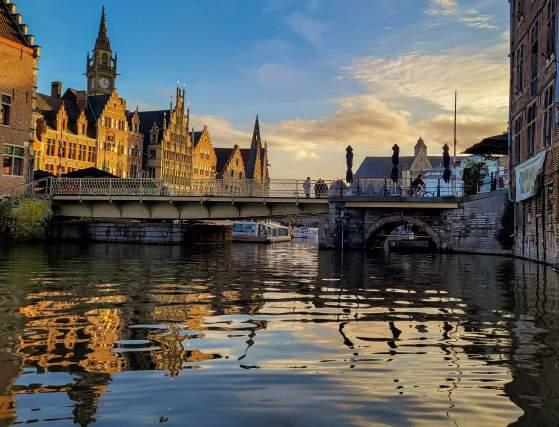
The conference theme, Industrial Packaging and the Circular Economy, highlights the important role that industrial packaging plays in today’s global economy. Conference Chairman Philippe Verstraete will welcome representatives of more than 20 nations to Ghent for this historic event.
In addition to educational sessions, the Conference feature exhibits by industry suppliers, special programs for guests and accompanying persons, and several plant tours.
HCB MONTHLY | FEBRUARY 2018
27-29 SEPTEMBER 2023 GHENT BELGIUM
Information about conference registration, hotel reservations, tours and other practical matters is available on the Ghent 2023 conference website at www.IIPC2023.org.
International Industrial Packaging Conference 2023
PC
CONFERENCE DIARY
SEPTEMBER
Gastech 2023
SEPTEMBER 5-8, SINGAPORE
International conference and trade show for the LNG and LPG industries www.gastechevent.com
Labelmaster DG Symposium
SEPTEMBER 6-8, CHICAGO
16th annual Dangerous Goods Symposium hosted by Labelmaster www.labelmaster.com/symposium
FECC Congress
SEPTEMBER 11-13, SITGES
Annual meeting of the European Association of Chemical Distributors www.fecc-congress.com
Spillcon
SEPTEMBER 11-15, BRISBANE
Triennial Asia-Pacific oil spill prevention and preparedness conference www.spillcon.com
CVSA Annual Conference
SEPTEMBER 17-21, GRAPEVINE, TX
Annual meeting of the Commercial Vehicle Safety Alliance www.cvsa.org/events/cvsa-annual-conferenceand-exhibition/
Virginia Hazmat Conference
SEPTEMBER 18-22, NEWPORT NEWS
40th annual networking and training meeting sponsored by the Virginia Association of Hazardous Materials Response Specialists www.virginiahazmat.org/annual-hazmatconference/
Argus Sustainable Marine Fuels Conference
SEPTEMBER 20-22, HOUSTON
Forum to discuss the path to decarbonising marine fuels www.argusmedia.com/en/conferences-eventslisting/sustainable-marine-fuels-conference
ECTA Responsible Care Workshop
SEPTEMBER 21, BRUSSELS/ONLINE
Update on Responsible Care implementation in European chemical transport
https://ecta.com/product/ecta-rc-trainingworkshop-september-21st/
TSA Conference & Exhibition
SEPTEMBER 21, COVENTRY
21st annual meeting of the UK Tank Storage Association
www.tankstorage.org.uk/conference-exhibition/
Ouray Transportation & Response Symposium
SEPTEMBER 24-27, DENVER
First symposium to spread technical knowledge on hazmat response www.ourayservices.com/trs2023
EPCA Annual Meeting
SEPTEMBER 25-28, VIENNA
57th annual meeting of the European Petrochemical Association www.epca.eu
Maritime Decarbonisation Europe
SEPTEMBER 26-27, AMSTERDAM
Two-day event looking at strategies for reducing GHG emissions to 2050 www.rivieramm.com/events/maritimedecarbonisation-pathways-to-2030-europe
International Industrial Packaging Conference
SEPTEMBER 27-29, GHENT Conference focusing on the role of packaging in the circular economy www.iipc2023.org
OCTOBER
SCHC Annual Meeting
SEPTEMBER 30-OCT 5, ARLINGTON, VA
Annual Meeting of the Society for Chemical Hazard Communication www.schc.org/meetings
ADIPEC
OCTOBER 2-5, ABU DHABI
39th annual Abu Dhabi International
Petroleum Exhibition & Conference www.adipec.com
FIATA World Congress
OCTOBER 3-6, BRUSSELS
Annual congress of the International Federation of Freight Forwarders Associations
https://fiata2023.com/
INMEX-SMM India
OCTOBER 4-6, MUMBAI
Biennial maritime exhibition for the south Asian shipping industry www.inmex-smm-india.com
Tank Truck Week
OCTOBER 8-10, INDIANAPOLIS
NTTC’s Annual Tank Truck Show & Maintenance Seminar
https://tanktruck.org/Public/Public/Events/TankTruck-Week-/2023/Tank%20Truck%20Week%20 2023.aspx
Intermodal Europe
OCTOBER 10-12, AMSTERDAM
Annual trade show and conference for the container, transport and logistics industry www.intermodal-events.com
LNGgc
OCTOBER 10-12, LONDON
12th annual conference on LNG shipping and trade
https://informaconnect.com/lnggc-london/
Argus LPG 2023
OCTOBER 12-13, ISTANBUL
Conference on the global LPG market transformation
www.argusmedia.com/en/conferences-eventslisting/lpg-istanbul
European Bulk Liquid Storage Summit
OCTOBER 18-19, CARTAGENA
Tenth annual conference on the European market for bulk liquids storage
www.wplgroup.com/aci/event/european-bulkliquid-storage/
COURSES & CONFERENCES 65
WWW.HCBLIVE.COM
INCIDENT LOG
ROAD/RAIL/AIR INCIDENTS
5/6/23 Centurion, road tanker gasoline
Driver of road tanker was killed after losing control of vehicle on N1; tanker overturned, caught fire; some Sowetan Gauteng, S Africa of 40,000-litre gasoline cargo spilt to drains, rest burned off; some small explosions heard Live
6/6/23 nr Jabalpur, freight train oil
Two oil tank cars in goods train derailed in sidings near to Bhitoni station; main line traffic not affected; PTI MP, India responders waited for daylight before getting cars back on the tracks; no leak reported
11/6/23 Philadelphia, road tanker gasoline
Tank truck overturned on off-ramp from I-95, caught fire; tanker ended up burning beneath highway, causing AP Pennsylvania, US major damage to main highway that will take months to repair; driver killed
13/6/23 nr Lonavala, road tanker methanol Road tanker overturned on bridge on Pune-Mumbai Expressway, caught fire; burning cargo spread to other Times of Maharashtra, India vehicles; four people killed in blaze; fire reignited as cranes were removing the wreck India
15/6/23 Barnesville, truck batteries
Tractor-trailer carrying load of used car batteries was struck by train on crossing at Route 54; trailer broke Times Pennsylvania, US in two, spilling batteries across the road; hazmat crews called to assist with cleanup; no injuries reported News
15/6/23 nr Kingman, truck ethanol Semi-trailer hauling ethanol rolled over on Kansas Highway 14, cause unknown; some spill of product; MSN Kansas, US driver suffered serious injuries; KHP investigating
16/6/23 Joliet, truck sodium Truck heading east on I-80 had leak of sodium phosphate; reports do not say how or why; all lanes closed Country Illinois, US phosphate for response and cleanup; no report of injuries Herald
19/6/23 Cooper township, road tanker propane Tank truck with 1,600 gal (6,000 litres) propane overturned after collision in Kalamazoo county; road closed M Live Michigan, US for much of the day for cleanup; propane was transferred while air quality was monitored; no injuries
20/6/23 Pickering, road tanker fuel
Fuel tanker lost control on Highway 401, hitting concrete barrier, overturning and catching fire; massive Toronto Ontario, Canada fireball reported; tanker driver killed, along with another truck driver whose vehicle was caught in blaze Star
23/6/23 Ludhiana, road tanker waste oil
Road tanker overturned after driver braked hard to avoid cyclist on highway flyover; waste oil cargo leaked, Hindustan Punjab, India causing additional hazard for other traffic; tanker driver was trapped in cab, injured; sand applied to spill Times
23/6/23 Attock, road tanker crude oil Road tanker skidded off road, overturned, likely due to excessive speed, in Shahbazpur district; driver killed, Urdu Punjab, Pakistan cleaner badly injured; fire crews closed road to other traffic during response Point
23/6/23 Detroit, road tanker fuel Tank truck was struck on side by speeding car on I-75, causing driver to lose control, hit median wall; tanker Fox2 Michigan, US overturned but did not catch fire; other vehicles became involved in wreck; seven people hospitalised Detroit
24/6/23 Quezon City, road tanker LPG Road tanker with load of LPG became lodged under EDSA-Quezon Avenue footbridge, causing leak; fire Phil’pine Philippines crews played water on leak; tyres were deflated in attempt to move truck; footbridge was damaged, closed Star
24/6/23 Stillwater county, freight train asphalt, Rail bridge over Yellowstone River collapsed, causing several tank cars to derail, some falling into river; ABC Montana, US sulfur some leak of asphalt; another tank car with sodium hydrosulphide did not derail but was emptied at site News
25/6/23 Nigdi, road tanker LPG Gas tanker overturned on Pune-Mumbai Highway, possibly due to approaching road works too fast; driver Indian Maharashtra, India hurt in crash; traffic diverted while tanker’s 18,000-litre cargo was transferred to another vehicle Express
26/6/23 Hagerstown, truck ammonium Truck crashed after tyre blowout on I-81, ran off road into embankment; some 3 gal (11 litres) ammonium Fox News Maryland, US nitrate nitrate spilled to road, prompting closure; nearby businesses advised to evacuate; driver injured in crash
29/6/23 Nizhny Novgorod, road tanker chemical
One worker killed when road tanker with unspecified cargo caught fire at Balzam plant; fire spread to other Reuters Russia units at the site; fire crews managed to contain blaze and prevent it from reaching residential areas nearby
7/7/23 Payson, road tanker gasoline
Car collided with tank truck carrying 8,600 gal (32.5 m3) gasoline on SR 87, sparking fire that spread to Fox10 Arizona, US nearby brush in Tonto National Forest, burning for days; responders allowed fire to burn out Phoenix
9/7/23 nr Kétpó, freight train flammables Six wagons in 12-car train derailed, cause unknown; five of those had flammable cargo, including pesticides; Daily N’s Hungary press photo showed one derailed wagon carrying tank container; mobile lab brought to site Hungary
11/7/23 Las Cruces, road tanker fuel
Massive fire following rollover of fuel tanker after crash on I-10/I-25 interchange; multiple fire crews called KVIA New Mexico, US to scene; both highways, interchange closed for several hours; no injuries reported
13/7/23 Saluda, road tanker gasoline Tank truck overturned on I-26, causing highway to be closed in both directions for hours; some spilling BlueRidge N Carolina, US gasoline cargo reached nearby streams; driver injured in crash; cause not known Now
23/7/23 Ore, road tanker fuel
At least 20 people were killed when fallen road tanker exploded as they were collecting spilling fuel; tanker This Ondo, Nigeria had run off road into ditch; thought that fuel had run along ditch and was ignited by cooking stove nearby Day
24/7/23 Superior, freight train magnesium Several cars of BNSF train, including “a few” tank cars with de-icer, derailed, spilling some cargo; spill was Fox21 Wisconsin, US chloride quickly contained with no danger to the public; local traffic diversions in place to assist responders
66
Date Location Vehicle Type Substance Details Source
HCB MONTHLY | SEPTEMBER 2023
MARINE/INLAND WATERWAY INCIDENTS
13/6/23 Lena River, Yerofey gasoline
Two tankers collided in remote part of Siberia; one master said to be drunk at the time; one tanker had 140 t Maritime Kirensky, Russia Khabarov gasoline, of which up to 90 tonnes may have leaked to river Executive
14/6/23 Jurong, Rosa Dini gasoil
Fire broke out in forecastle of product tanker (37,150 dwt, 2003) moored at Jurong Port Tank Terminals; FleetMon Singapore tanker had recently arrived with gasoil cargo that had been at least partly offloaded; no injuries reported
27/6/23 Lorient, Lotta seed cake General cargo ship (2013) with cargo of sunflower cake from Riga, arrived in France to find cargo FleetMon France smouldering when hatches were opened; cargo was offloaded carefully and fire extinguished on pier
30/6/23 Sugandha River, OT Shagor diesel Explosion, fire in superstructure of tanker (1,000 dwt) while awaiting permission to berth at Padma depot; Maritime Bangladesh Nandini-2 bigger explosion days later during lightering consumed cargo tank area, killed four crew Executive
2/7/23 Yeosu, Hanjin Green coal Fire broke out on general cargo ship (10,375 dwt, 2011) during unloading of coal to KOEN Yeosu power FleetMon South Korea plant; thought that fire started in conveyor belt; fire under control in four hours but continued to smoulder
5/7/23 Port Newark, Grande Costa vehicles Major fire broke out during loading of vehicles onto Grimaldi conro; no electric vehicles involved; two WABC New Jersey, US d’Avorio firefighters died, several more injured; fire spread to other decks, burned for days
7/7/23 Gulf of Mexico oil platform oil Massive fire broke out on Nohoch Alfa platform in Cantarell oilfield; operator Pemex said 321 of 328 crew Splash were evacuated, with at least six injured; two others died, one missing; cause under investigation 247
11/7/23 off Skhira, Beks Bebek diesel Product tanker (75,000 dwt, 2005), with 70,000 t diesel, grounded on approach to port; salvors lightered FleetMon Tunisia cargo to refloat tanker, which then anchored nearby for inspection; no pollution reported
MISCELLANEOUS INCIDENTS
7/6/23 Khartoum, fuel depot fuel
Fire broke out at fuel storage site during fighting close to army base and weapons manufacturing unit, raising Al Jazeera Sudan concerns that blaze could spread to nearby residential areas in Omdurman
10/6/23 Ankara, rocket dynamite
Five workers killed when building collapsed after explosion at Mechanical & Chemical Industry plant on API Turkey factory outskirts of Ankara, likely a result of chemical reaction during production of dynamite; investigation ongoing
11/6/23 Eleme, pipeline crude oil
Significant spill of crude oil from Shell’s Trans-Niger pipeline in Ogoniland affected Okulu River, riverside AP Rivers, Nigeria communities, farmland and fisheries; Shell stopped flow in line but said to be slow in reacting to spill
14/6/23 Itoigawa, chemical chemicals
One worker killed, two injured by explosion at Denka plant while they were cutting pipes, presumably as part RSOE Niigata, Japan plant of maintenance work; no off-site impact
15/6/23 Bocaue, warehouse fireworks
18 people were injured by explosion in storage area at plant making firecrackers, other pyrotechnics; electrical SunStar Philippines fault suspected; police said warehouse was illegal as it was sited in residential area
20/6/23 Kotovsk, ammunition explosives
Five people killed, others injured by explosion at plant that makes ammunition for Russian military; local Moscow Tambov, Russia factory authorities said explosion was the result of human error, not terrorism; production continued Times
21/6/23 Constanta, oil refinery oil
Fire broke out after small explosion at Petromidia refinery, the largest in Romania; smoke from blaze could be RFE Romania seen many kilometres away; no reports of injuries; non-essential personnel evacuated
22/6/23 East Alton, ammunition explosives
One worker killed by explosion at Olin Corp ammunition plant; blast was heard throughout the town; some AP Illinois, US factory reports suggested explosion involved a truck, possibly during loading/unloading
22/6/23 nr Wadesboro, animal feed chemicals
One worker killed by explosion at Darling Ingredient plant in Anson county, possibly involving chemical WSOC N Carolina, US plant reaction; plant was closed after blast; fire department, OSHA investigating
26/6/23 Agege, LPG shop LPG
Four people injured by explosion of a number of gas cylinders at shop after one cylinder leaked; fire crews Premium Lagos, Nigeria prevented fire from spreading to other shops, buildings nearby Times
1/7/23 Guixi, chemical silicon oil
Explosion following fire in silicon oil at Jiangxi QianTai New Materials plant sent huge plume of black smoke CNN Jiangxi, China plant into the air; no injuries reported; nearby residents evacuated; incident under investigation
1/7/23 Komi, pipeline crude oil
At least 1,000 m3 crude oil spilled from Nobel Oil pipeline in northern Russia, threatening nearby Kolva TASS Russia River; aerial survey indicated pollution over 1 ha and 5-km slick in river
5/7/23 Boskburg, gold mine nitrate
At least 16 people, including many children, died in Angelo settlement after leak of nitrate gas used by illegal ABC Gauteng, S Africa miners to separate gold; gas had leaked from a cylinder in a shack; illegal mining rife in the area News
INCIDENT LOG 67
Date Location Plant type Substance Details Source
Date Location Vessel Substance Details Source
WWW.HCBLIVE.COM
NOT OTHERWISE SPECIFIED
LET’S MAKE THE WATER TURN RED
There are places in this world where the local authorities turn rivers green to mark St Patrick’s Day, though this feat is not recorded among the saint’s legends (which centre on ridding Ireland from snakes). Green is, of course, a sign of good luck in many cultures, and its opposite, red, generally taken to be a sign of danger. So, while it might seem lucky to be in Boston on St Patrick’s Day, there was less encouragement to the citizens of Nago on the island of Okinawa in June.
While dying the river green seems to have nothing to do with the Guinness brewery, the fact that the river in Nago turned red was definitely linked to the activities of the local Orion Brewery, which admitted that an amount (quite a large amount, looking at its effect) of propylene glycol had leaked from the brewery’s cooling system, through a rain gutter and into the river. The alarming red water ran into the sea, discolouring the normally crystal-clear waters and sandy beaches.
Orion Brewery apologised for what it called the “inconvenience and enormous trouble and worry” (presumably in Japanese rather than English) and promised to work with authorities to make sure it didn’t happen again.
CROCS ON FIRE
Another rather puzzling incident took place in July at the resort of Ife in Nigeria’s Osun state, where a fire broke out at a crocodile sanctuary. Why and how crocodiles would need or use a sanctuary is not clear, but the inhabitants of this one would in any case probably have been better off out in the wild.
Fire crews arrived at the sanctuary promptly and put the fire out, protecting the buildings at
the site and preventing what might otherwise have been a fatal accident to humans. However, several crocodiles were electrocuted during the incident when an electricity cable fell into the lake where they lived.
Here on the Back Page we take our journalistic responsibilities seriously and we checked two separate sources; while doing our research, we also discovered a strikingly similar event just a few days later at the Alligator and Wildlife Discovery Center near St Petersburg, Florida. The fire here was rather more deadly, with nearly all the animals being killed in the blaze. Firefighters said they tried to rescue the animals but had to retreat when it became too dangerous. It seems to us that trying to rescue an alligator could get too dangerous very quickly.
SCHOOL’S OUT
Finally, back to school and more evidence of the lengths that kids will go to to get out of class. More than 600 students reported food poisoning symptoms last month at a school in the city of Mikkeli, Finland. Initial investigation pointed to vegetable-filled tortillas as the source, but these had been prepared at a central kitchen and other schools in the city did not report any problems.
Finland’s food authority is analysing various foods and raw materials in an attempt to get to the bottom of the outbreak. Here on the Back Page we can probably help them: most likely there were a few children ill from something else but, when a day off was offered, everyone else steamed in with made-up stories of sickness. At least, that’s how we remember is playing out a few years ago.
HCB MONTHLY | SEPTEMBER 2023 68 BACK PAGE
ADVERTISERS INDEX Chemical Express 02 Chemical Watch 45, 55 Chemtrec 23 CIMC Tank IBC Enhesa 52 Exolum 39 Fort Vale 21, 29 Freight Merchandising Services 15 IIPC 64 Labeline 07, 09, 11, OBC Leschaco 31 M&S Logistics FC, 27 Noord Natie 47 Peacock Container 59 RAS Ltd 51 Seaco Global IBC TEC Container 61 TWS Tankcontainer-Leasing 25
Seaco


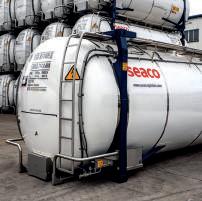
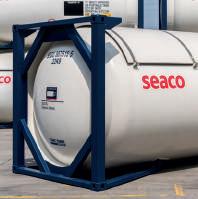
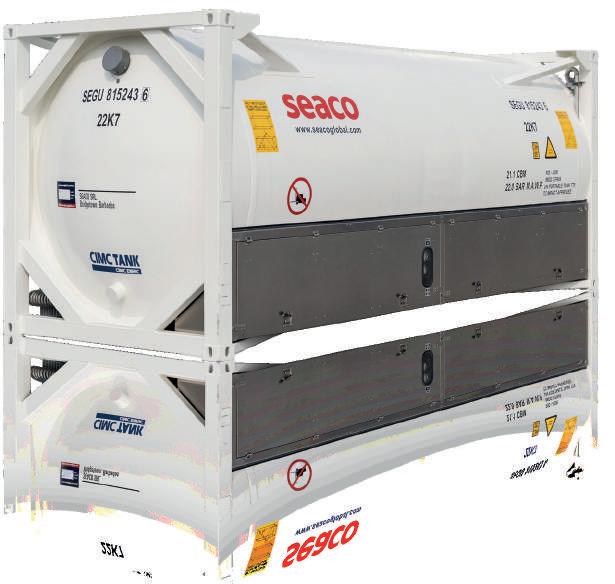
•

www.seacoglobal.com
RIGHT TANK FOR THE RIGHT CARGO
THE
offers a modern and diverse tank fleet, suitable for the storage and safe transportation of hazardous and non-hazardous bulk liquids,
and bulk powder products.
choose
gases (including Cryogenics)
Why
Seaco:
• Quality build
types
• Fully intermodal T11-T75 tank
team support
• Dedicated technical
plans
• Flexible leasing
Customised tank solutions available
network of specialised depots
• Global
YOUR
EQUIPMENT AVAILABLE FOR LEASE OR SALE WORLDWIDE Visit us on Stand F30
OVER 50 YEARS OF TANK CONTAINER LEASING EXPERTISE. VISIT SEACOGLOBAL.COM AND SPEAK TO
REGIONAL TANK SPECIALIST OUR MOST DIVERSE TANK FLEET



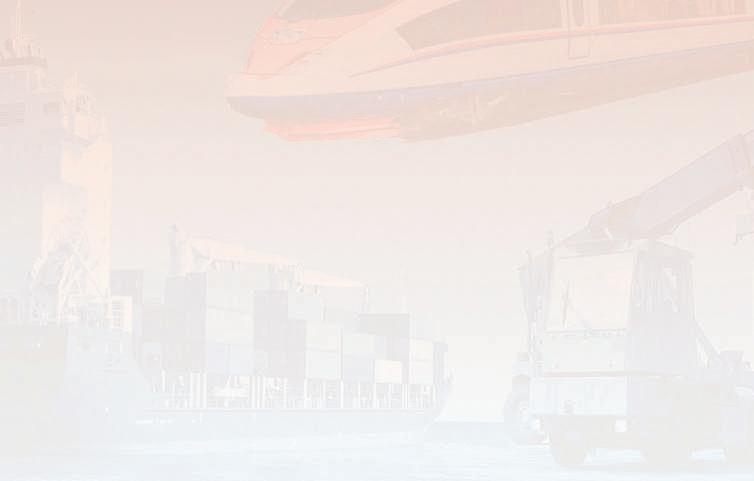


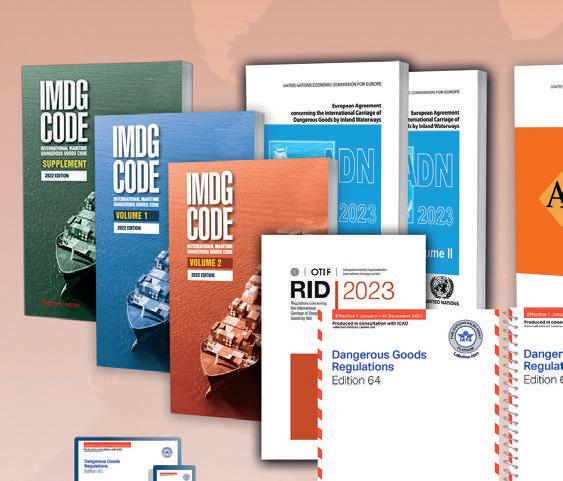
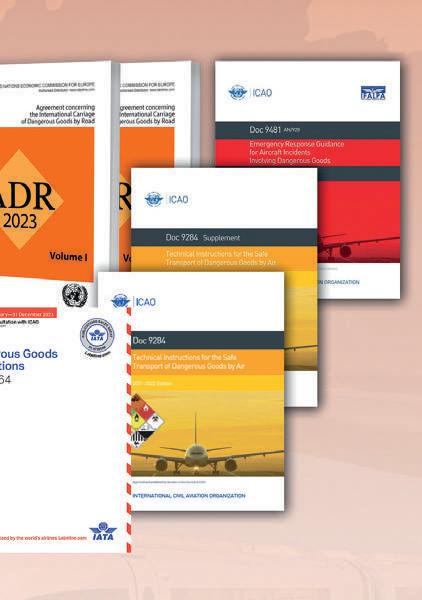

Tel: +44 (0)870 850 50 51 www.labeline.com Email: sales@labeline.com Dangerous Goods Regulations 2023 Don’t forget we also stock digital versions of your 2023 books








































































































 John Reynolds, Managing Director, Reynolds Training Services
John Reynolds, Managing Director, Reynolds Training Services




 Phil McEvoy, Managing Director, UM Terminals
Phil McEvoy, Managing Director, UM Terminals






 Authorized distributor for Wolters Kluwer – BowTieXP software
Authorized distributor for Wolters Kluwer – BowTieXP software
































































































